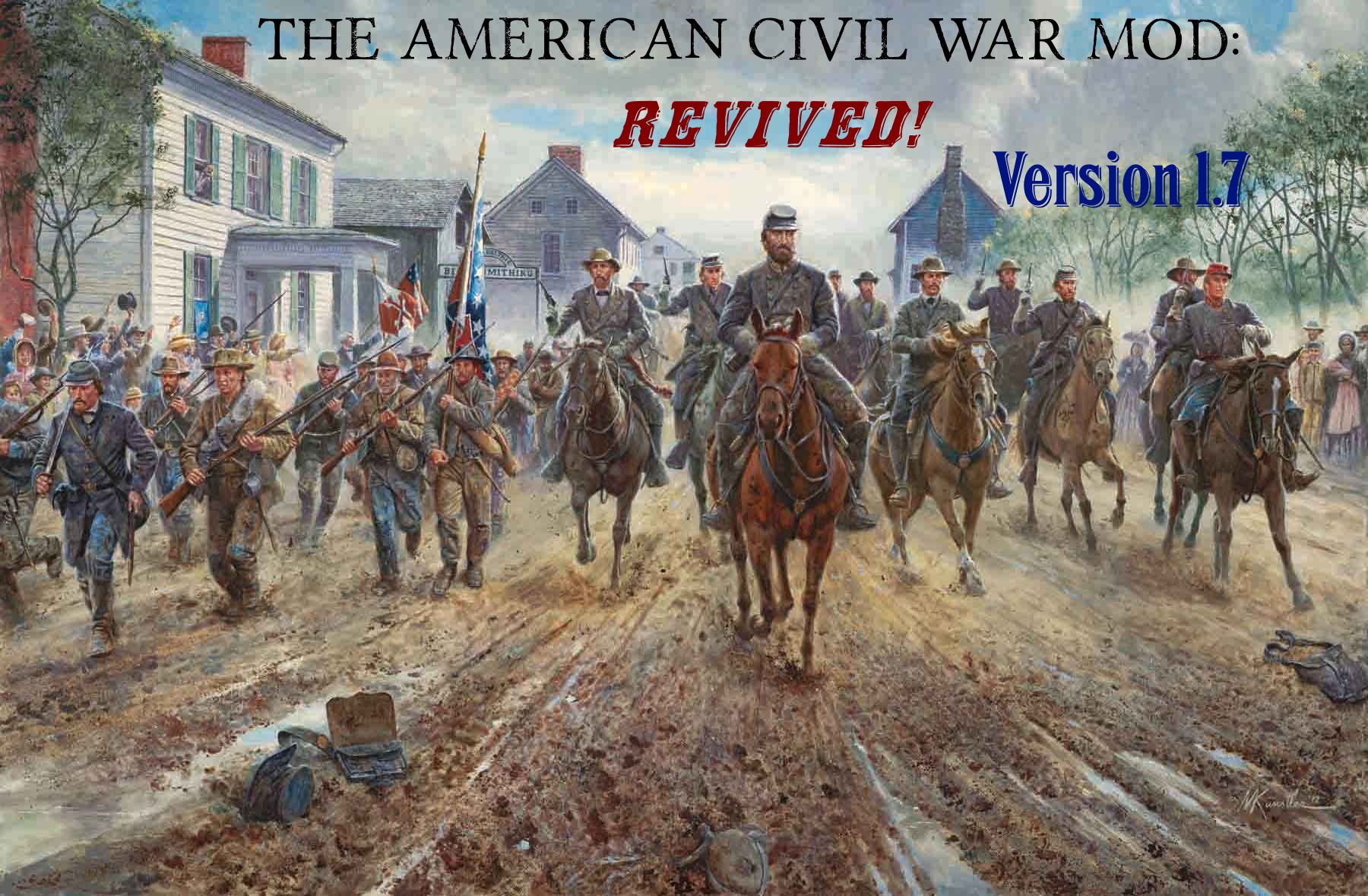
"In the present civil war—it is quite possible that God's purpose is something different from the purpose of either party— and yet the human instrumentalities, working just as they do, are of the best adaptation to effect His purpose". - Abraham Lincoln
- Make sure you delete any previous versions of the mod.
- Download the winrar package called, "The American Civil War Mod Revived v1.7", and save it to your desktop or another preferred destination that you can easily access.
- Open the package and extract the folder inside called, "The American Civil War Mod Revived", to your modules folder (C:\Program Files (x86)\Steam\steamapps\common\MountBlade Warband\Modules).
- Start Mount & Blade: Warband, select the mod from the drop down menu, and play!
You can join the mod's discord server here: Discord.gg
It has been a while since the last update, and we have been hard at work building upon and improving the mod in various different ways. The first we would like to mention, and the most noticeable improvement to the mod, is the many overhauled scenes and the new historical battlefields. Matsuri5 has made a great set of buildings and has even recreated many historical landmarks, and this has enabled me to sculpt much more authentic scenes where all the medieval houses and structures are replaced, and often times the terrain itself has been remade from scratch to look more like the real locations. Many of the locations, however, are in reality so vast in size, that we have had to scale things down to fit it in the game. So, for example, you will notice in cities that many of the landmarks are not in their actual real life locations. Instead they are placed in the general direction of where they would have stood historically, or in a location that looks good in the game. Similarly, the road layouts are not exact, but they are quite close to what we referenced on maps of the time. Some of the earlier work we did is not so detailed, since this has been a learning process, so some cities will appear much better than others. This will continue to be worked on as time goes on.
Without further ado, let's dive right into the good stuff!
The American Civil War Mod: Revived! v 1.7 Release Trailer - Mod DB
New Battlefields
Gettysburg
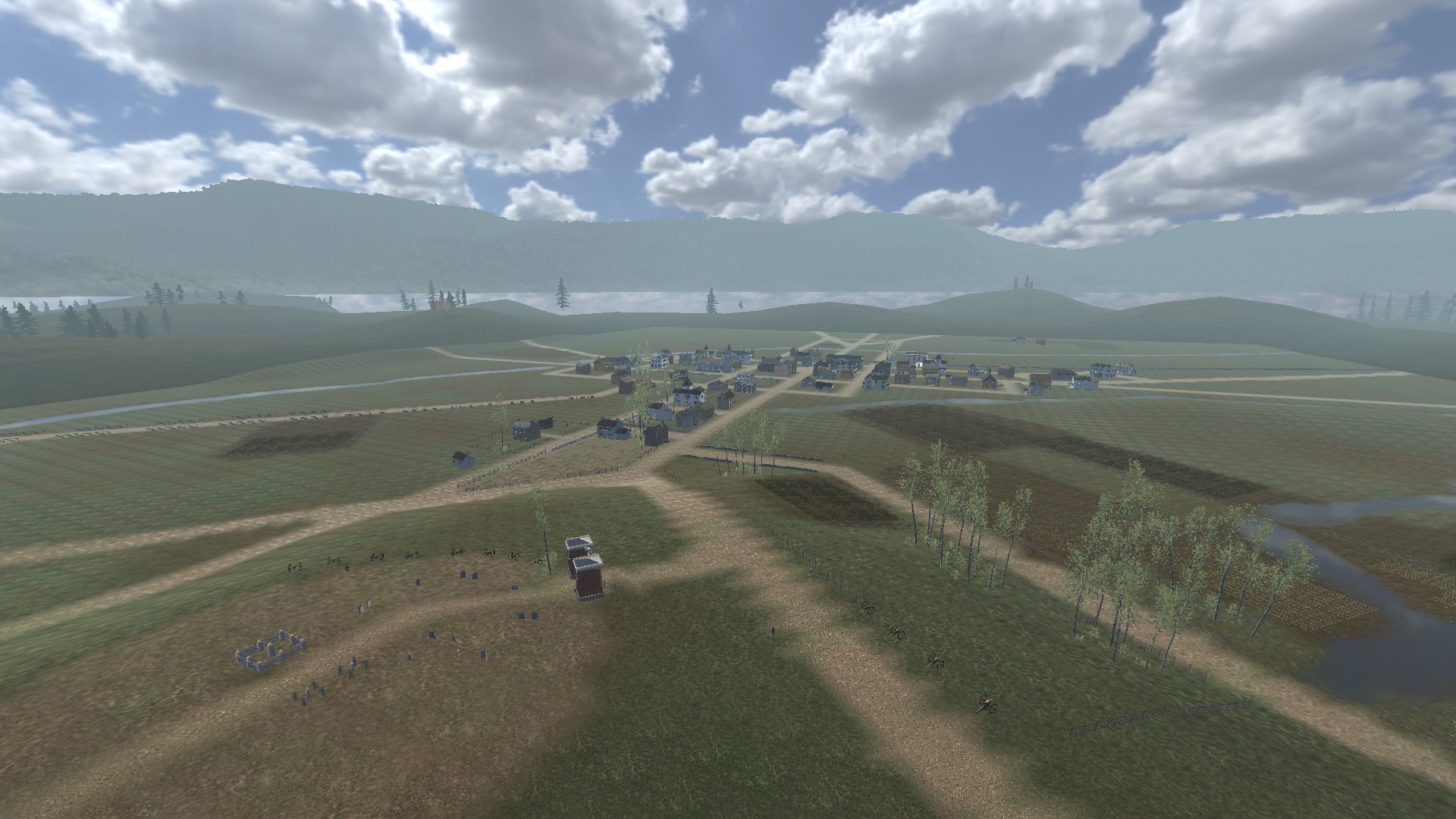
The Battle of Gettysburg, fought from July 1st - July 3rd, 1863, is arguably one of the most famous, well known, and well studied battles of not just the American Civil War, but also all of human history. Most of the fame surrounding the battle tends to focus on the fighting with renowned names such as Little Round Top, Devil's Den, the Peach Orchard, the Wheatfield, and Pickett's Charge. However, often overlooked is the fighting that took place earlier on in the battle on the first and second days, which happened outside of and through the town of Gettysburg, and onto the high ground behind it.
We have decided to base the recreation of this battlefield for the mod on the Confederate attack through the town of Gettysburg, towards Cemetery Hill. There is scattered resistance within the town, with the center of the Union defense placed upon Cemetery Hill. The map is one of the largest in the mod, and features a deadly fight through the streets of Gettysburg as well as fighting on large open fields and from behind fence lines. In reality, the town of Gettysburg is full of notable buildings, many of which still stand today. However the sheer number of them make it a bit impractical to try to recreate them all, so instead we have populated the city with generic houses and buildings, while still trying to follow the correct layout of property fences and the locations of the various structures. We have, however, included two landmark structures on the map.
The Evergreen Cemetery Gatehouse
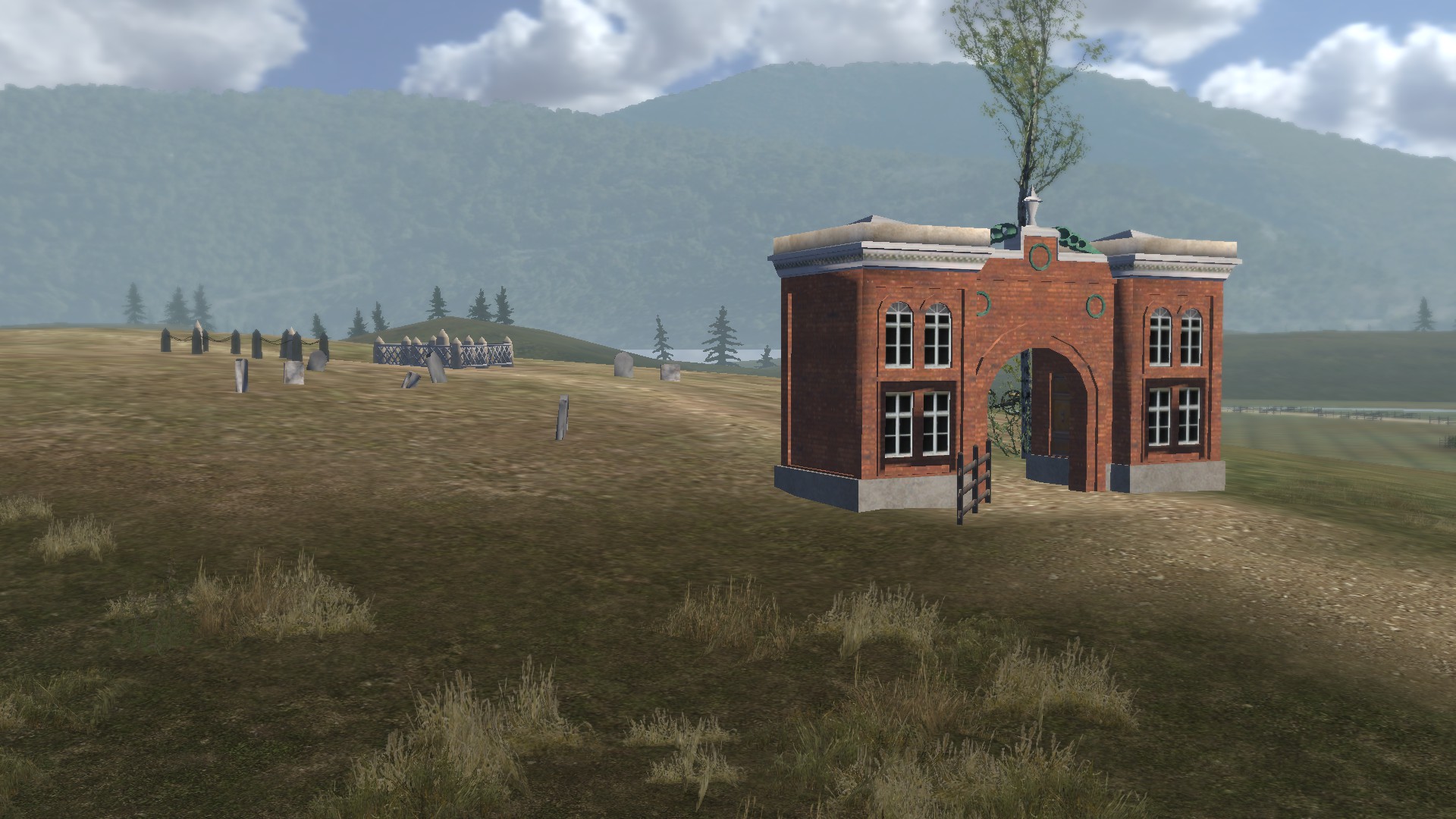
Stephen Decatur Button, a Philadelphia architect, designed the cemetery's gatehouse in 1855. Its cornerstone was laid by Reverend Samuel Simon Schmucker on September 1st, and local masons George and Henry Chritzman constructed the brick building in less than 3 months, at a cost of $1,025. The gatehouse served as the cemetery's office, and as the residence of its caretaker.
On July 1st, 1863, Major General Oliver Otis Howard recognized the enormous strategic advantage of the cemetery's high ground and lined his artillery along what came to be known as "Cemetery Hill", facing north and west. On the opposite side of Baltimore Pike, his artillery faced north and east. Howard made the cemetery's gatehouse into the Union XI Corps headquarters, and occupied the building for all three days of the battle.
At dusk on July 2nd, the brigade of Louisiana Tigers under Confederate Brigadier General Harry T. Hays, and three North Carolina regiments under Colonel Isaac E. Avery, commenced the Battle of East Cemetery Hill. The Confederates charged the Union artillery batteries from the east and though they were initially successful in overrunning the batteries, they were repelled by the forces of Colonel Andrew L. Harris and Colonel Leopold von Gilsa of the Union XI Corps, alongside reinforcements from the 58th and 119th New York regiments of Krzyżanowski's brigade and a II Corps brigade under Colonel Samuel S. Carroll.
The Lutheran Seminary
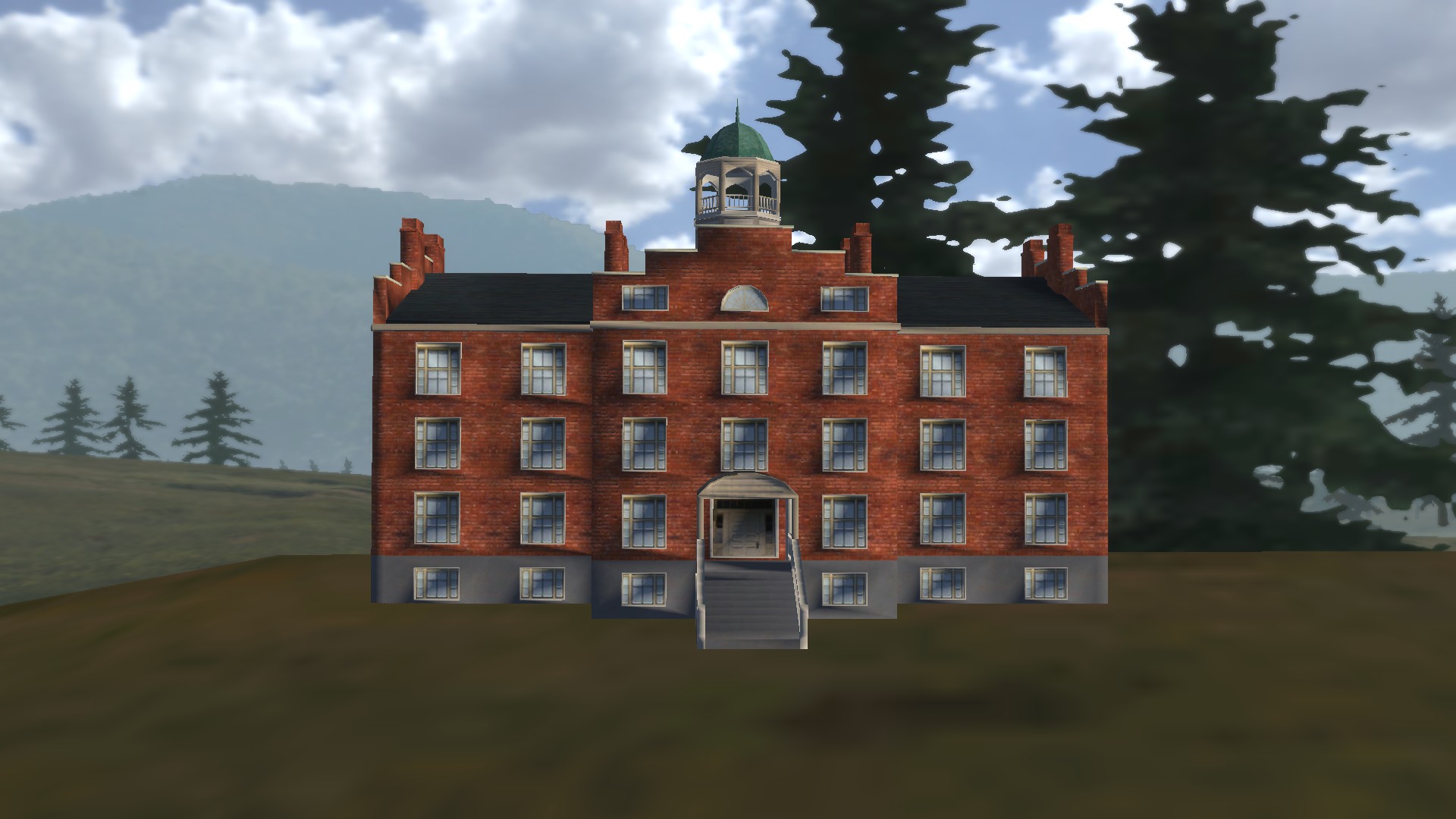
The "Gettysburg Theological Seminary" was established on August 1st, 1826. Samuel Simon Schmucker was elected the first professor and the seminary opened with eight students on September 5th, 1826, at it's first home in the Gettysburg Academy building. In 1832, the seminary moved to its first building on the ridge west of the borough, which it now lends its name to; Seminary Ridge.
During the battle of Gettysburg, the seminary became a focal point of action on the first day of battle, on July 1st, 1863. From the building's cupola, Brigadier General John Buford both observed the opening of the battle to the west of Seminary Ridge and witnessed the arrival of the I Corps under Major General John Reynolds marching to his relief from the south. By the late afternoon, the Union lines on McPherson's Ridge, west of the seminary, were forced back to Seminary Ridge by Confederate troops of Heth's and Pender's Divisions. Before the Union troops could dig in on Seminary Ridge, another attack by Pender's Division broke their line. The I Corps streamed across Seminary Hill and through the town of Gettysburg, covered by a delaying action by the famed Iron Brigade. The Confederate Army of Northern Virginia occupied the seminary grounds and held them until the Army's retreat on July 4th, 1863.
There was no further infantry combat on the seminary grounds, but it continued to play a prominent role in the battle. The seminary building had begun to be used as a field hospital for soldiers of both armies during the first day, and this continued throughout the engagement and after the battle was over. Confederate artillery was posted on the hill and participated in action against Union artillery stationed on Culp's and Cemetery Hills on the 2nd and 3rd of July. Confederate soldiers also ransacked the house of seminary President Schmucker, who was an outspoken abolitionist, and used the seminary building cupola as a lookout.
In the mod, the Lutheran Seminary is actually a prop on the background of the scene, because the map is not large enough to include Seminary Ridge. Instead, it can be seen when looking in the direction of the ridge, as you can see in the example below.
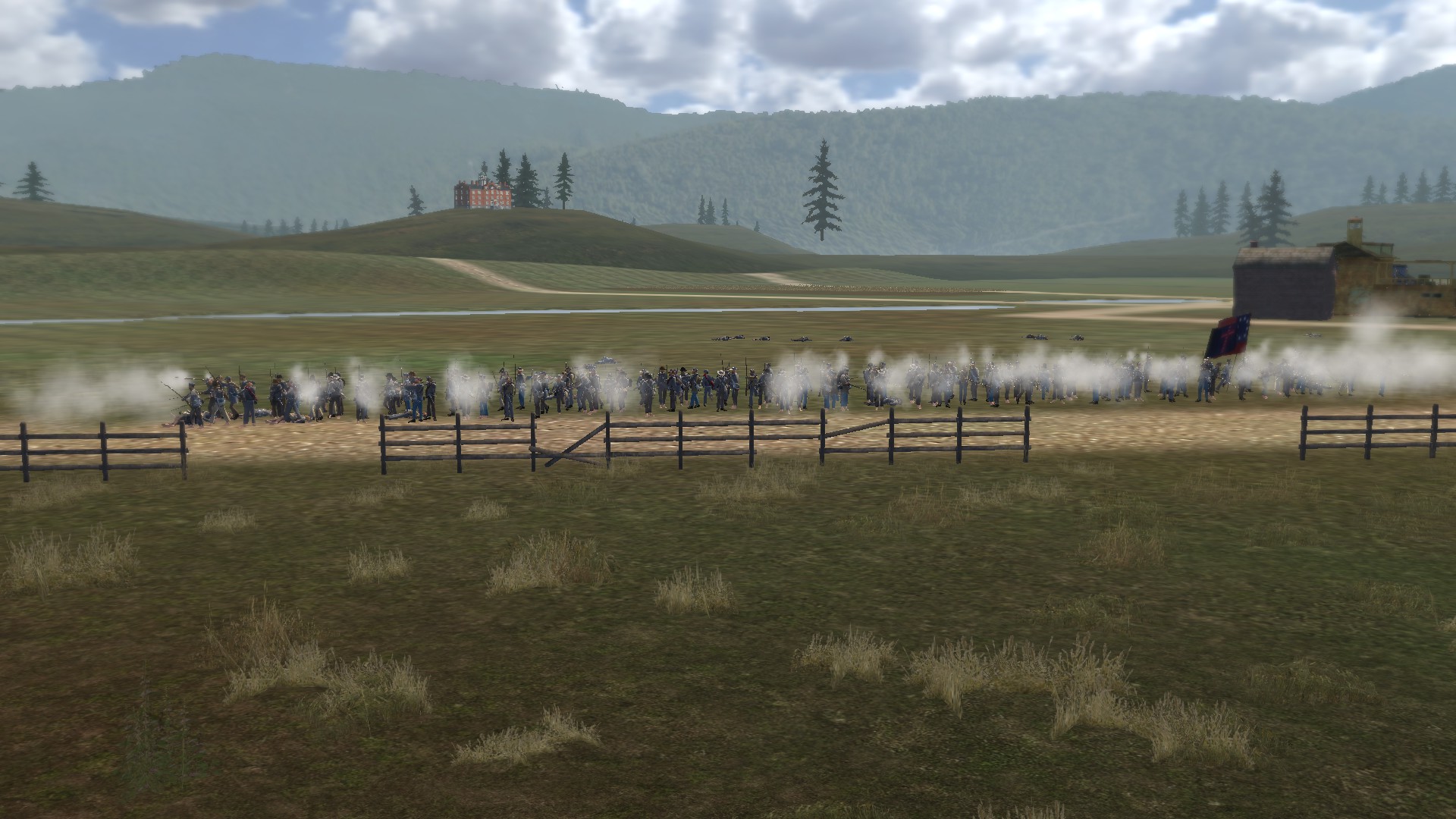
Here is a small preview of a Confederate attack on Cemetery Hill on the new Gettysburg map, from the perspective of both sides. Due to the limitations of the AI, playing as the attackers will always provide the best experience.
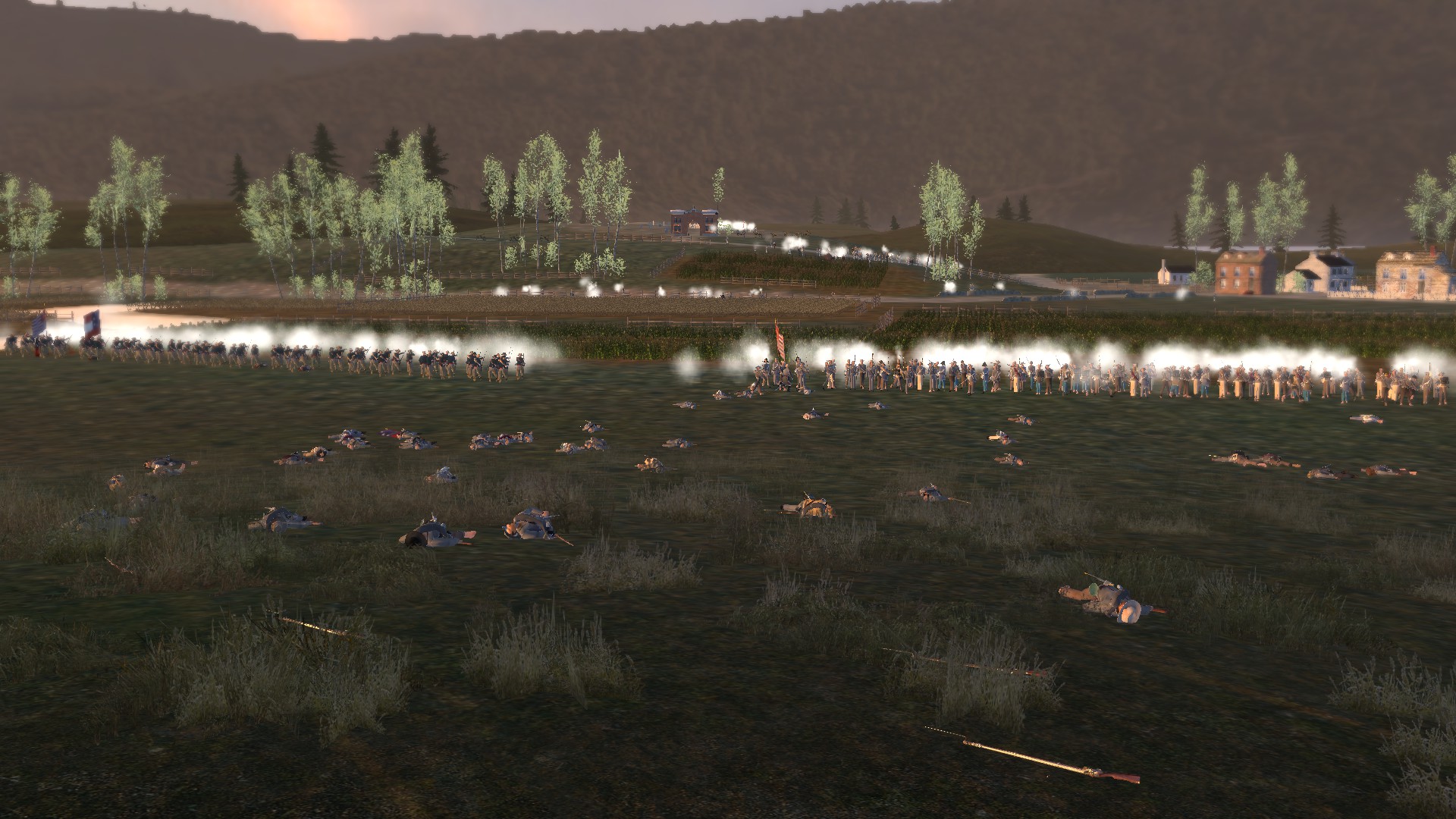
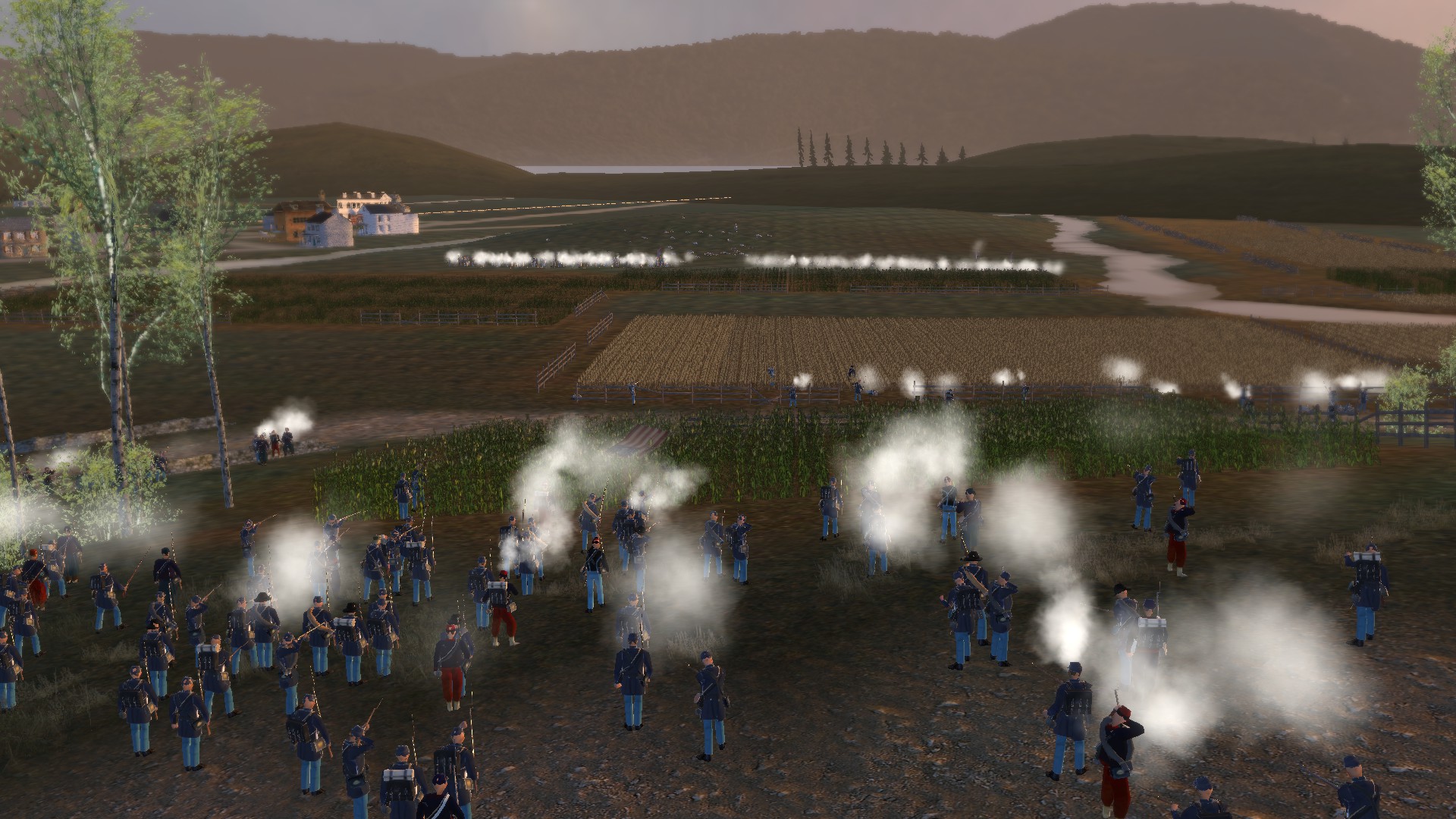
Shepherdstown
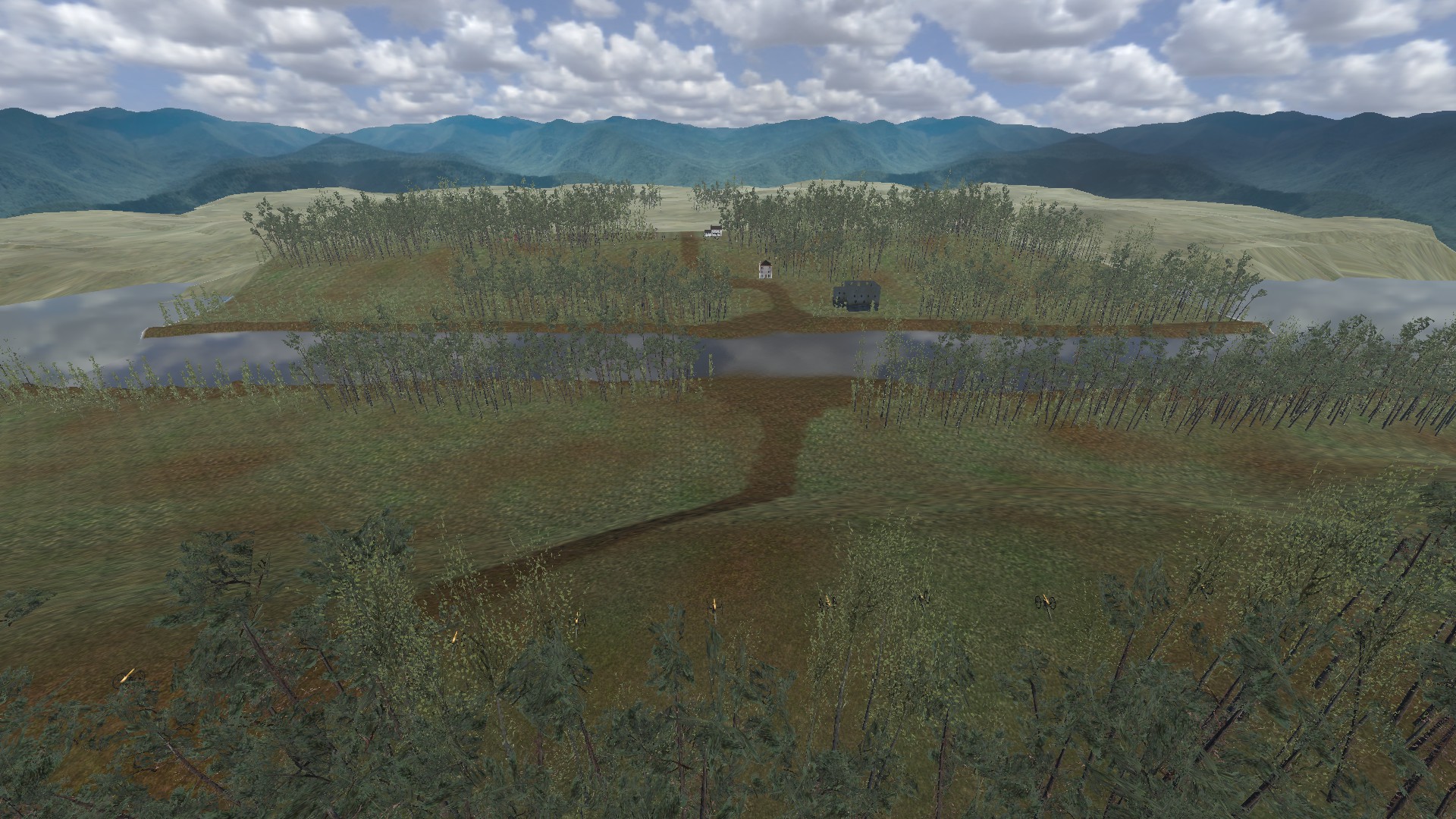
During our research for the mod, I decided I wanted to replace the scene for one of the locations called Morgantown. I learned that Morgantown actually didn't play any significant role in the Civil War, though it was important during the 18th century. Morgantown has instead been renamed to Shepherdstown and the scene for it is based upon the battle that took place there.
On the evening of September 18th, 1862, after the Battle of Antietam, Confederate General Robert E. Lee's Army of Northern Virginia began withdrawing across the Potomac River. Lee left behind a rearguard of two infantry brigades and 44 guns under his chief of artillery, Brigadier General William N. Pendleton, to hold Boteler's Ford. On September 19th, Union Brigadier General Charles Griffin sent the 1st U.S. Sharpshooters and the 4th Michigan across the Potomac River at Boteler's Ford shortly before dusk. They attacked Pendleton's rearguard, capturing four artillery pieces before being recalled. Pendleton fled the field and incorrectly reported to General Robert E. Lee that he had lost all 44 guns of his artillery reserve, when in fact his men had stayed behind and saved nearly all of the guns.
Early on September 20th, Union Major General Fitz John Porter sent two brigades across the Potomac River on a reconnaissance-in-force. Major Charles Lovell's brigade of Regulars encountered Major General A.P. Hill's "Light Division" about a mile from the river. While the Union troops withdrew back to the ford, A.P. Hill's men attacked under heavy artillery fire, which inflicted terrible casualties on their ranks. Colonel James Barnes' brigade was ordered to the top of the bluffs to cover the retreat, and two more Union brigades were ordered to cross to the Virginia side of the river. Among the other Union regiments getting their baptism by fire that day was the 20th Maine Volunteer Infantry. Ten months later, they would achieve immortal fame for their crucial stand on Little Round Top at the Battle of Gettysburg. Lieutenant Colonel Joshua Lawrence Chamberlain, rode a borrowed horse partway across the ford to direct reinforcements who were being sent to cover the withdrawal. A bullet struck his horse, and dumped him into the river, but he managed to get himself to the bank unharmed. The 20th Maine performed well in their first combat, despite some initial fear and confusion. Only three men were wounded; one had accidentally shot himself.
After a violent clash along the heights bordering the river, Porter ordered a withdrawal. However, Colonel Charles Mallet Prevost of the inexperienced 118th Pennsylvania refused to retire until orders were received through the proper chain of command. The messenger sent to the 118th delivered the orders to a line officer, who relayed them to the colonel. Men from other regiments also yelled across a ravine to relay the same orders. When word reached Colonel Prevost, he spurned the messages, saying, "I do not receive orders in that way. If Colonel Barnes has any message to give me, let his aide come to me."
Not only were they facing A.P. Hill's veterans, but half of the Enfield rifles issued to the 118th had defective mainsprings, and the hammers could not strike hard enough to pop the percussion caps. Some men, dazed by the shock of their first combat, were not even aware that their rifles were not firing and rammed down cartridge after cartridge. As men gave up and tossed away their useless weapons, others grimly held on and pounded on the hammers with rocks to force them to fire. Officers searched desperately for rifles dropped by the dead or wounded, hoping to find some that still worked. Colonel Prevost grasped the regimental flag, waving the banner in an attempt to steady his men and urge them forward. Colonel Prevost fell wounded when a musket ball slammed into his shoulder, and command passed to Lieutenant Colonel James Gwyn. An aide brought new orders to retreat and Gwyn made no objections to the manner of their arrival and heeded them. The inexperienced men of the 118th broke and ran in a panic under the pressure of the Confederate attack, many rushed and tumbled down the steep hillside. The Confederates reached the edge of the cliffs and fired upon the fleeing soldiers as they streamed back across the river. In this engagement, their first time under fire, the 118th Pennsylvania were attacked by four Confederate brigades and suffered 36% losses. Three officers and 60 men had been killed, 101 were wounded and 105 were missing. Their 269 casualties constituted the majority of the 361 Union men lost during the battle.
The total Union dead and wounded at Shepherdstown makes it the bloodiest battle fought in what would become the state of West Virginia, and the battle convinced both army commanders that the Maryland Campaign was over. George McClellan decided that an active pursuit of the Confederate army was not possible and established a defensive posture along the Maryland bank of the Potomac River, while Robert E. Lee chose to abandon his army's movement back into Maryland.
In the mod, the Shepherdstown map is a river crossing battle. There is a ford in the middle of the map and the defenders occupy the opposite river bank, the high ground beyond, and they will also shoot from inside another landmark.
The Cement Mill
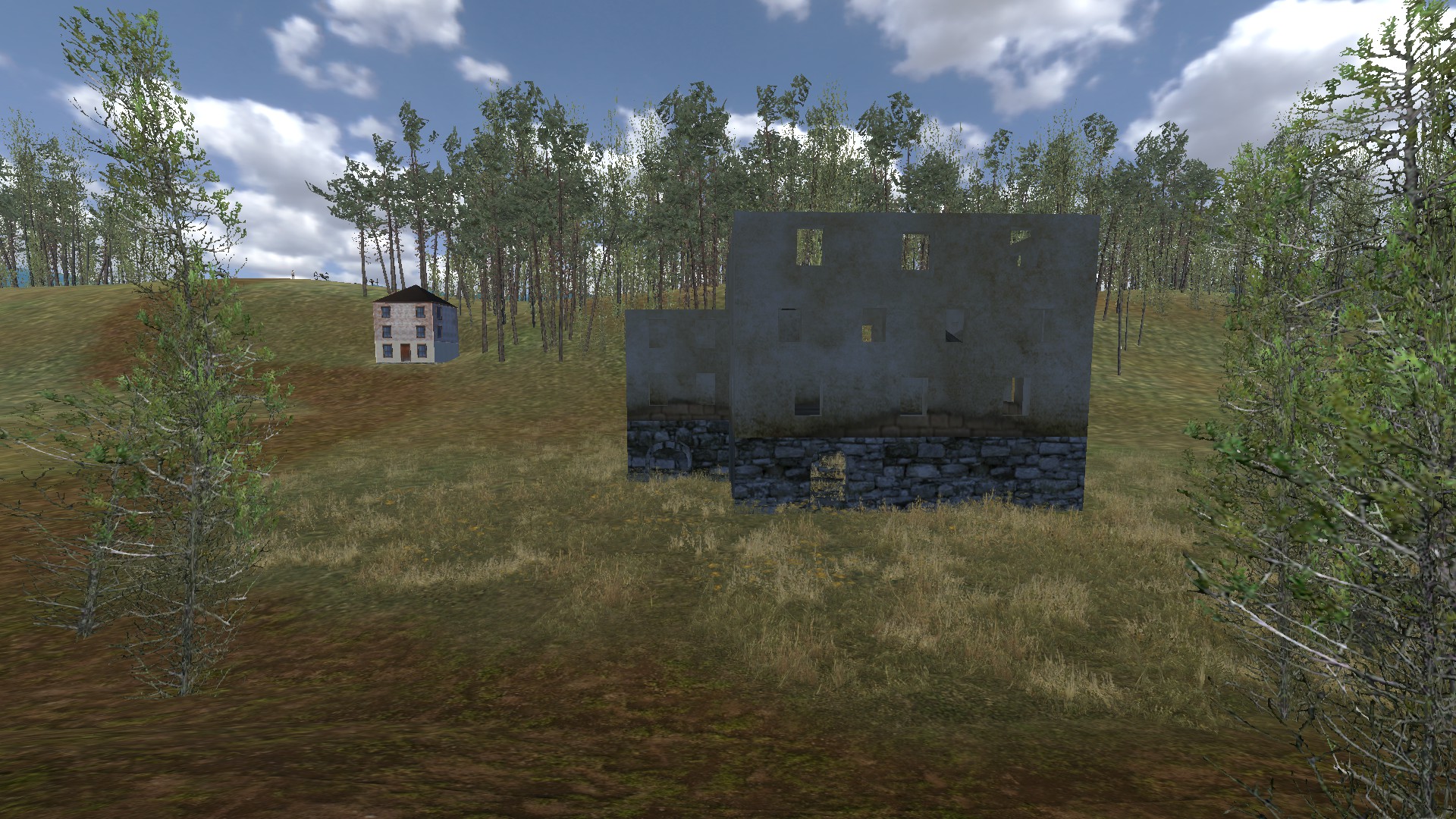
Because natural, or hydraulic, cement is waterproof and hardens underwater, it was used in large quantities in the building of the C&O Canal. Cement mills sprang up along the Potomac River, and the mills at Shepherdstown were among the largest. Built into a nearby hillside, the first kiln was in operation by April 1829. During the Civil War, the Potomac River formed a natural barrier between the Union and the Confederacy, and because most of the bridges were burned at the onset of the war, river fords were often the only access into enemy territory, and were heavily guarded on both sides. The mill's proximity to Boteler's Ford would therefore put it in a precarious position. The cement mill also offered protection for Confederate soldiers firing at their enemy on the Maryland side of the river, and so the 13th Regiment Massachusetts Volunteers burned the mill in August 1861. In 1862, the cement mill was placed directly in the path of the war when the Union and Confederate armies clashed at the Battle of Shepherdstown. During the battle, Confederate soldiers fired from the cement mill's windows, and Union soldiers from the 118th Pennsylvania took cover by the cement mill and nearby kilns. There, they had to dodge not only Confederate bullets but also their own artillery. The Union artillery gunners across the river were cutting the fuses too short, and shells exploded among the men trying to take shelter along the riverbank. One Union shell alone killed 12 or 15 of their own soldiers, and several of the men rushed with a white flag to the Confederate lines to escape the friendly fire.
Here you can see two examples of Confederate soldiers, controlled by the AI, successfully shooting from the windows of the cement mill.
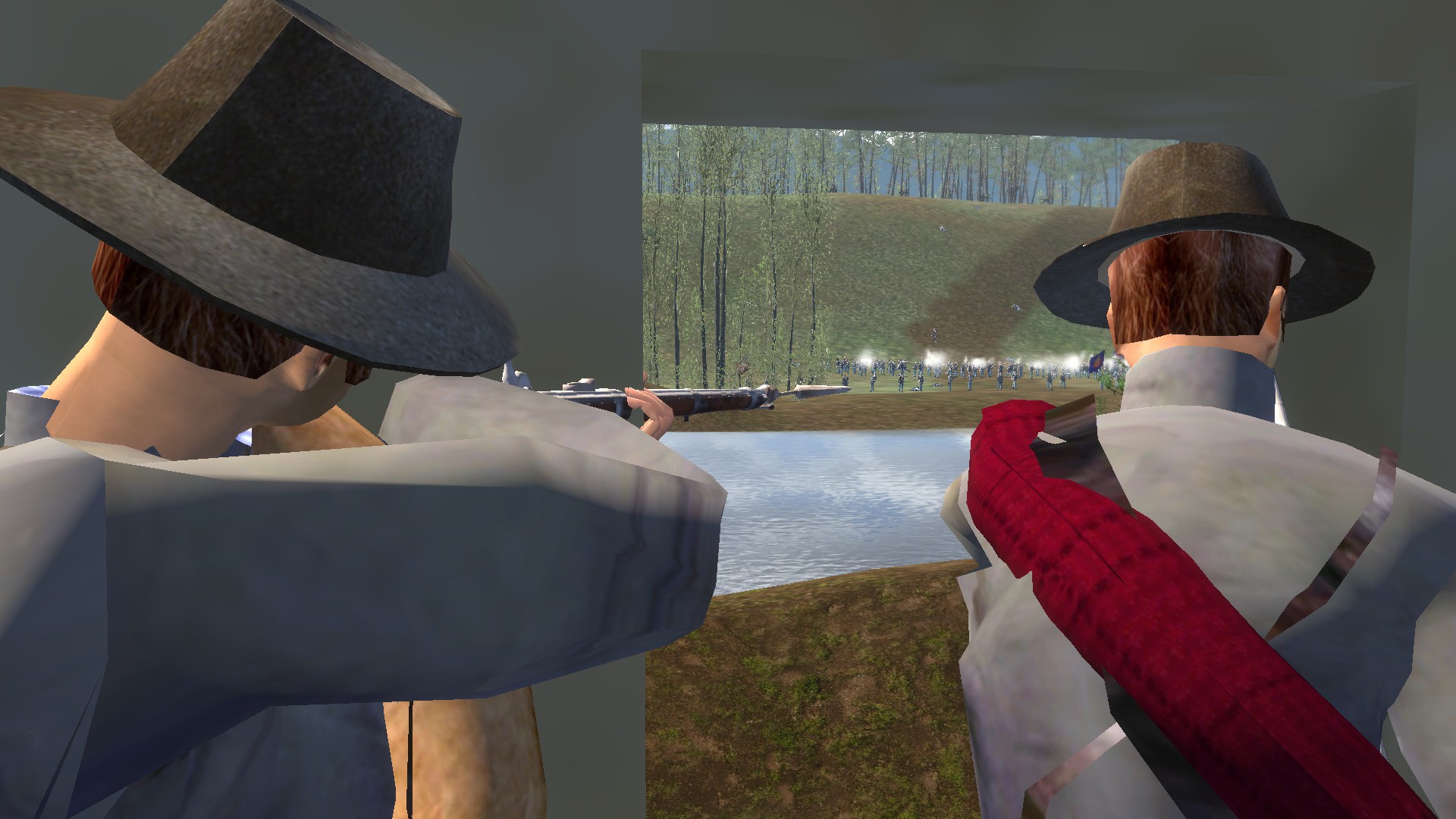
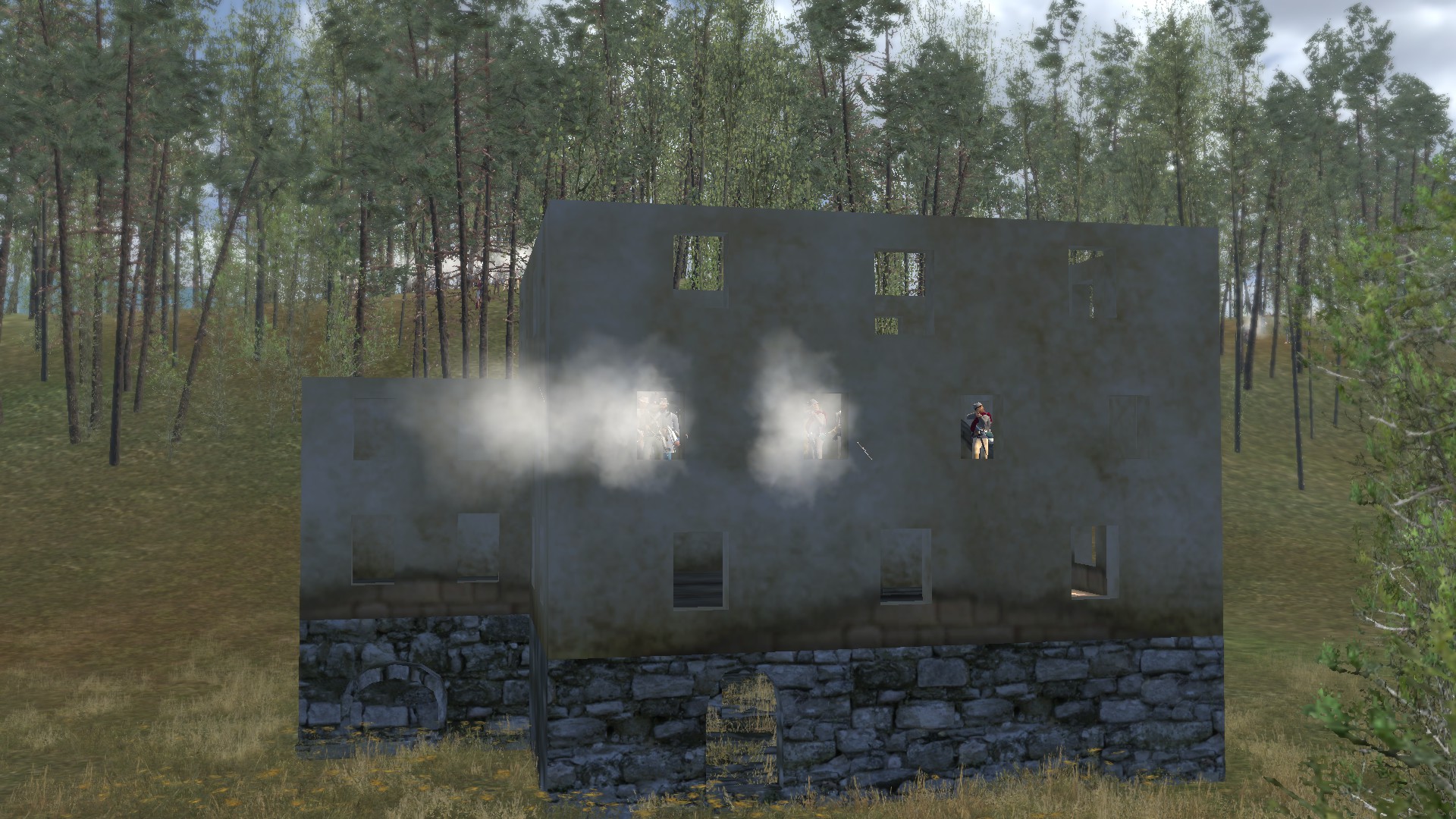
Here is a view of the battle from the Union perspective.
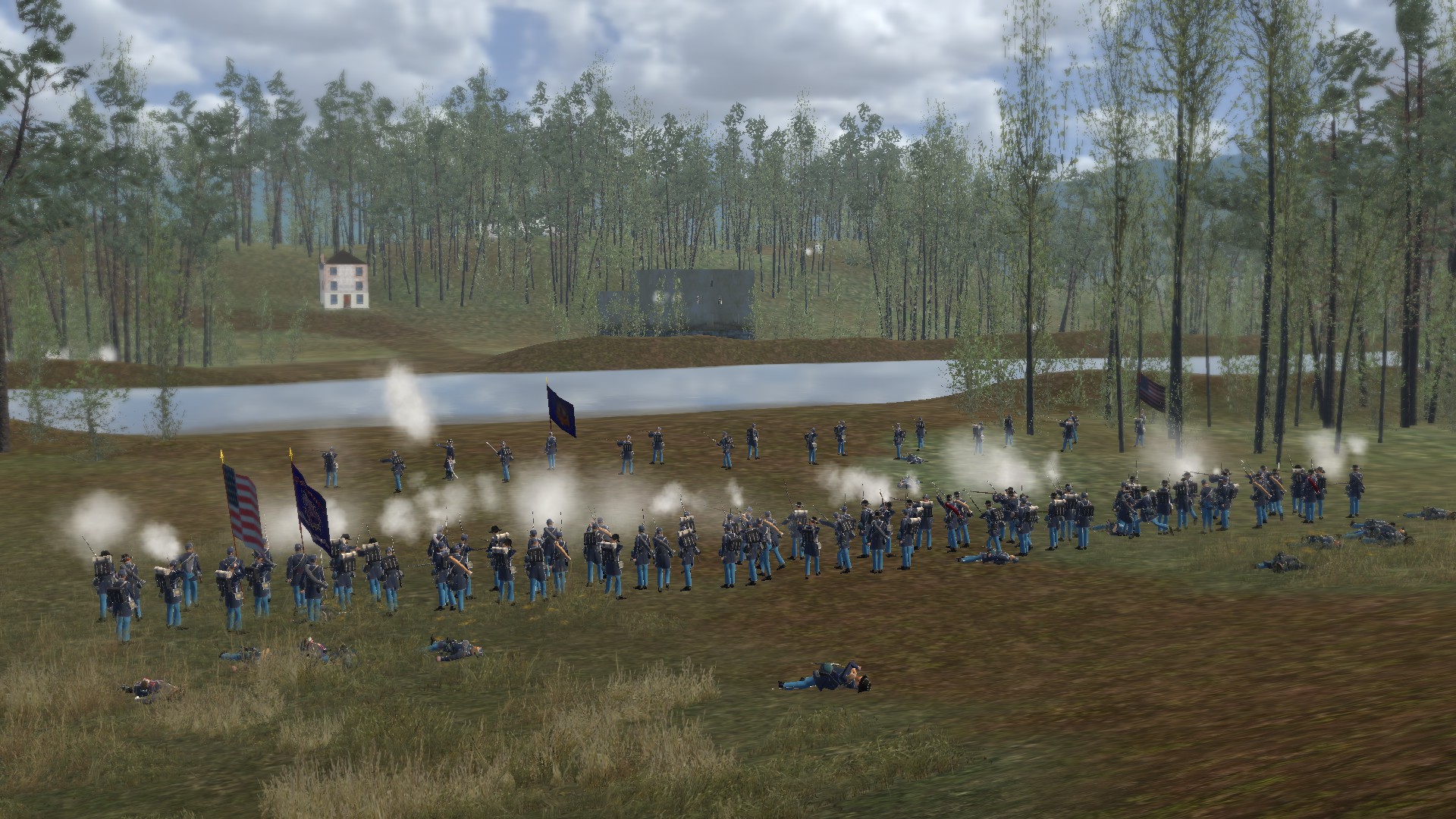
Perryville
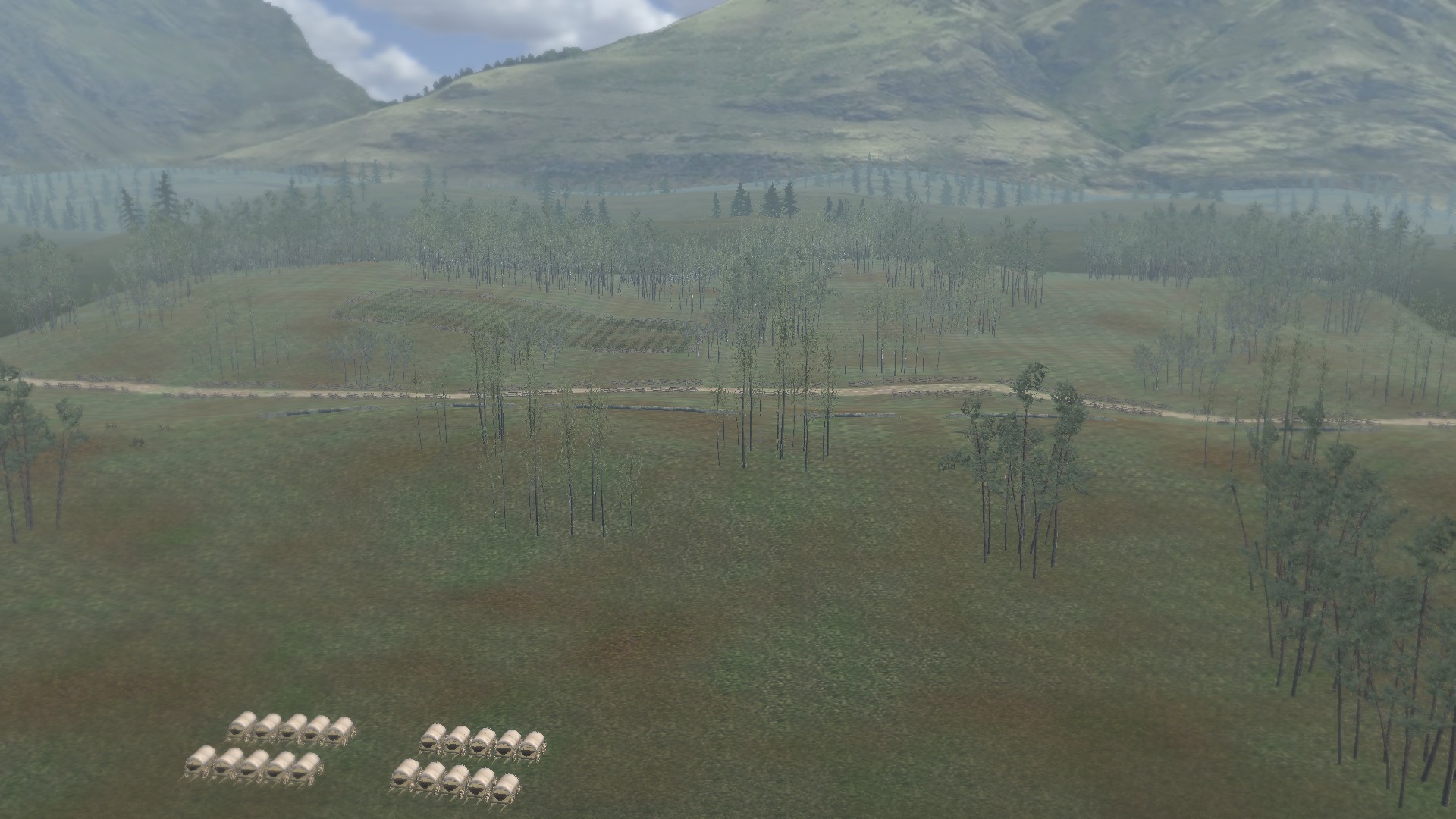
In our research for an appropriate battle to take the place of the siege scene at the city of Frankfort, we learned that Frankfort itself never saw any real combat, however a pitched battle was fought nearby that decided the fate of Frankfort, and inevitably all of Kentucky.
On October 7th, 1862, Union Major General Don Carlos Buell's army converged on the small crossroads town of Perryville in three columns, in pursuit of Confederate General Braxton Bragg. Union troops first skirmished with Confederate cavalry on the Springfield Pike before a more general engagement commenced on Peters Hill, when the Confederate infantry arrived. At dawn the next day, fighting began again around Peters Hill as a Union division advanced up the pike, halting just before the Confederate line. After noon, a Confederate division struck the I Corps of Major General Alexander M. McCook on the Union left flank, and forced it to fall back. When more Confederate divisions joined the battle, the Union troops made a stubborn stand, counterattacked, but were finally forced to withdraw, with some units being routed.
Major General Buell was several miles behind the fighting, and was unaware that a major battle was taking place. Because of this, he did not send any reserves to the frontline until late in the afternoon. The Union troops on the left flank were reinforced by two brigades and managed to stabilize their line, bringing the Confederate attack to a sputtering halt. Later, three Confederate regiments assaulted the Union division on the Springfield Pike but were repulsed and retreated into Perryville. Union troops pursued, and skirmishing occurred in the streets until dark. By that time, Union reinforcements were threatening the Confederate left flank. General Bragg, short of men and supplies, withdrew during the night and continued the Confederate retreat by way of Cumberland Gap into East Tennessee. Following the Battle of Perryville, the Union maintained control of Kentucky for the rest of the war.
The Battle of Perryville was one of the bloodiest battles of the American Civil War, and it was the largest battle fought in the state of Kentucky. Union casualties totaled 4,276 including 894 killed, 2,911 wounded, and 471 captured or missing. Confederate casualties totaled 3,401 including 532 killed, 2,641 wounded, and 228 captured or missing. Private Sam Watkins of the 1st Tennessee remarked of the battle, "I was in every battle, skirmish and march that was made by the First Tennessee Regiment during the war, and I do not remember of a harder contest and more evenly fought battle than that of Perryville. If it had been two men wrestling, it would have been called a "dog fall." Both sides claim victory—both whipped."
There are no landmarks on this scene, but worth mentioning is that the actual Perryville battlefield is so massive, with much of it being rolling hills and open fields, we had to choose a specific place on the battlefield, and a moment from within the battle, to try to replicate. The most suitable was the action on Starkweather's Hill, which is considered to be the "High Water Mark" of the battle. Behind a stone wall along the hill, the Union line repulsed four Confederate assaults over three hours, and this action is considered the bloodiest of the battle as well as the most crucial.
Below are two examples of the new map in action, the first being from the Union perspective on Starkweather's Hill, the other from the Confederate perspective on Open Knob.
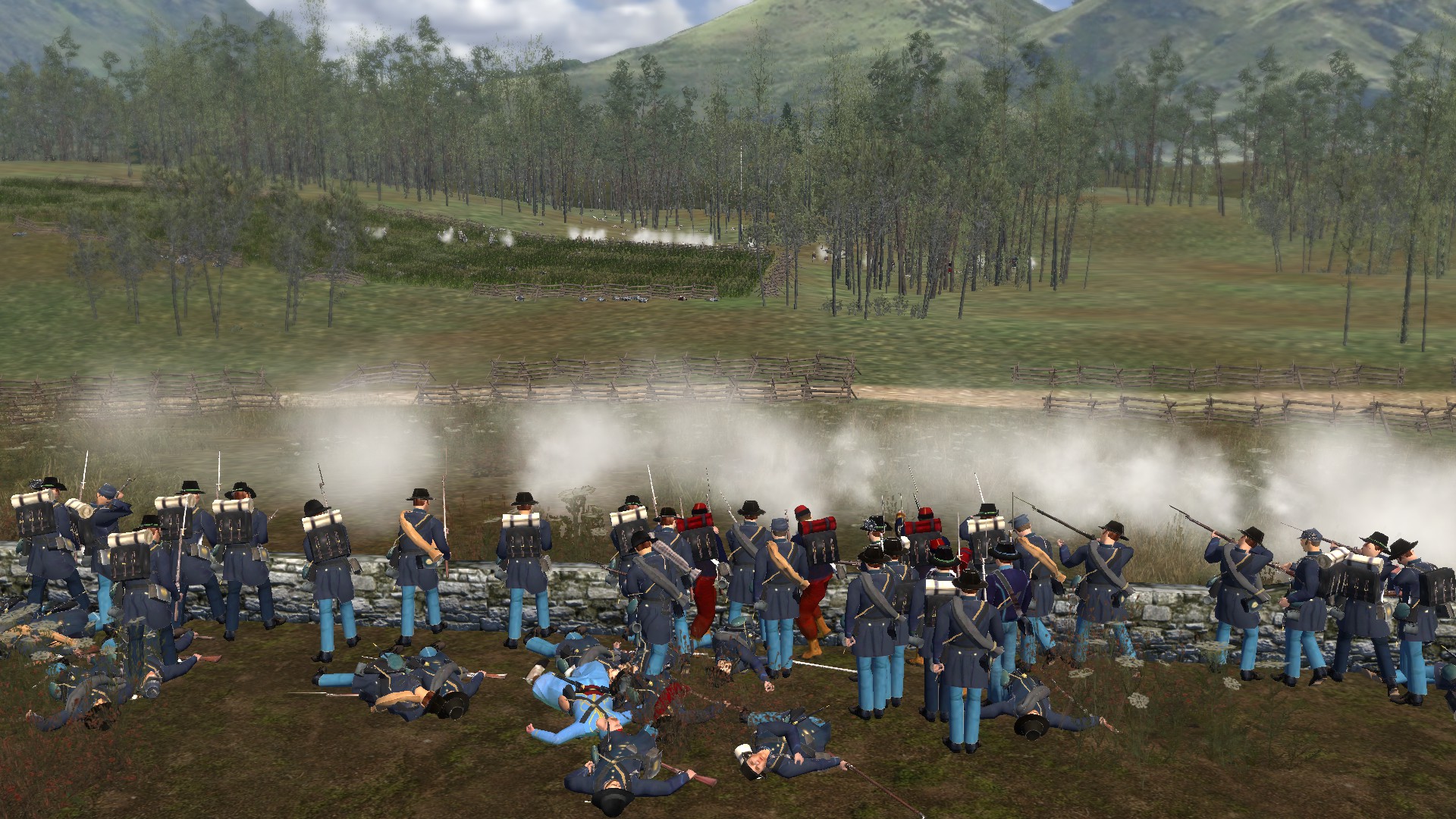

Missionary Ridge
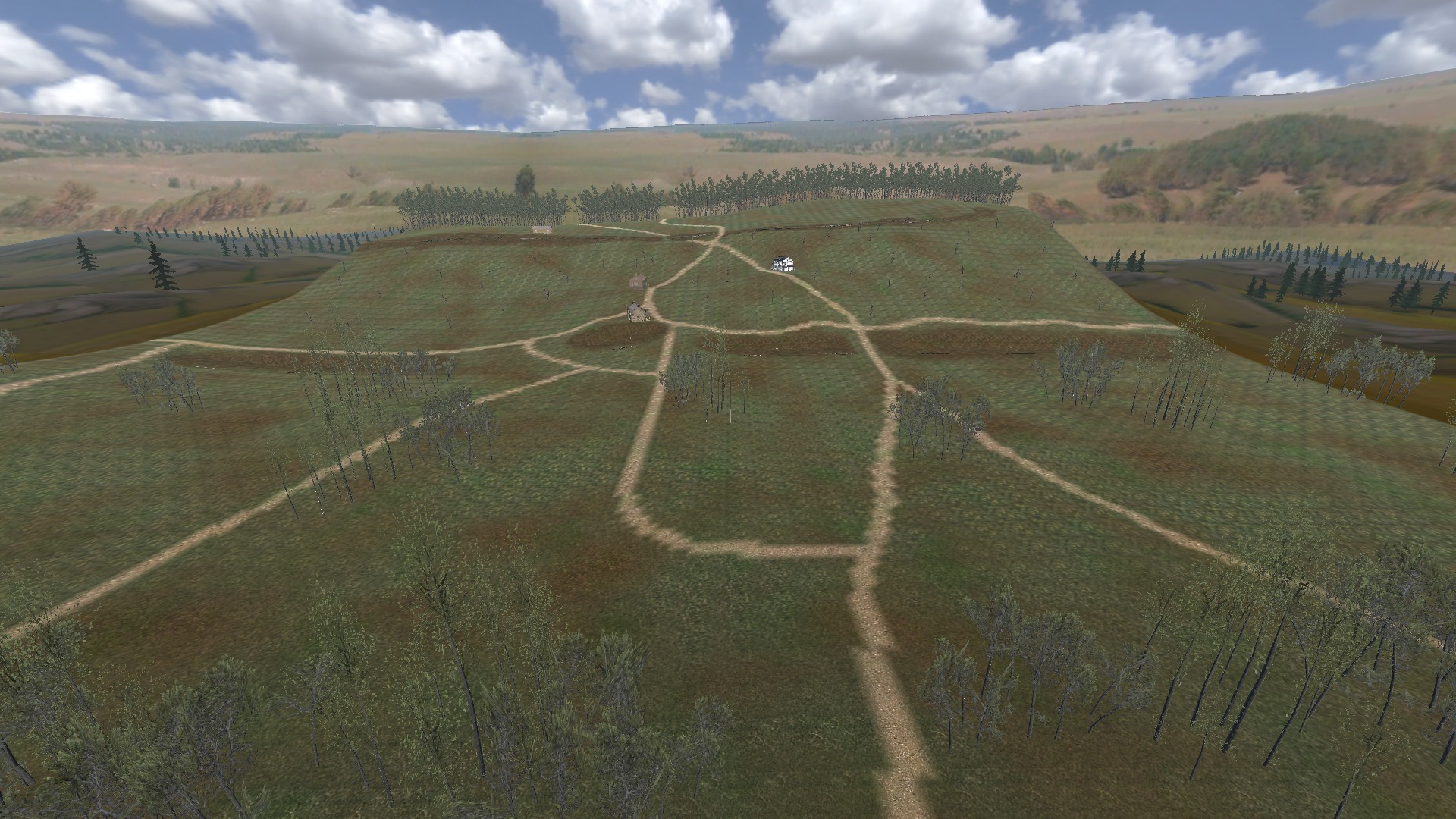
Chattanooga is another location in the mod that we wanted to make a new scene for, but in our research we learned that the combat at Chattanooga was made up of a lengthy siege, as well as a series of battles, rather than one decisive action. So again we chose a specific moment and a place on the battlefield that would be most appropriate to a siege scene in the mod. The Battle of Missionary Ridge made the most sense because it involved an attack on entrenched positions, and was the breakthrough moment for the Union that ended the siege of Chattanooga. The map is based on Union General George Henry Thomas' attack on the Confederate center, following the path of Brigadier General Thomas J. Wood's division.
Following the Union victory in the Battle of Lookout Mountain on November 24th, 1863, Union forces in the Military Division of the Mississippi under Major General Ulysses S. Grant assaulted Missionary Ridge. On the morning of November 25th, elements of the Union Army of the Tennessee commanded by Major General William T. Sherman attempted to capture the northern end of Missionary Ridge, known as Tunnel Hill, but were halted by fierce resistance from the Confederate divisions of Major Generals Patrick Cleburne, William H.T. Walker, and Carter L. Stevenson. In the afternoon, General Grant was concerned that Confederate General Braxton Bragg was reinforcing his right flank to counter General Sherman, so he ordered the Army of the Cumberland, commanded by Major General George Henry Thomas, to advance and seize the line of Confederate rifle pits on the valley floor, then stop there to await further orders. The Union soldiers moved forward and quickly pushed the Confederates from the first line of rifle pits, but were then under heavy fire from the Confederate rifles further up the ridge.
The 100 Confederate cannons that lined the top of the ridge initially failed to hit many of their enemies during the Union charge, but once the Union soldiers stopped at the rifle pits, the Confederate artillery began to zero in on them. The Confederate riflemen also fired upon them from the top of the ridge, inflicting a rising number of Union casualties. After several minutes, some Union commanders ordered their men forward to get out of the worst of the Confederate fire. Brigadier General August Willich's skirmishers started advancing up the ridge without orders. Deciding that following them was preferable to being killed in the rifle pits, Willich gave orders to advance, although several of his units were already doing so. Seeing this, Major General William B. Hazen and Brigadier General Samuel Beatty also ordered their first lines up. When Brigadier General Thomas J. Wood reached the rifle pits, the men in the second line begged him to order them up as well, so Wood sent them forward.
Grant was shocked when he saw the Union troops climbing the ridge. He first asked General Thomas, then General Granger, who had given the orders. Neither general claimed responsibility, but Granger replied, "When those fellows get started, all hell can't stop them." Granger then sent a courier to Wood allowing him permission to take the ridge top, if he thought it possible. Several messengers went out at about this time with conflicting orders, leading to more confusion. This resulted in delays, disorganization, and unnecessary losses to the Union in their initial attacks.
The Confederate line first cracked at Bird's Mill Road, at about 5:00 p.m. Since General Bragg had not provided for a tactical reserve and the narrow ridgetop left no place for one, his defenses were only a thin crust. To seal off the breach, the Confederate generals were placed in a dilemma. When Union troops attacked their flank, they had to pull regiments out of their front line for a counterattack. This weakened the front of the Confederate defenses at the same moment that Union brigades were swarming up to the crest of the ridge. One of Willich's regiments, joined by two of Hazen's, worked its way within 50 yards of the Confederate breastworks. Protected by a roll of ground, they crept closer, then with a rush they leapt over the defenses belonging to Colonel William F. Tucker's brigade. Taken by surprise, the nearest defenders surrendered or fled for their lives. The Union field officers quickly took advantage of the situation, swinging their regiments to the right and left, and then began rolling up the Confederate line. Tucker bravely rallied his men, but by this time, Willich and Hazen's men were flooding over the breastworks. Some Confederate soldiers resisted stubbornly, but many panicked and fled when they realized that Union troops were bearing down on them from the flank. The northward Union advance was only stopped by the stout fighting of Walthall's brigade and the coming of nightfall.
By 6:00 p.m., the center of Bragg's line had broken completely and the Confederate soldiers had fled in panic, requiring the abandonment of Missionary Ridge and a full retreat eastward to South Chickamauga Creek. The sole exception to the panicked rout was Cleburne's command with his division augmented by two brigades from another division. As the only command not in complete disarray, it was the last unit to withdraw from the battle and formed the rear guard of Bragg's army as it retreated eastward. Only General Sheridan tried to pursue the Confederates beyond Missionary Ridge, but he finally gave up the chase late that night when he clearly was no longer being supported by either Generals Granger or Thomas.
The Army of the Cumberland's ascent of Missionary Ridge was one of the Civil War's most dramatic events, arguably being the most notable example of a frontal assault succeeding against entrenched defenders holding high ground. During the night, Bragg ordered his army to withdraw toward Chickamauga Station on the Western and Atlantic Railroad and the following day began retreating from there toward Dalton, Georgia. Grant ordered a pursuit, but this was effectively stopped by Cleburne's rearguard defense at the Battle of Ringgold Gap. Casualties for the Union Army during the Battles for Chattanooga (Orchard Knob, Lookout Mountain, and Missionary Ridge) amounted to 5,824 including 753 killed, 4,722 wounded, and 349 missing of about 56,000 engaged. Of the about 44,000 Confederate troops engaged, 6,667 were casualties with 361 killed, 2,160 wounded, and 4,146 missing, most of whom were prisoners of war. However, Confederate losses may have been higher, as Grant claimed he took 6,142 prisoners. In addition, the Union Army seized 40 cannons and 69 limbers and caissons. When a chaplain asked General Thomas whether the dead should be sorted and buried by state in the new military cemetery, Thomas replied, "Mix 'em up. I'm tired of states' rights."
There were several houses on the part of the battlefield that this scene is based on, however there are no existing examples of what they looked like and any written information on them is elusive. So instead we have used some generic houses that we already have in our set of props to take their place. Below are two examples of the fighting on Missionary Ridge, from both the Union and Confederate perspectives.
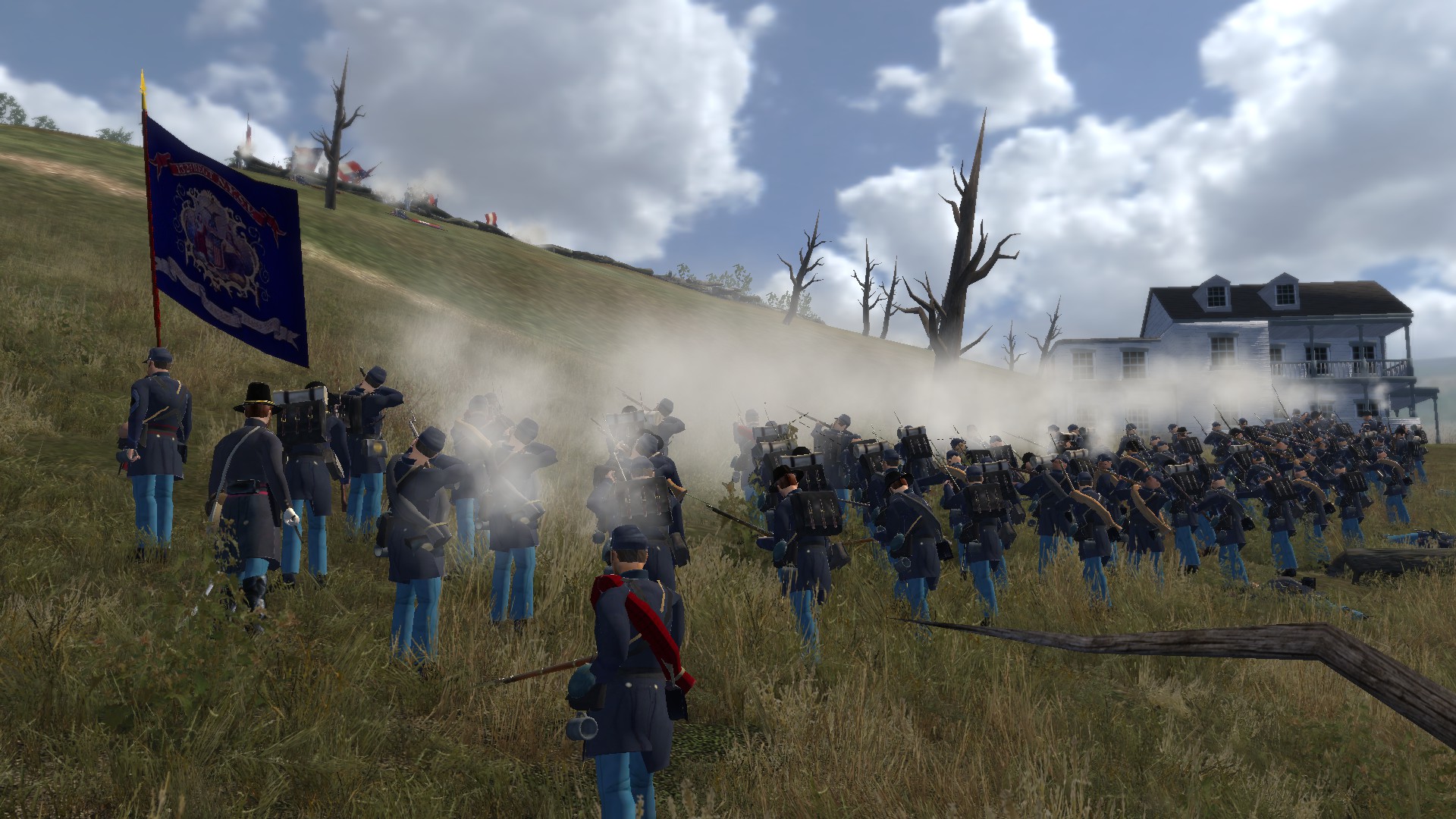
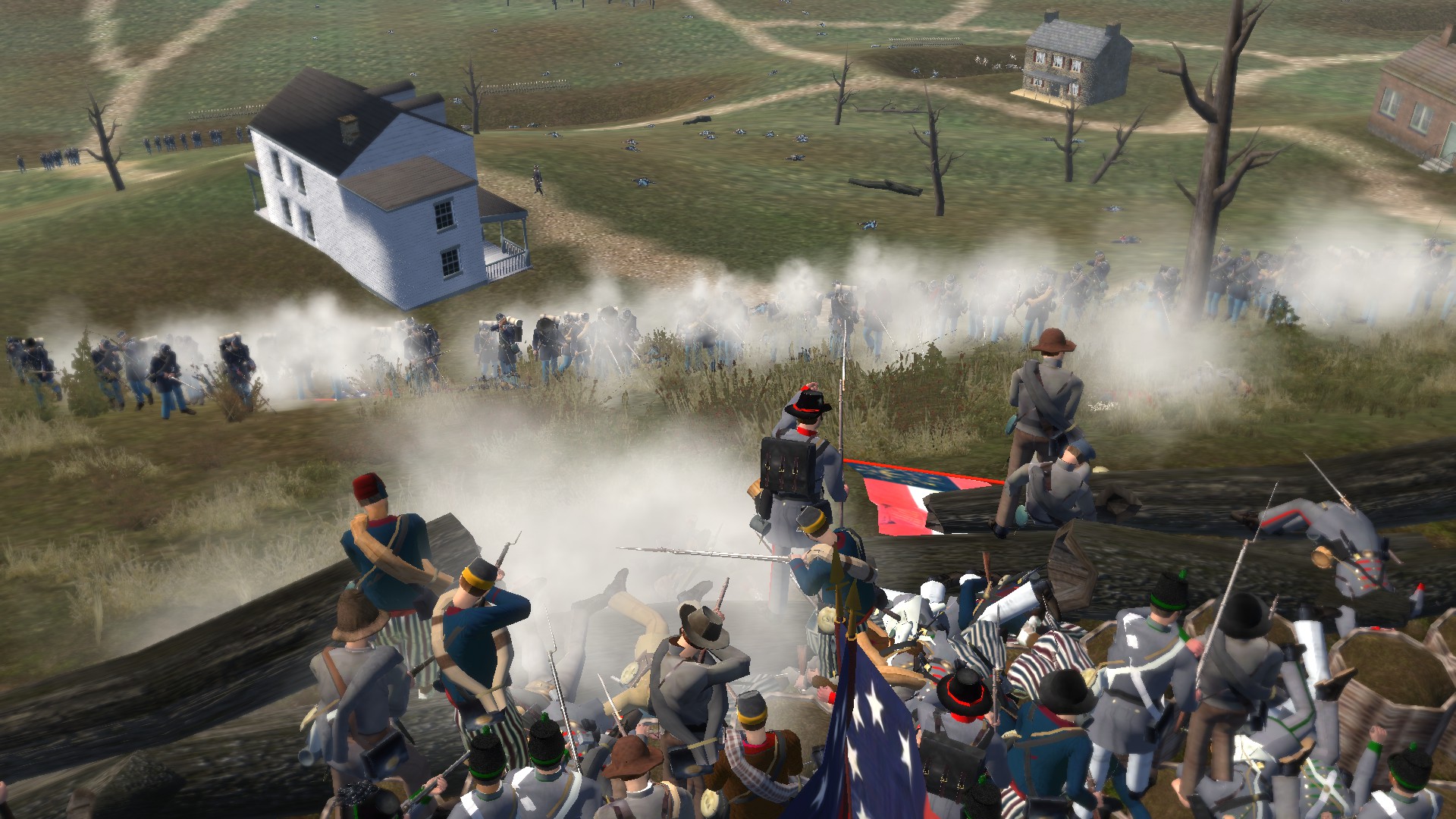
Kennesaw Mountain
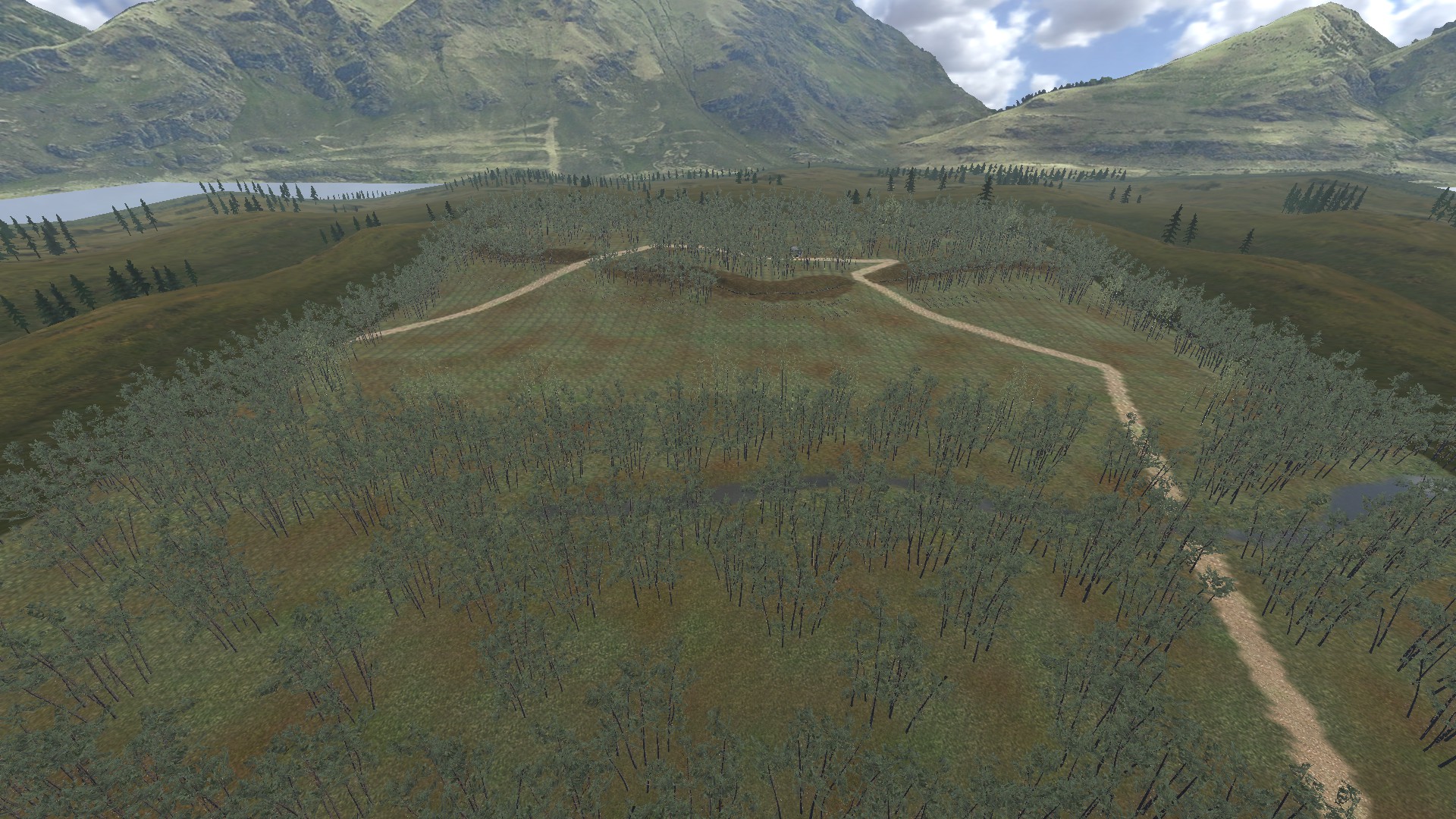
In our last update, we had changed one of the Confederate villages in the deep south to Atlanta, Georgia, however we have decided instead to switch this village out with one of the Confederate forts along the southern coast. Being so far south, the fort almost never saw any action in-game, and there is no naval combat either, so it served no real defensive purpose on the southern coastline. Instead, this change means that Atlanta will become a siege scene, like the others shown so far, that can accommodate large scale battles. In reality, many of the sieges during the American Civil War were fought miles outside of the cities, since the cities themselves were the entire objective and thus required protection. Urban combat was not common during the war, and the occasions that it did happen, the inexperience of the soldiers in fighting in those conditions were visibly apparent. Generals were eager to fight out in the open where they could maneuver their large formations and keep track of what was happening on the battlefield. This was the case with the Siege of Atlanta, which, like Chattanooga, was also a series of battles from which we decided to choose the most crucial, that also fit into the criteria we were looking for. This criteria included having the appropriate sides attacking and defending on the scene (for example the Confederates being on the defensive in a battle where they were on the defensive historically), and large amounts of troops deployed with high casualties. This ensures the battles you fight maintain an authentic feeling and nothing about it feels too far fetched or out of place. The battle that fit the closest to what we were looking for was Kennesaw Mountain. This battle, like the others, took place over a vast amount of ground, and we therefore have chosen once more to use a specific place and moment in the battle to represent. In this case, that place and that moment in time is what is known to history as, "The Dead Angle".
General William T. Sherman's Atlanta campaign in 1864, was initially a series of flanking maneuvers against Confederate General Joseph E. Johnston, each of which forced the Confederate army to withdraw from fortified positions with few casualties on both sides. After two months of maneuvering over 70 miles, Sherman's path was blocked by the imposing fortifications positioned on Kennesaw Mountain, near Marietta, Georgia. Sherman chose to change his tactics and on June 27th, he ordered a large scale frontal assault against the Confederate line.
At 8:00 a.m., Union artillery began a ferocious bombardment with over 200 guns, and the Confederate artillery quickly gave their response. General George H. Thomas' troops were behind schedule, but began their main attack against Hardee's corps at 9:00 a.m. Two divisions of the Army of the Cumberland, numbering around 9,000 men under the command of Brigadier General John Newton, and Brigadier General Jefferson C. Davis, advanced against the Confederate divisions of Major Generals Benjamin F. Cheatham and Patrick R. Cleburne, entrenched on what is now known as "Cheatham Hill." The two Union divisions advanced on the Confederate works in column formation rather than the typical broad line of battle. While such a movement offers the opportunity for a quick breakthrough by massing power against a narrow point, it also has the disadvantage of offering a large concentrated target to enemy fire. As Private Sam Watkins of the Confederate 1st Tennessee Regiment recalled, "It seemed that the arch-angel of Death stood and looked on with out-stretched wings, while all the earth was silent, when all at once a hundred guns from the Federal line opened upon us, and for more than an hour they poured their solid and chain shot, grape and shrapnel right upon this salient point, defended by our regiment alone, when, all of a sudden, our pickets jumped into our works and reported the Yankees advancing, and almost at the same time a solid line of blue coats came up the hill."
On General John Newton's left, his brigade under Brigadier General George D. Wagner, attacked through dense undergrowth, but was not able to break through the abatis and was repulsed by Confederate rifle fire. On his right, the brigade of Brigadier General Charles G. Harker charged the Tennessee brigade of Brigadier General Alfred Vaughan, but was likewise repelled, and during a second charge, General Harker was mortally wounded. Davis' division, to the right of Newton's, also advanced in column formation and their orders were to advance silently, capture the works, then cheer to signal the reserve divisions to move forward and secure the railroad to cut the Confederate army in half. A brigade under the command of Colonel Daniel McCook advanced down a slope to a creek and then crossed a wheat field to ascend the slope of Cheatham Hill. When they reached within a few yards of the Confederate defenses, the Union line halted, crouched, and began firing, but the Confederate counter fire was too strong. Colonel McCook was killed on the Confederate parapet as he slashed with his sword and shouted, "Surrender, you traitors!" McCook's brigade lost nearly all of its field officers, and a third of its men, as well as two of it's commanders, including Colonel McCook and his replacement, Colonel Oscar F. Harmon. Colonel John G. Mitchell's brigade on McCook's right suffered similar losses.
Private Sam Watkins described the fighting, "It seemed impossible to check the onslaught, but every man was true to his trust, and seemed to think that at that moment the whole responsibility of the Confederate government was rested upon his shoulders. Talk about other battles, victories, shouts, cheers, and triumphs, but in comparison with this day's fight, all others dwarf into insignificance. The sun beaming down on our uncovered heads, the thermometer being one hundred and ten degrees in the shade, and a solid line of blazing fire right from the muzzles of the Yankee guns being poured right into our very faces, singeing our hair and clothes, the hot blood of our dead and wounded spurting on us, the blinding smoke and stifling atmosphere filling our eyes and mouths, and the awful concussion causing the blood to gush out of our noses and ears, and above all, the roar of battle, made it a perfect pandemonium."
After ferocious hand-to-hand fighting, the Union troops dug in across from the Confederates, ending the fighting at around 10:45 a.m. General Sherman's armies suffered about 3,000 casualties in comparison to General Johnston's 1,000. Sherman initially was not deterred by these losses and asked General Thomas twice to renew the assault, saying, "Our loss is small, compared to some of those East." Thomas replied, however, "One or two more such assaults would use up this army." Fires had broken out on the battlefield and they burned all through the day and night. The haunting shrieks and cries of the wounded and dying could be heard across the battlefield. On the third morning after the battle, Union soldiers raised a white flag and requested a truce to bury the dead. The Confederates agreed, and both sides went to their dreadful work, not out of any respect for the dead, but because neither army could stand the horrible smell any longer. During the day, both Union and Confederate worked together to bury the dead, digging deep and long trenches and using bayonets bent into hooks to drag the bodies of both sides into the pits.
Private Sam Watkins said in describing the aftermath of the battle, "When the Yankees fell back, and the firing ceased, I never saw so many broken down and exhausted men in my life. I was as sick as a horse, and as wet with blood and sweat as I could be, and many of our men were vomiting with excessive fatigue, over-exhaustion, and sunstroke; our tongues were parched and cracked for water, and our faces blackened with powder and smoke, and our dead and wounded were piled indiscriminately in the trenches. There was not a single man in the company who was not wounded, or had holes shot through his hat and clothing…"
Kennesaw Mountain would be Sherman's last large scale frontal assault. On July 8th, Sherman outflanked Johnston again by sending Major General John M. Schofield to cross the Chattahoochee river near the mouth of Sope Creek, and with that, the last major geographic barrier to entering Atlanta had been overcome.
There are no landmarks on this scene, the two buildings that are present are simply for the purposes of the game's mechanics, so that way there is a building for the prison and the headquarters when you visit the location in peace. The scene itself is essentially the landmark in this case. Below are two photos showing a Union attack on the Dead Angle, and the Confederates perspective from behind their defenses.
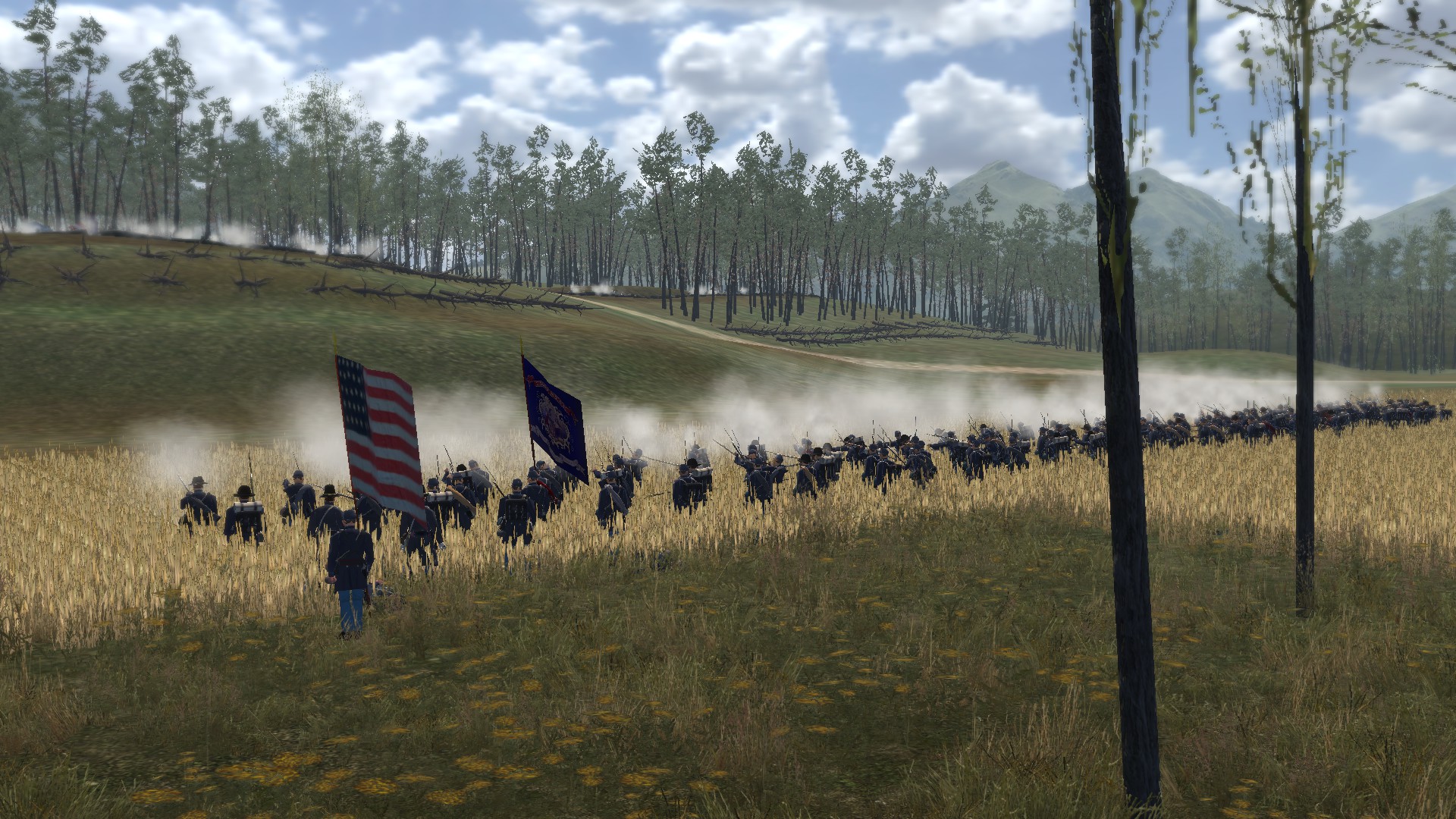
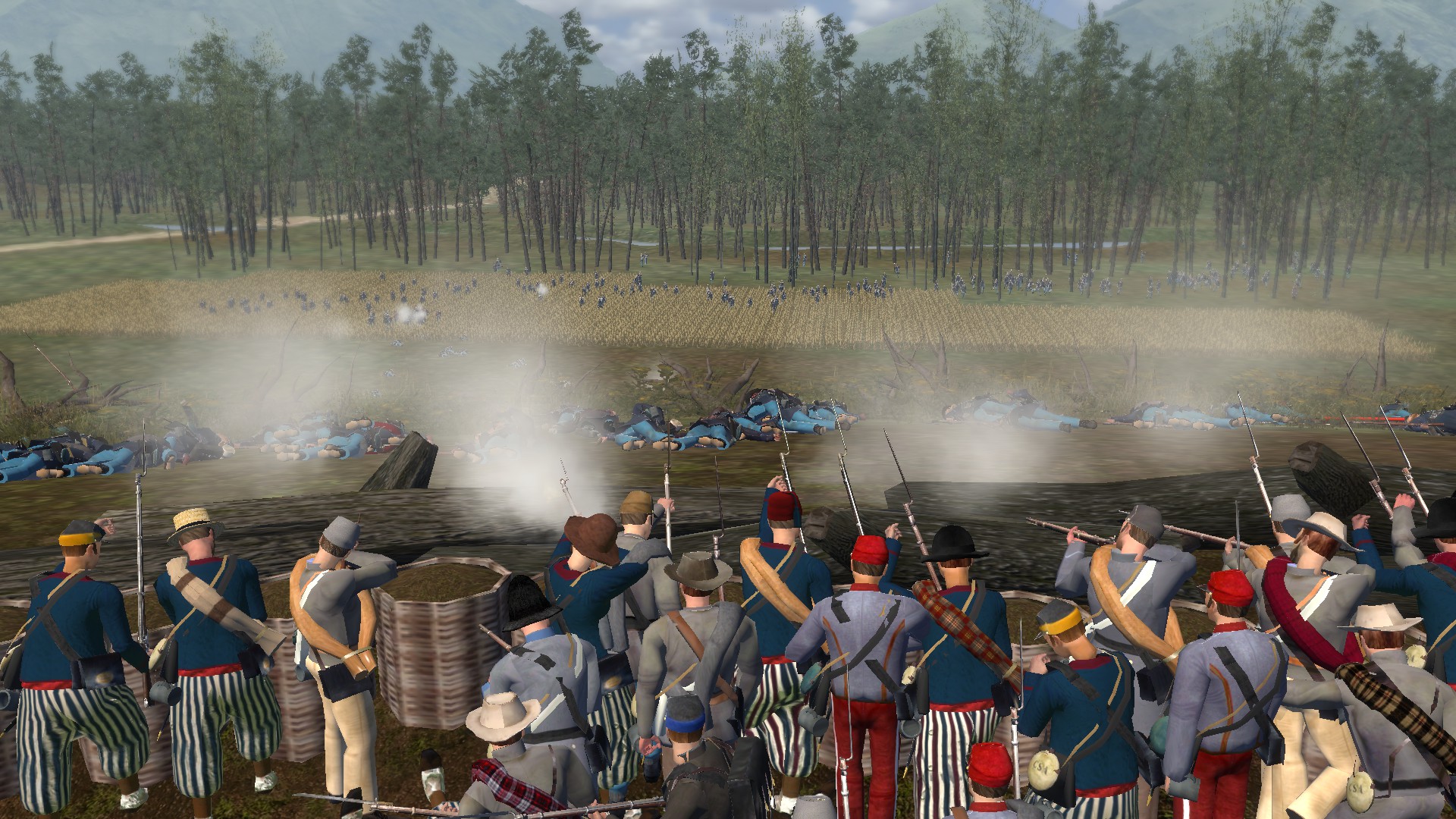
Petersburg
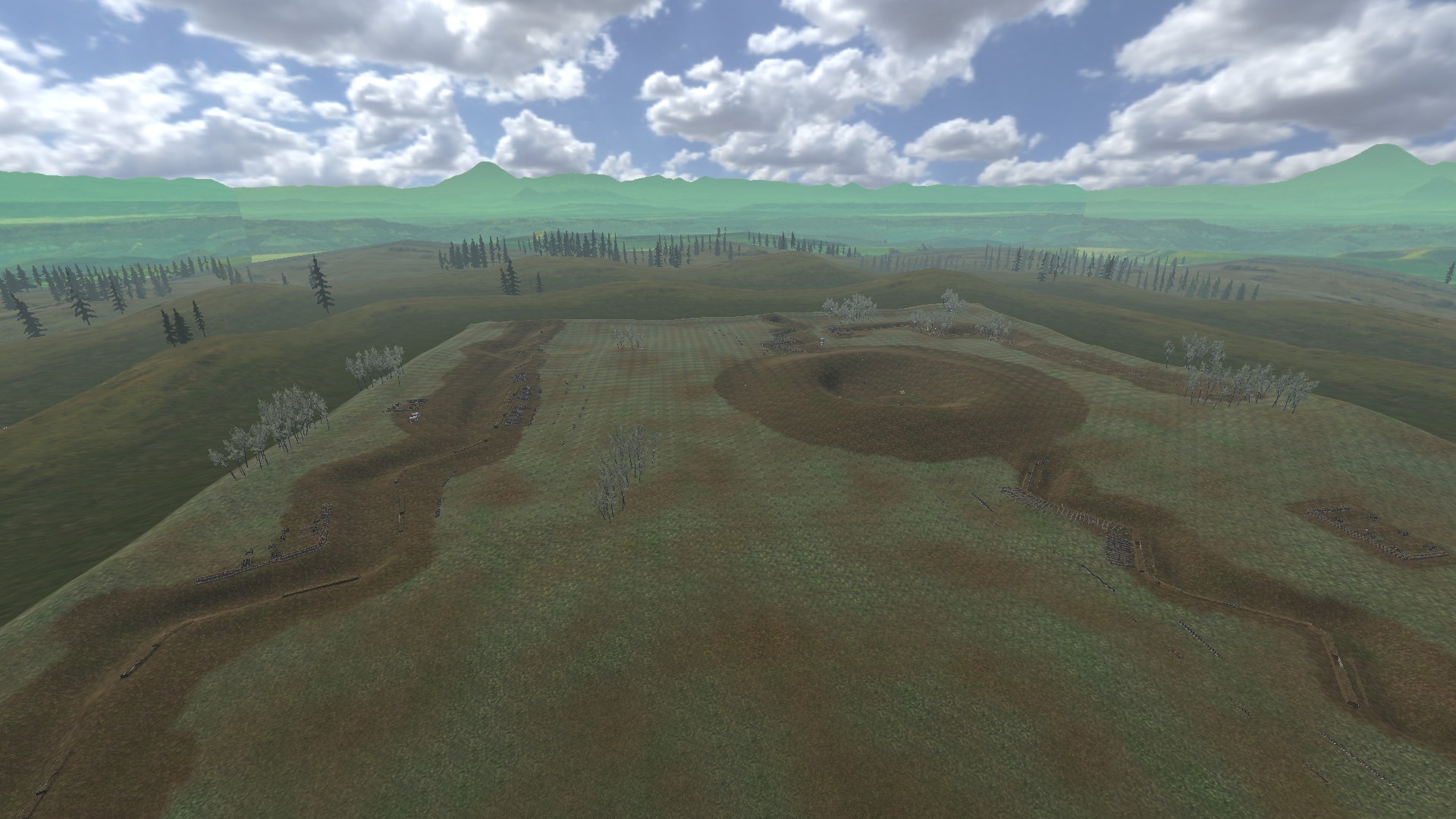
Unfortunately, this scene currently causes crashes when played as a battle and will be getting completely scrapped and redone in the future. For now, it serves as a nice set piece and gives a good idea of how we actually want the trenches to look in the mod, as well as what our plans are for this scene specifically. Our intention is to make something based on the Battle of the Crater during the Siege of Petersburg, and we wanted to have a more complex trench system to go with it that really gives a feeling for trench warfare in the civil war setting. Through rigorous testing, we have learned that the new custom props used to build the trench walls, as well as the rather large size of the crater itself, are what have caused this scene to have consistent crashes, and this will therefore require us to make a new one entirely.
Here you can see the complex nature of the trenches we created, which includes fortified artillery lunettes made with trench walls supported by logs and gabions, chevaux de frise, abatis, and sharpened stakes.
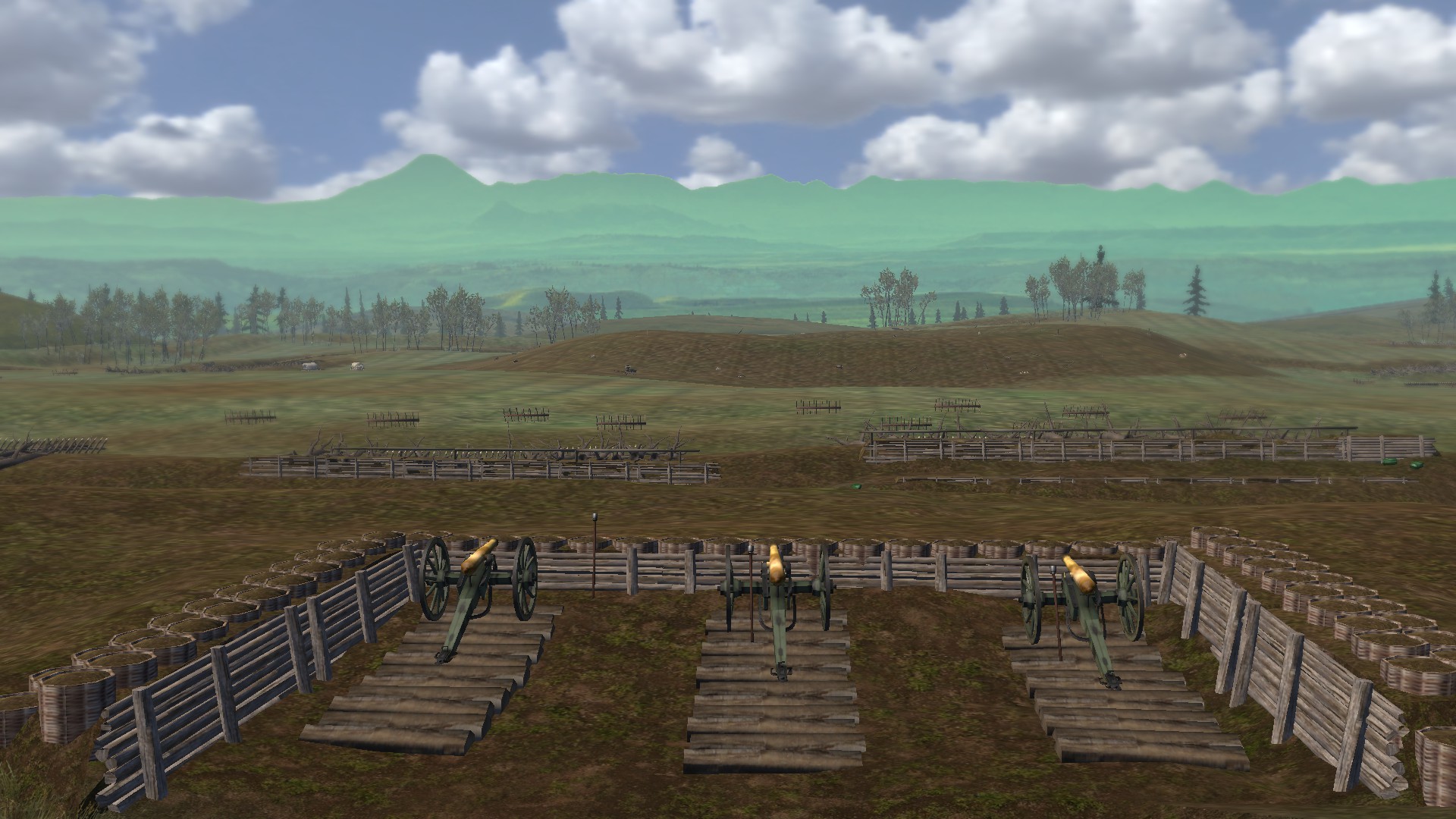
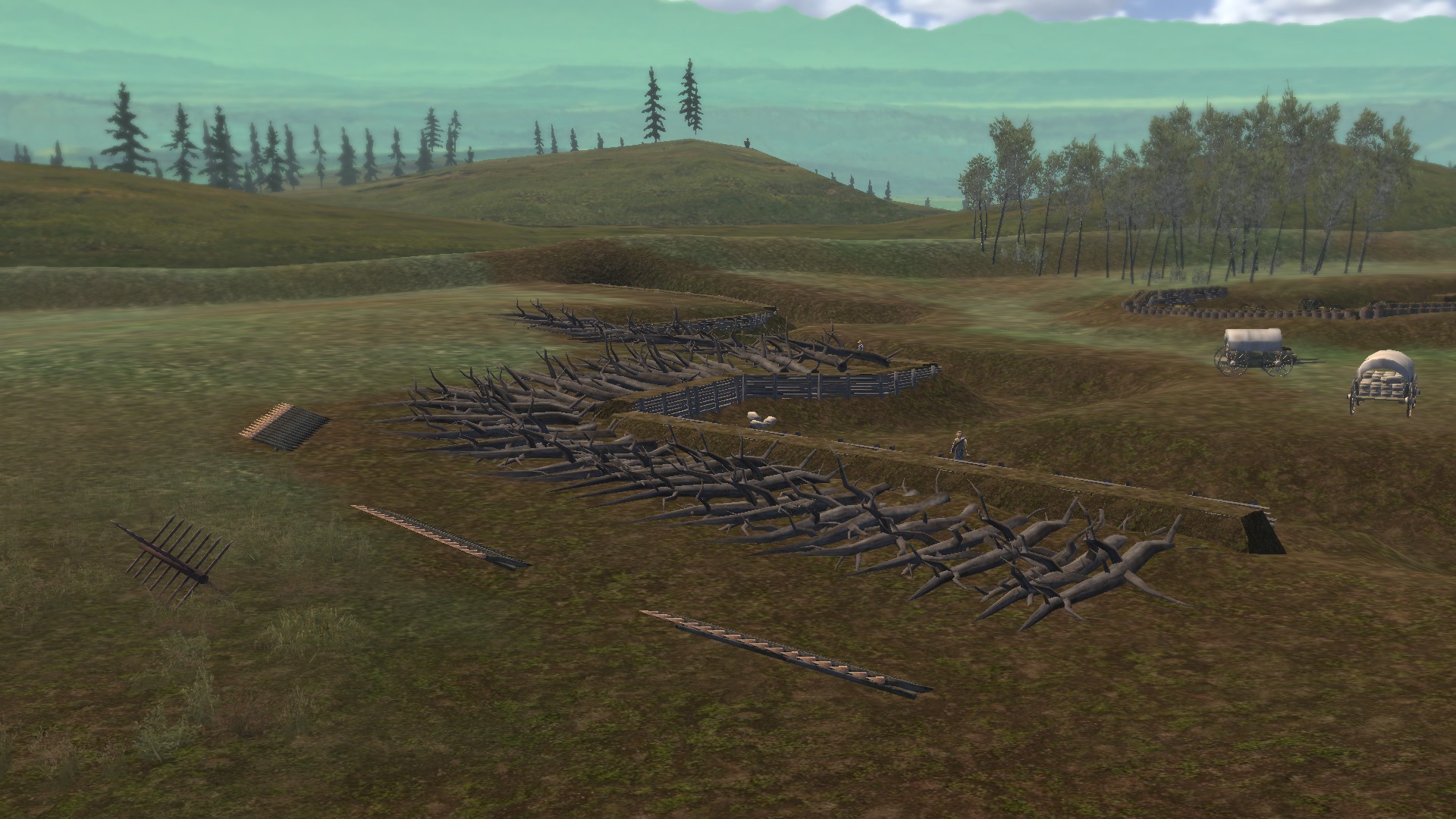
When you visit this scene in peace, you can find the headquarters and the prison in these two dugouts.
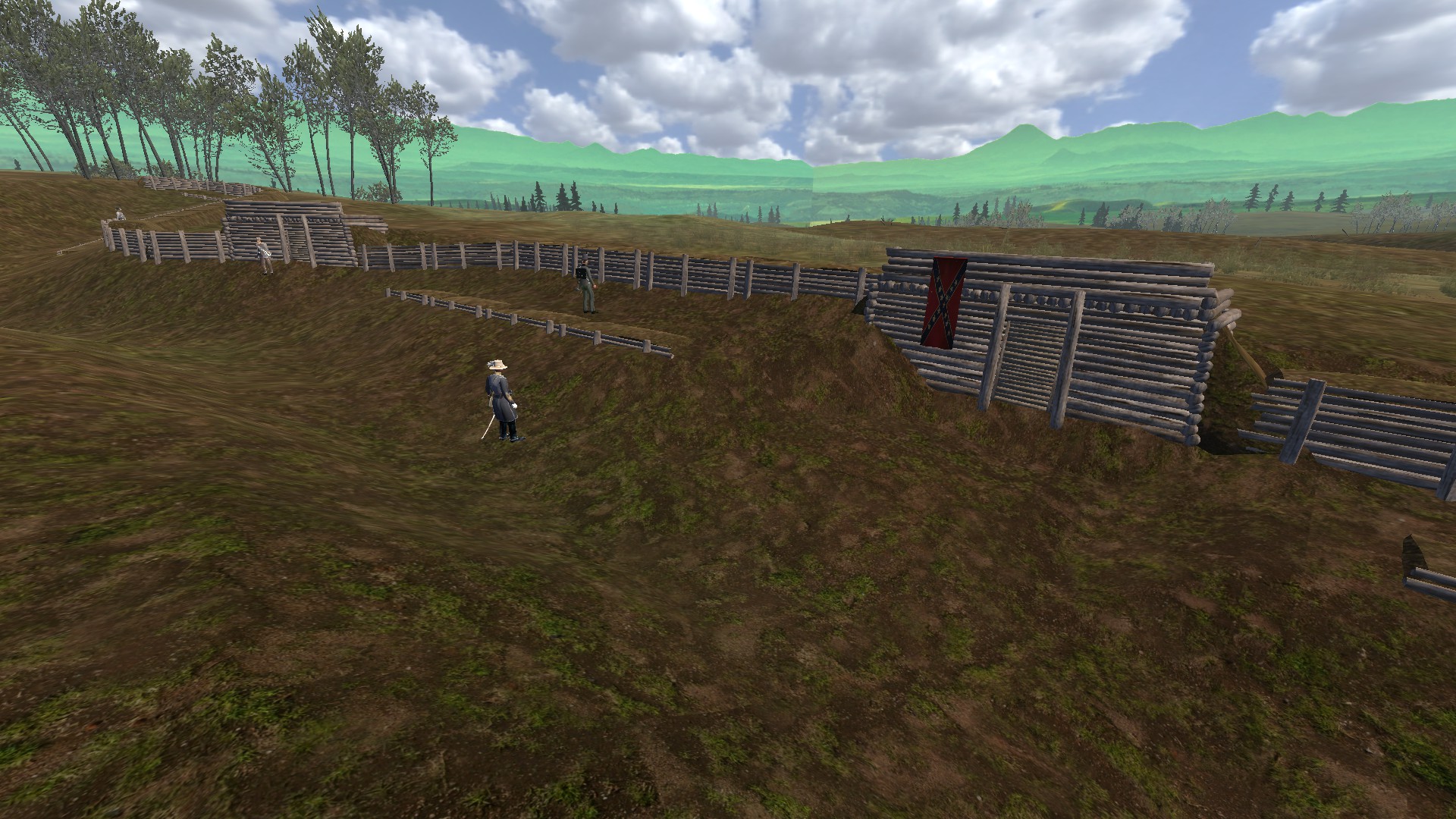
New Town Centers
New York City
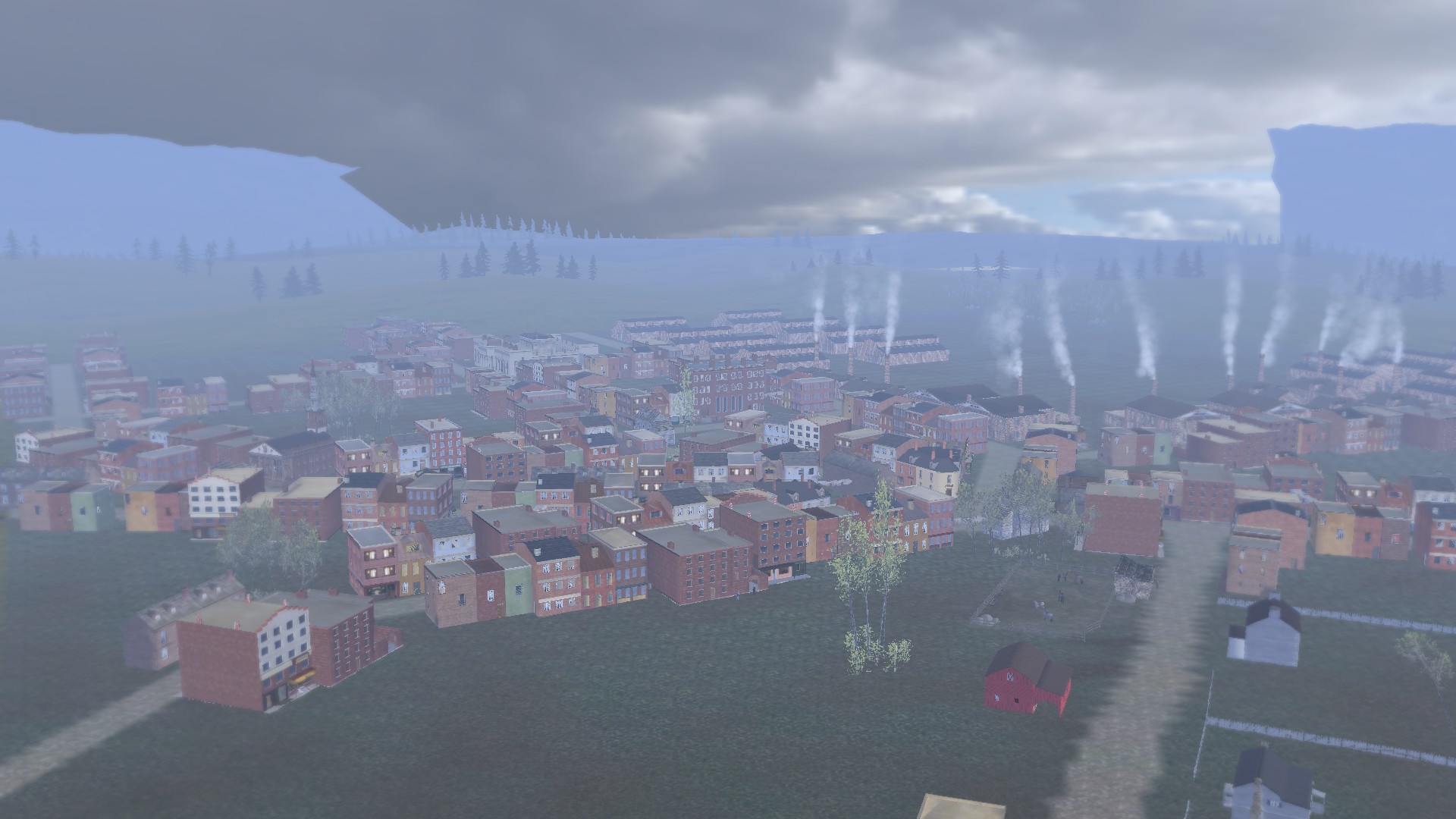
The second notable change on our list is the overhauled town center scenes. For New York City, we decided to base it's scene on the infamous Five Points neighborhood. Five Points was a densely populated, crime and disease infested slum. The neighborhood gets its name from two streets that cross each other, and a third that ends at their intersection, forming five "points". Anthony Street was extended east to the junction of Cross and Orange Streets around the year 1809, and as a result the surrounding neighborhood came to be called Five Points.
During it's heyday, only certain areas of London's East End rivaled Five Points in the western world for population density, disease, infant and child mortality, unemployment, prostitution, violent crime, and other ills of poor urban life. The neighborhood is sometimes considered the original American melting pot, at first consisting primarily of newly emancipated African Americans. The gradual emancipation of slaves led to the complete end of the practice in New York on July 4th, 1827. There was also a small minority presence of ethnic Irish in the area since the 1600's. Five Points is alleged to have had the highest murder rate of any slum at that time in the world. According to an old New York urban legend, the Old Brewery, at the time an overcrowded tenement on Cross Street, is said to have had a murder a night for 15 years, until its demolition in 1852.
Five Points was notorious for it's organized crime and there were numerous outbreaks of violence and riots, including the Anti-Abolitionist Riots of 1834, and the Dead Rabbits Riot, though the inhabitants of Five Points actually refrained from participating in the New York City Draft Riots of 1863. The area formerly occupied by Five Points was gradually redeveloped through the 20th century, and many tenement buildings dating from the late 19th century still line the streets in this area of New York City today.
We have included several famous landmarks in this scene, and two of them are actually part of the town's services.
The Tombs
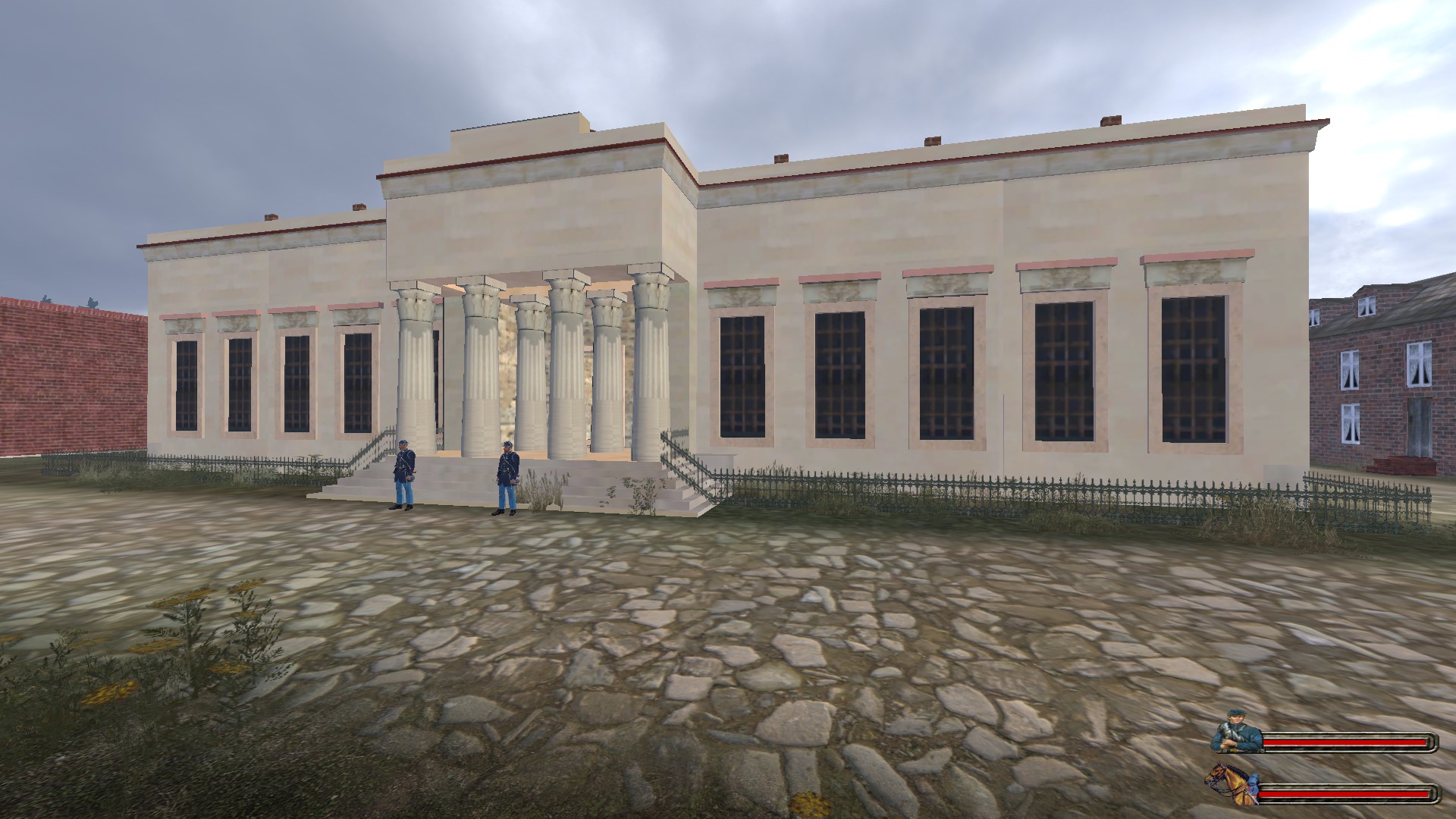
The original Tombs was formally known as the New York Halls of Justice and House of Detention, as it housed the city's courts, police, and detention facilities. Built in 1838 in the Egyptian Revival architectural style by John Haviland, it was initially able to hold about 300 prisoners, and $250,000 was allocated in 1835 to build it, but various cost overruns occurred prior to completion of the project. The building site had been created by filling in Collect Pond, which was the principal water source for Colonial era New York City. However, by the late 18th century, industrialization and population density had resulted in the severe pollution of Collect Pond, so it was condemned, drained, and filled in by 1817. Unfortunately, the landfill job was poorly done and the ground began to subside in less than 10 years. By the time that prison construction started in 1838, the resulting swampy, foul smelling conditions transformed the neighborhood into the slum known as Five Points. The heavy masonry of Haviland's design was built on top of vertical piles of hemlock tree trunks lashed together in a bid for stability, but the entire structure began to sink soon after it was opened. This damp foundation was primarily responsible for the prison's unsanitary conditions in the decades that followed. Charles Dickens would write of the prison in his travelogue, 'American Notes', "Such indecent and disgusting dungeons as these cells, would bring disgrace upon the most despotic empire in the world!"
The prison was infamous for its corruption, and during its early history was the scene of numerous scandals and escapes. A fire destroyed part of the building on November 18th, 1842, the same day that a notorious killer named John C. Colt was due to be hanged. Apparently it was an escape attempt on Colt's part that failed, and he fatally stabbed himself in his cell. Rebecca Salome Foster, a prison relief worker and missionary, became known as "the Tombs Angel" for her efforts to help and advocate on behalf of the many poor people held in squalid conditions at the Tombs. A monument to her was built in 1902 but was put in storage in 1940. In 2019, the monument was rededicated in the lobby of the New York State Supreme Court.
The Tombs functions in the mod as New York City's prison and the headquarters building. The door to the headquarters is to the immediate right when you go up the stairs, and the door to the prison is in the courtyard, immediately to the left after you go through the doorway. The prison scene also has it's own custom interior.
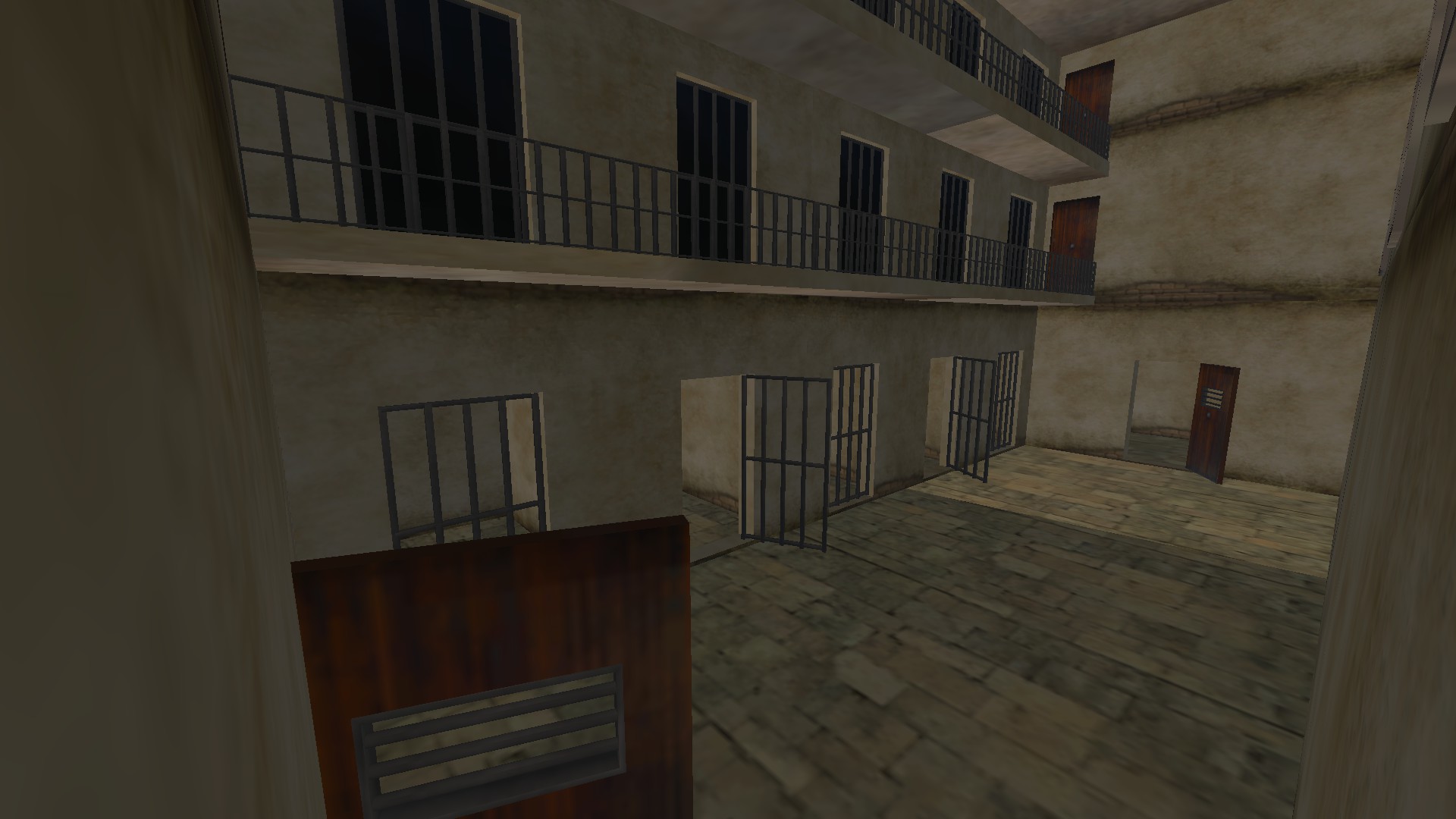
Mc'Sorley's Old Ale House
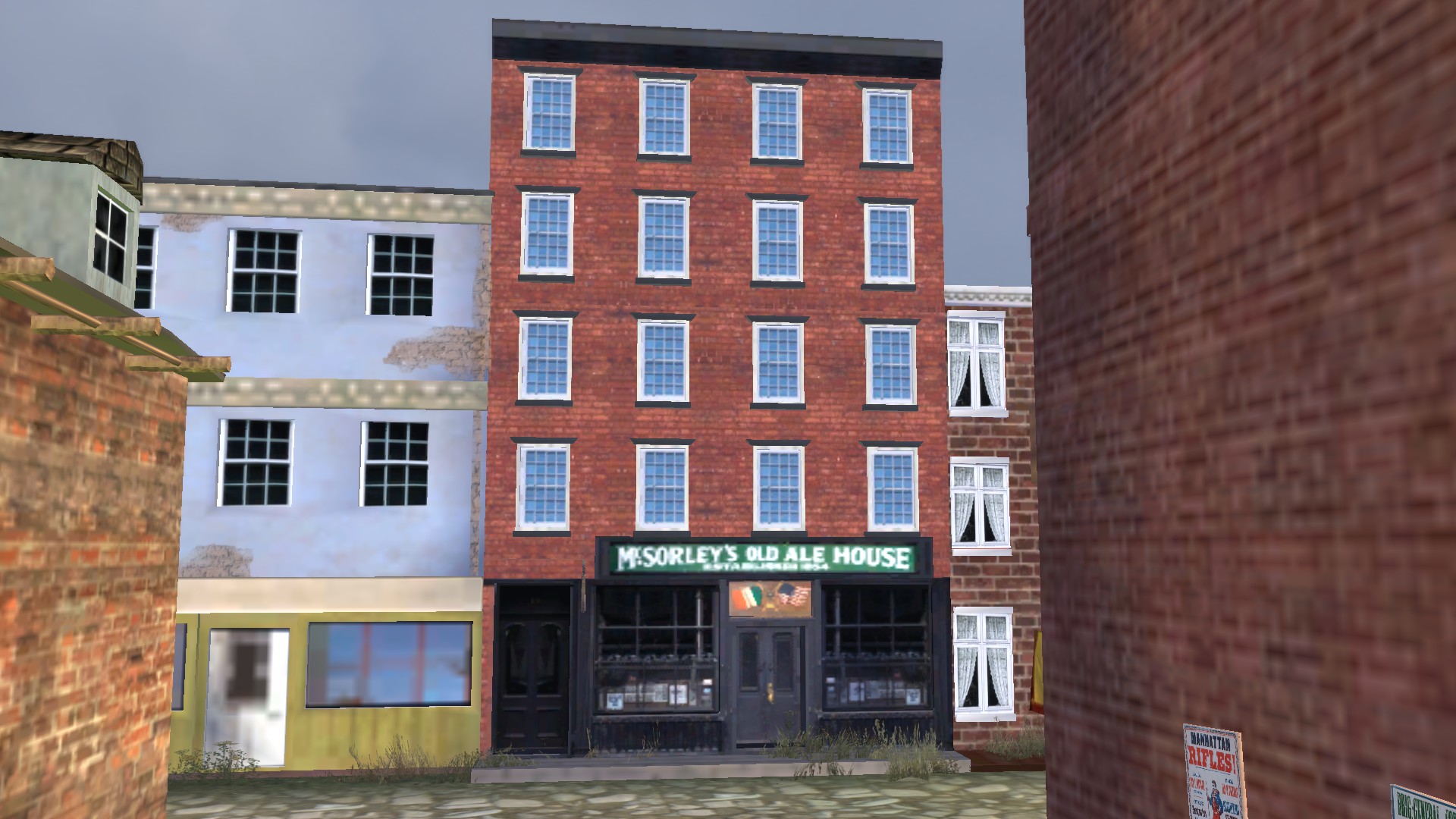
McSorley's Old Ale House, generally known as McSorley's, is the oldest Irish bar in New York City. Opened in the mid-19th century in Manhattan's East Village neighborhood, no earlier than 1858 according to city record, the saloon was originally called, "The Old House at Home". McSorley's is considered to be one of the longest continuously operating ale houses in the city due to the fact that during Prohibition it served a "near beer" with too little alcohol to be illegal, and it was also one of the last "Men Only" pubs, admitting women patrons only after being legally forced to do so in 1970. Notable people who have visited McSorley's include Abraham Lincoln, Ulysses S. Grant, Teddy Roosevelt, and Boss Tweed.
McSorley's is, you guessed it, the city's tavern in the mod. It also includes a new custom interior as well.
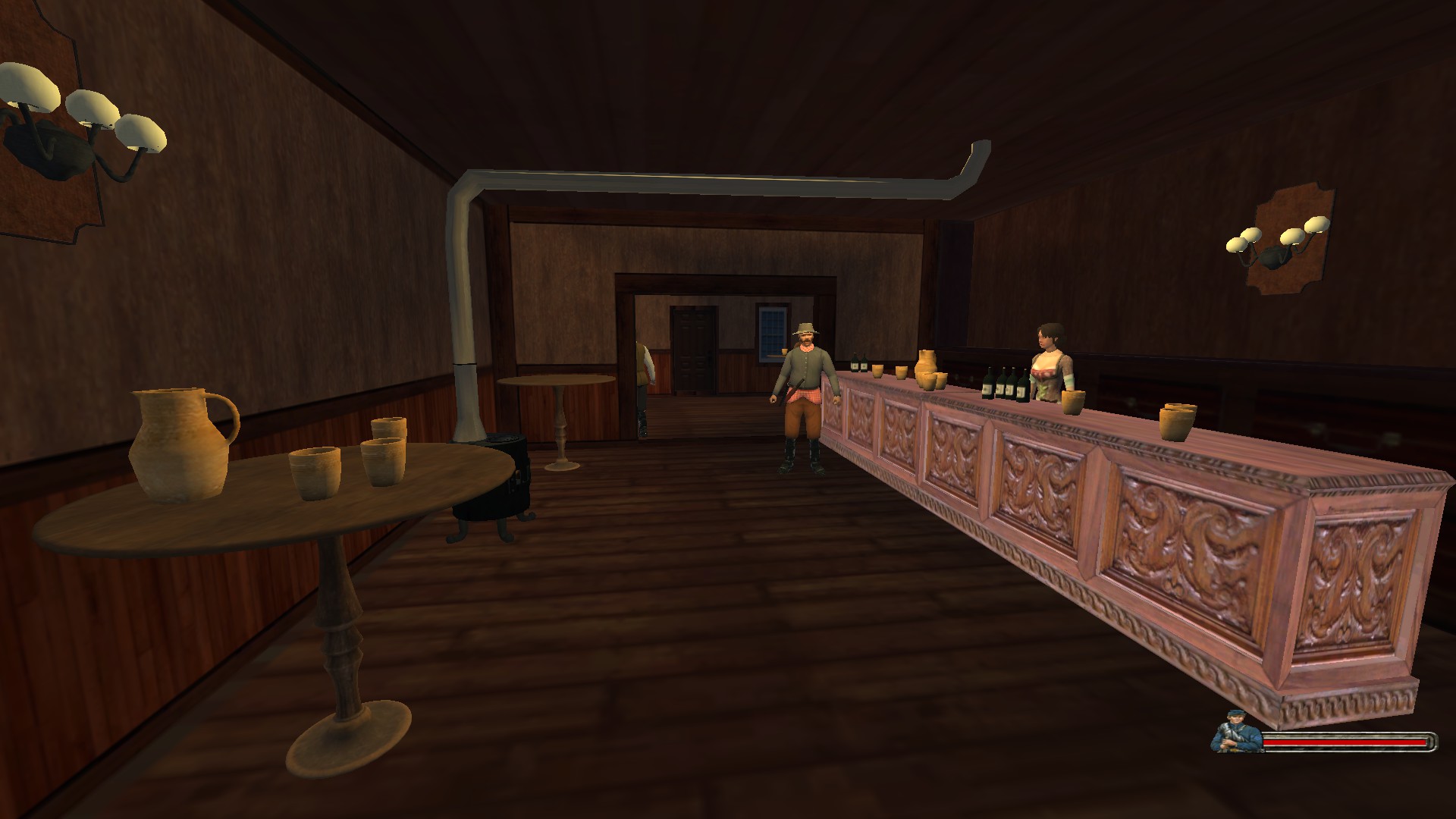
The Mission at Five Points
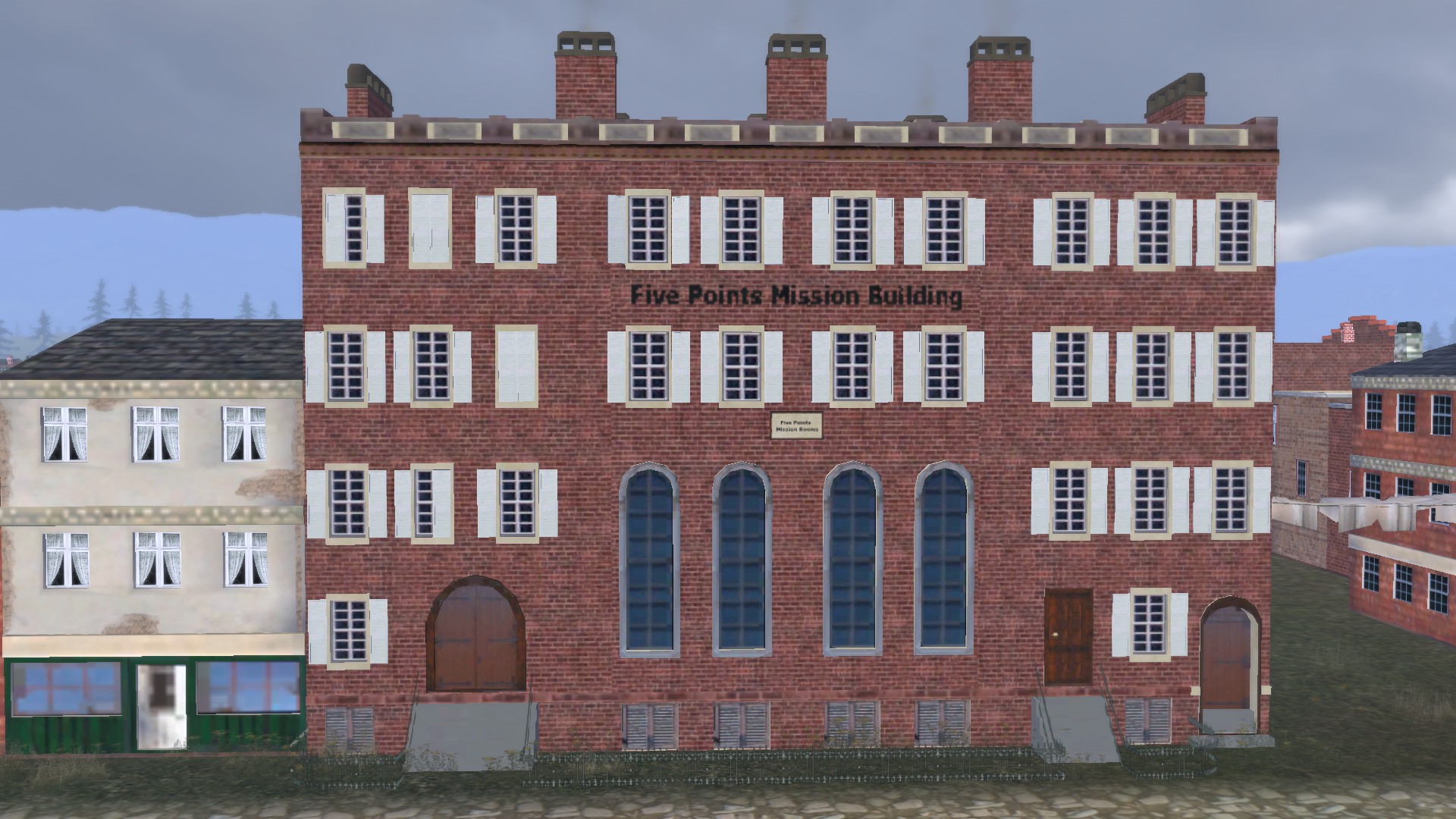
Among the businesses that had ruined Collect Pond was Coulthard's Brewery, which was built around 1792. The brewery closed around 1837 and the building was converted to tenement use. By now the Five Points area was the most infamous slum in the city, well known for extreme poverty, crime and vice. The Old Brewery was purchased in 1852 by the Methodist Ladies of the Mission for $16,000. The cost of construction of the new mission building was set at $33,000, which is more than $1 million in today's money, and the Old Brewery was demolished in December 1853. By the beginning of 1853, progress had come along well enough that on January 27th, the cornerstone was laid by Bishop Edmund S. Janes of the Methodist Episcopal Church. Three months later, on June 17th, the completed building was dedicated with a sermon given by Reverend Doctor James Floy, who said in part, "The building was erected not only for the purpose of gathering into its chambers the wicked portion of that wicked community...but also for the promotion of the glory of God, that the wicked might be rescued from their degradation."
The basement of the building included a general school room, a primary school room, and two dressing rooms, one for boys and the other for girls. A two-story chapel occupied part of the first and second floors, which could accommodate 500 people. The top two floors were divided into apartments for 20 families, each having two bedrooms, which would allow them to experience an enormous step up from their previous living conditions. The building was also supplied with running water and gas. By 1868, the Five Points Mission served 500 pupils, ranging from 3 to 12 years in age. Two years later, about 1,500 were provided with dinner, two-thirds of whom were children belonging to the Mission, and by 1875 the number had grown again to no less than two or three thousand.
By the 1880's, the New Mission House was demolished and replaced by an even bigger building, however this building was demolished by 1915. Today, not even the streets that surrounded the Five Points Mission Building exist. It has all been replaced by a massive complex of court buildings and Columbus Park.
In the mod, the Mission House is simply for decoration, it serves no other purpose. Any landmarks listed that provide a service in the game will have that mentioned in the description below it's history.
Saint Paul's Chapel
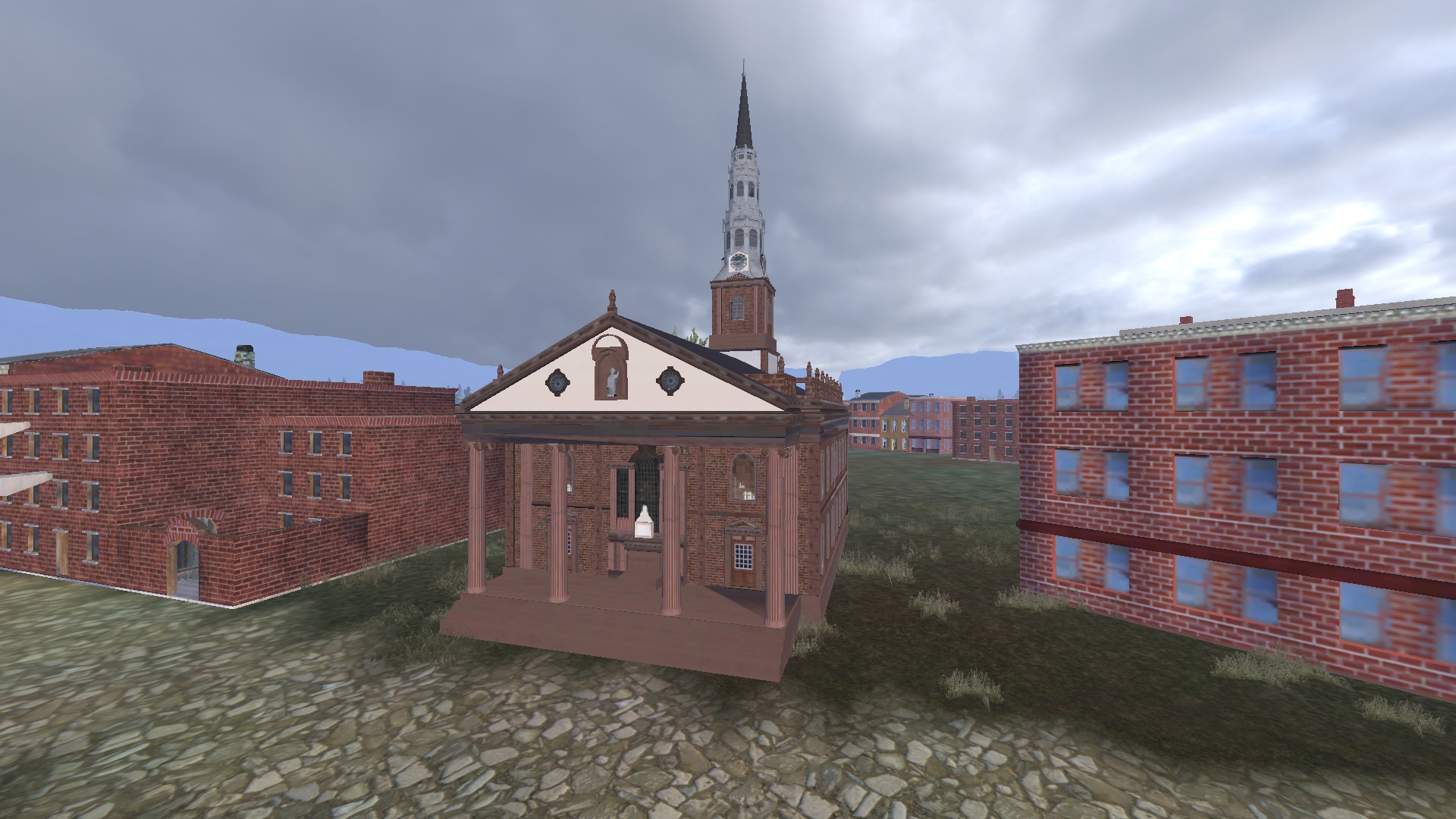
Built in 1766, St. Paul's Chapel is the oldest surviving church building in Manhattan, and one of the nation's finest examples of Late Georgian church architecture. St. Paul's was built on land granted by Queen Anne of Great Britain, designed by architect Thomas McBean and built by master craftsman Andrew Gautier. Upon it's completion, St. Paul's Chapel was the tallest building in New York City. It stood in a field some distance from the growing port city to the south and was built as a "chapel-of-ease" for parishioners who thought the mother church too inconvenient to access.
The Hearts of Oak, a militia unit organized early in the American Revolutionary War, was composed in part of students from King's College (today's Columbia University), and they would drill in the Chapel's yard before classes. One of the unit's officers was none other than Alexander Hamilton. The chapel survived the Great New York City Fire of 1776, when a quarter of New York City burned following the British capture of the city after the Battle of Long Island. George Washington, along with members of the United States Congress, worshipped at St. Paul's Chapel on his Inauguration Day on April 30th, 1789. Washington also attended services at St. Paul's during the two years New York City was the country's capital. Other historical worshipers have included Prince William (later King William IV) of Great Britain, Lord Cornwallis and Sir William Howe, the Commander-in-Chief of British forces in America during the Revolutionary War.
After the attacks on September 11th, 2001, which led to the collapse of the World Trade Center, St. Paul's Chapel served as a place of rest and refuge for recovery workers at the WTC site. The church survived the events of that day without even a broken window. While the church's organ was badly damaged by smoke and dirt, the organ has since been refurbished and is in use again. The Chapel is now a popular tourist destination, since it still keeps many of the memorial banners around the sanctuary and has an extensive audio and video history of the event. St. Paul's Chapel still holds Sunday services, weekday concerts, occasional lectures, and provides shelter for the homeless.
Boston
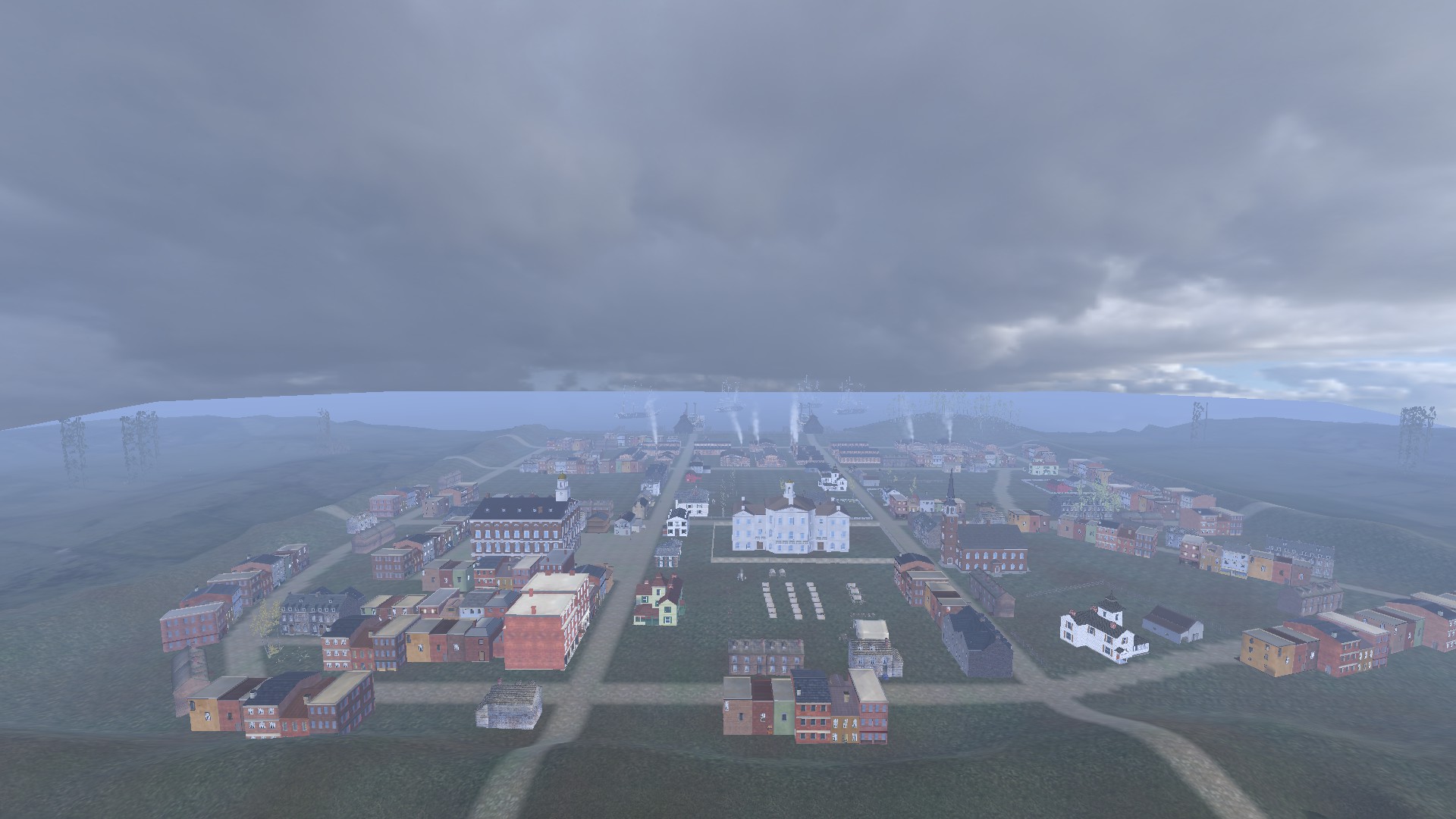
This scene is not based on any particular neighborhood in Boston, it is a more general and less detailed recreation of what the city may have looked like. All of the landmarks are in places that look the best for them on the map, without necessarily being in their historical footprints.
Faneuil Hall
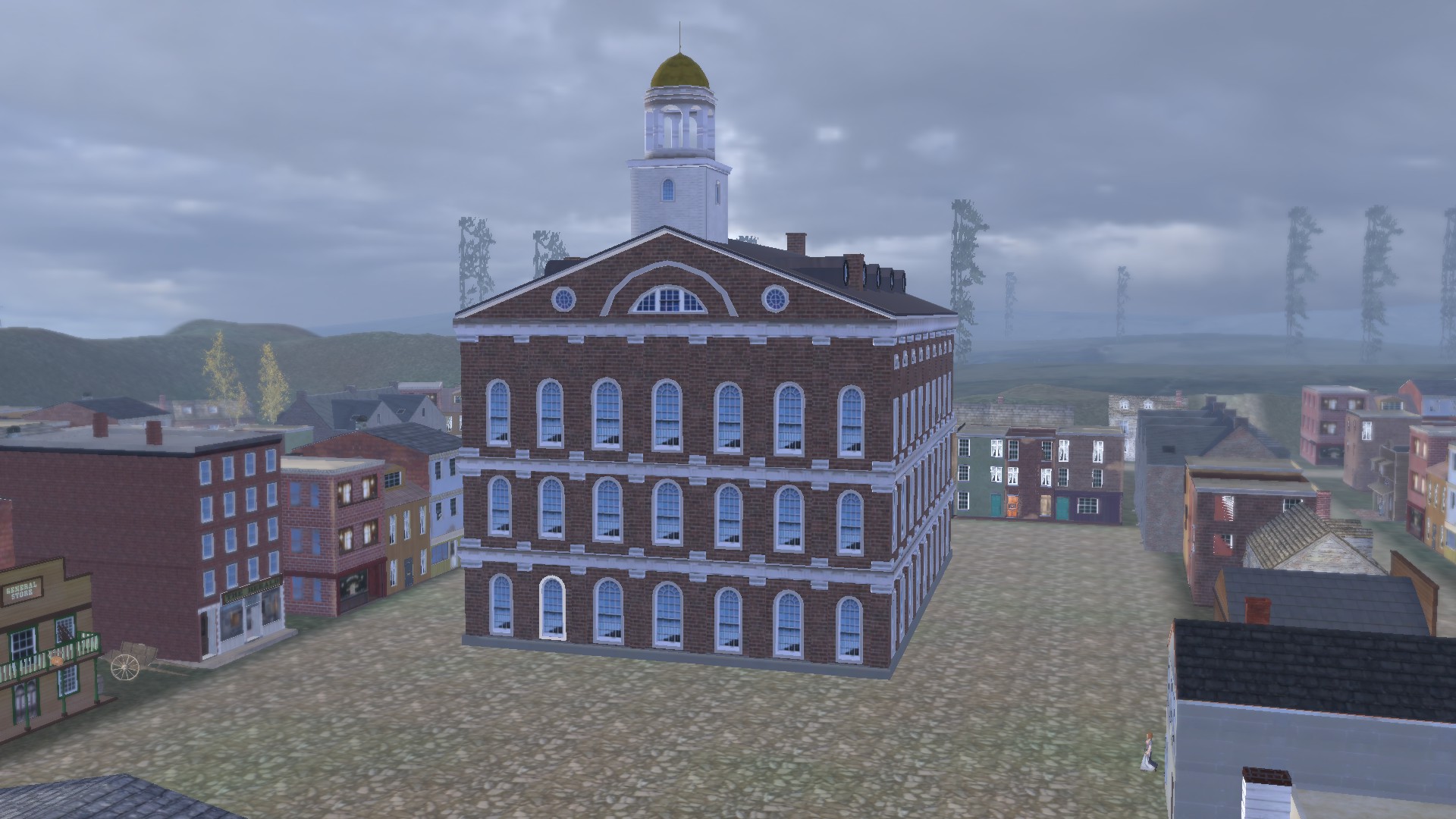
Opened in 1743, Faneuil Hall was the site of several speeches by Samuel Adams, James Otis, and others encouraging independence from Great Britain. Slave merchant Peter Faneuil offered at a public meeting in 1740 to build a suitable edifice for a public market house at his own cost as a gift to the town. Funded in part by profits from slave trading, it was built by artist John Smibert in the style of an English country market, with an open ground floor serving as the market house, and an assembly room above. In 1761, Faneuil Hall was destroyed by fire, with nothing but the brick walls remaining, but it was rebuilt by the town in 1762. In 1806, Faneuil Hall was greatly expanded by Charles Bulfinch, who doubled the building's height and width and added a third floor. Four new bays were added, the open arcades were enclosed, and the cupola was moved to the opposite end of the building.
In 1854, a fugitive slave named Anthony Burns was captured in Boston under the Fugitive Slave Act of 1850. The Fugitive Slave Act was despised and fiercely resisted in Boston, and Burns' case attracted national publicity, including large demonstrations, protests, attacks, and violence. Faneuil Hall served as a meeting place for Boston abolitionists, such as the Committee of Vigilance, a faction of whom unsuccessfully attempted to free Anthony Burns from the courthouse with axes and revolvers, resulting in the death of one of the guards, James Batchelder. A grand jury indicted three of those involved in the attack at the courthouse, but after an acquittal of one man and several hung juries in the trials of the others, the federal government dropped all of the charges. Following the riot, President Franklin Pierce sent the United States Marines to Boston to aid the police in preventing further violence, and after the trial, federal troops were deployed to ensure Burns was transported without interference to a ship headed back to Virginia. Burns was eventually ransomed from slavery, with his freedom purchased by Boston sympathizers. Afterwards, he was educated at Oberlin Collegiate Institute, became a Baptist preacher and moved to Upper Canada, where he remained until his death.
Today, Faneuil Hall is now part of Boston National Historical Park and a well known stop on the Freedom Trail, drawing more than 20 million visitors per year. The Headquarters of the Ancient and Honorable Artillery Company of Massachusetts has been in Faneuil Hall since 1746, and is currently on the 4th floor. It is also still used for political debates between Massachusetts candidates as well as political shows, such as "The O'Reilly Factor."
The Bell in Hand Tavern
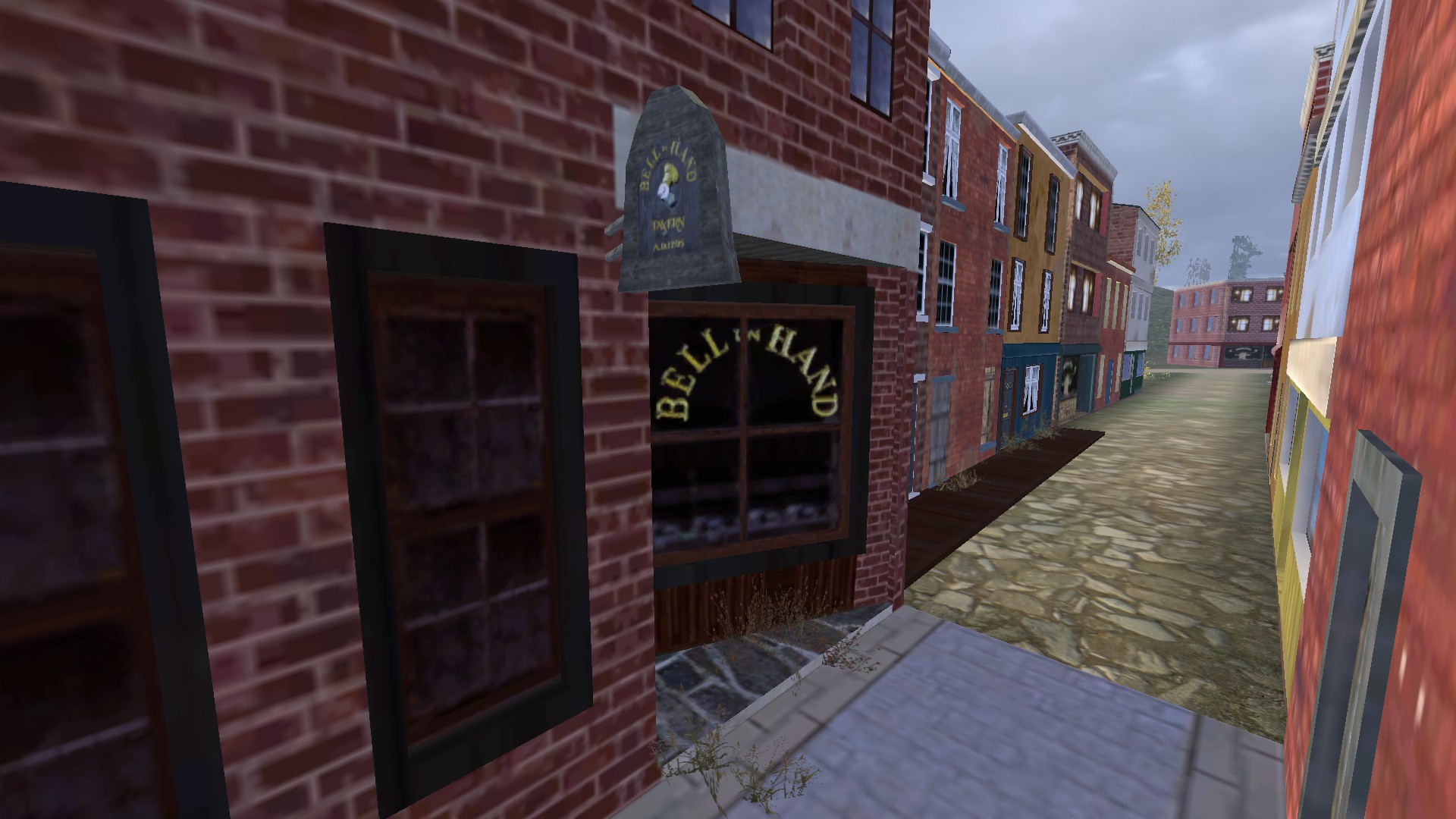
"Old Jimmy" Wilson was the last town crier of Boston, and he shouted the news of the Boston Tea Party, the Declaration of Independence, the impending Battle of Bunker Hill, and of course, the final defeat of the British. After his retirement, he founded the Bell-in-Hand Tavern in 1795 under the Exchange Coffee House in Congress Square, based upon the style of taverns fashionable in London in the 18th century. Jimmy Wilson was proud of his former occupation and that's why he called the place the "Bell-in-Hand." The establishment gained a popular reputation for selling "the best Ale in Boston," and flourished under a succession of keepers. The tavern relocated to Pi Alley in 1853, and the ale house thrived amidst the busy "Newspaper Row," and soon became a social hub for newspaper men, bankers, Harvard professors, artists and writers. In their haste to get refreshment from the Bell-in-Hand, the newspapermen would often drop mixed up loose type on the ground from their pockets, which were called "pi" in the printing business, and this is where the name, "Pi Alley", came from. The Bell-in-Hand is the longest continuously operating tavern in the United States.
In the mod, the Bell-in-Hand is the tavern for the Boston town center scene, and also includes a custom interior.
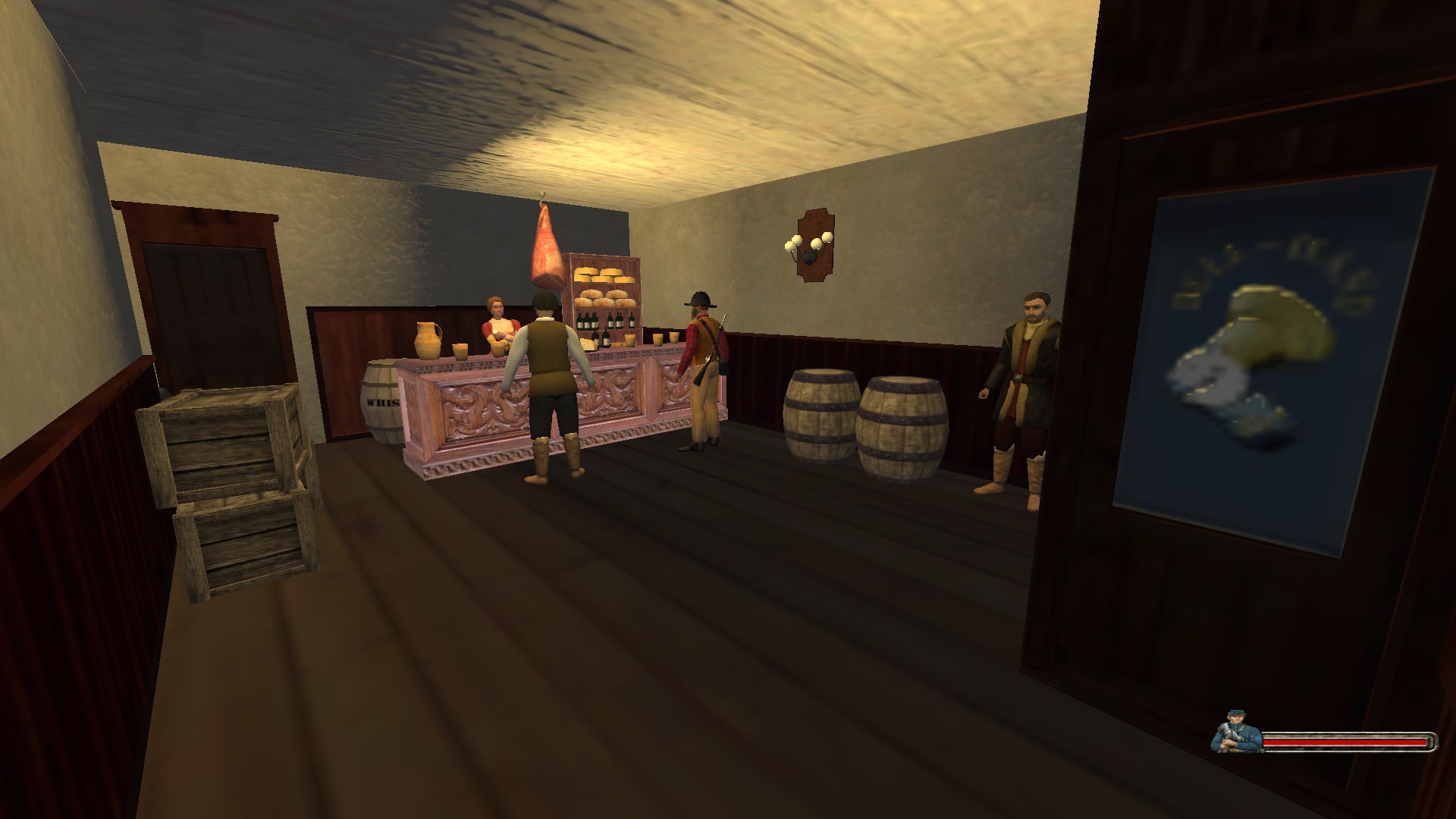
Old South Meeting House
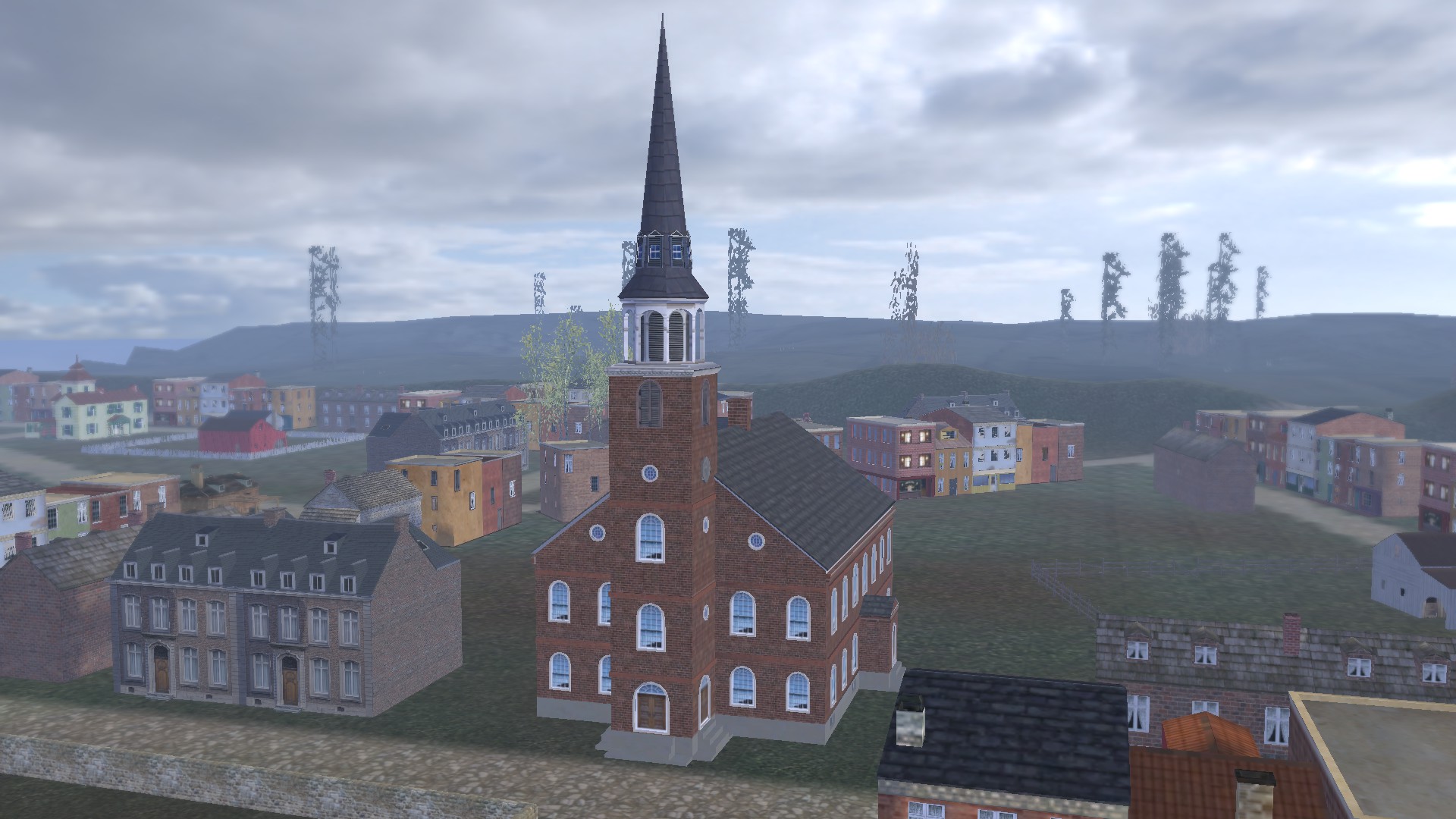
The congregation was first gathered in 1669 when it broke off from First Church of Boston, a Congregational church founded by John Winthrop in 1630. The site was a gift of Mrs. Norton, widow of John Norton, pastor of the First Church in Boston, and the meeting house or church was built on the land in 1729. After the Boston Massacre in 1770, anniversary meetings were held at the church every year until 1775, which featured speakers such as John Hancock and Dr. Joseph Warren, who played an important role in patriot organizations during the early years of the American Revolution. The Old South Meeting House was the largest building in Boston at the time, and gained fame as the organizing point for the Boston Tea Party on December 16th, 1773, when about 5,000 colonists gathered there to debate British taxation. A group from this meeting went on after the meeting had ended to raid three British tea ships anchored in Boston Harbor.
The British Lieutenant Colonel Samuel Birch of the 17th Dragoons, occupied the Meeting House in October 1775, due to its association with the Revolutionary cause. The British gutted the building, filled it with dirt, and then used the interior to practice horse riding. They destroyed much of the interior and stole various items, including a unique Pilgrim manuscript hidden in Old South's tower called, "William Bradford's Of Plymouth Plantation", which was written in 1620 and is considered the most authoritative account of the life of the early settlers. After the British evacuated Boston, Thomas Dawes drew the plan for rebuilding the interior of the church.
The Old South Meeting House is claimed to be the second oldest establishment existent in the United States. It has been an important gathering place for nearly three centuries, being renowned for the protest meetings held here before the American Revolution, and still serving as a platform for the free expression of ideas. Today, the Old South Meeting House is open daily as a museum and continues to provide a place for people to meet and discuss the important issues of the day.
Philadelphia
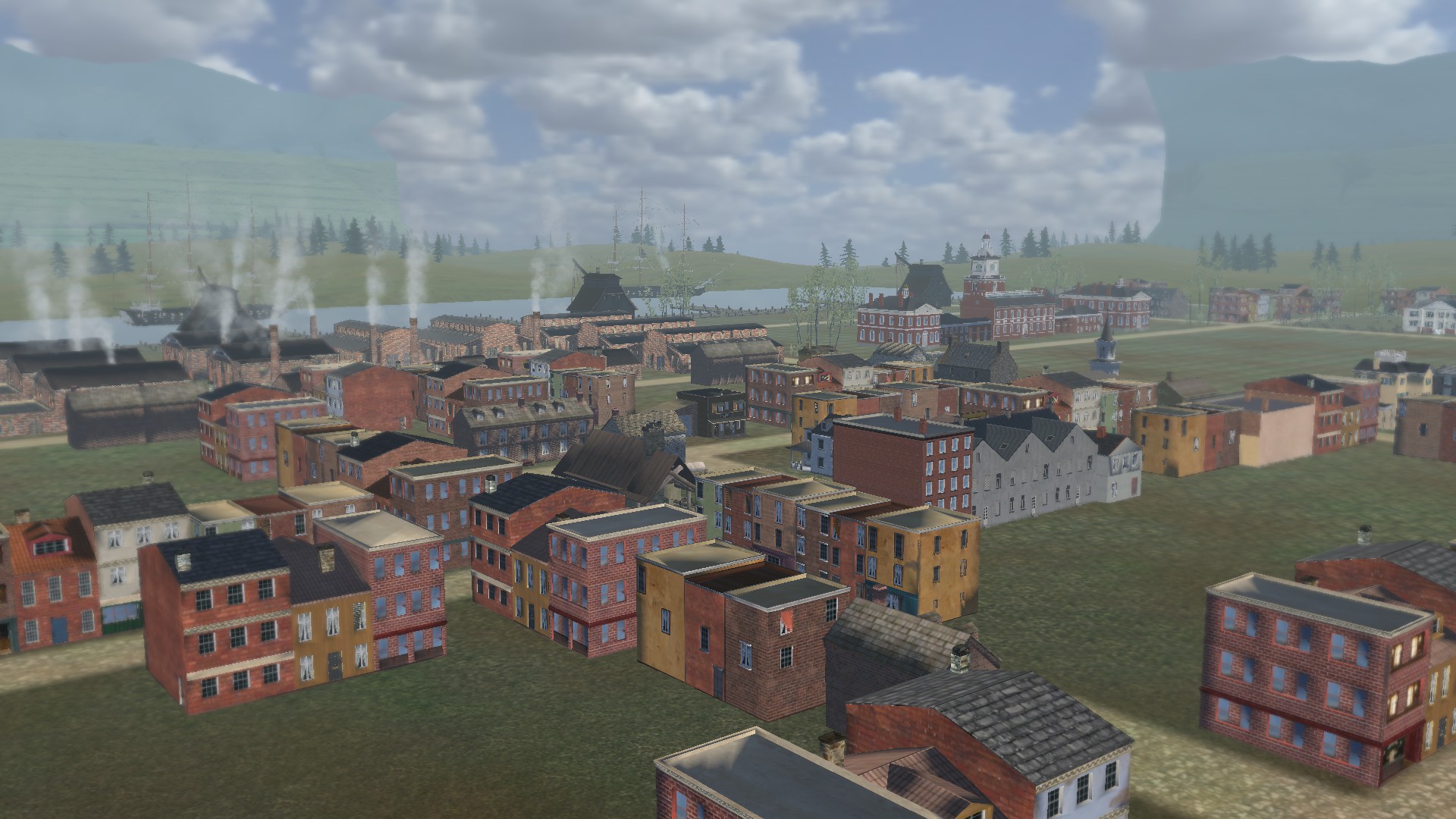
The scene for Philadelphia is a more scaled down recreation of the area around Independence Hall, and also includes a few other famous historical landmarks from the city.
Independence Hall
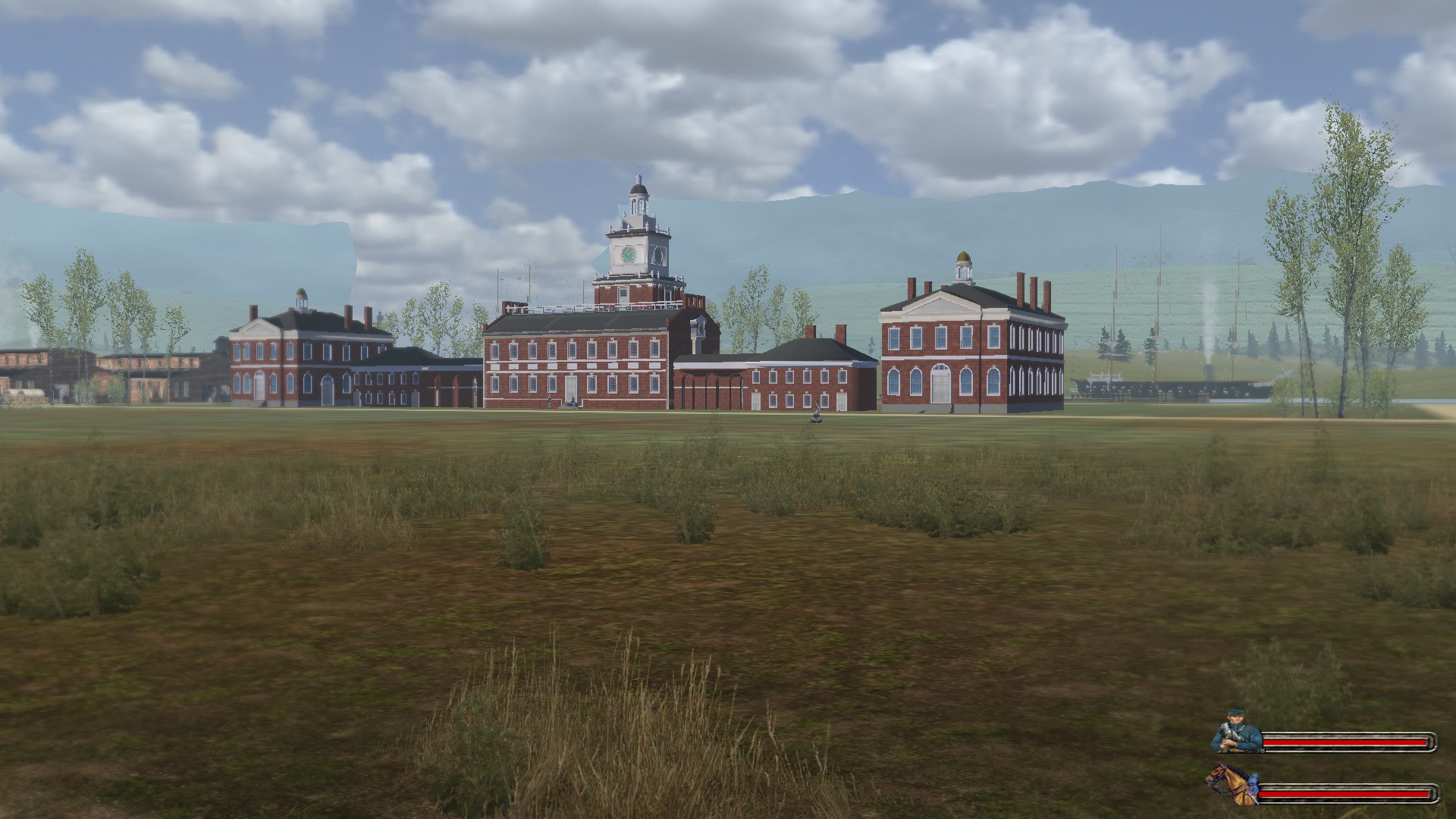
Independence Hall was completed in 1753 as the Pennsylvania State House, touting a red brick façade designed in Georgian style, and served as the capitol for the Province and Commonwealth of Pennsylvania until the state capital moved to Lancaster in 1799. It became the primary meeting place of the Second Continental Congress from 1775 to 1783 and was the site of the Constitutional Convention in 1787.
Delegates of the Continental Congress nominated George Washington as commander-in-chief of the Continental Army in the Assembly Room of the Pennsylvania State House on June 14th, 1775. On July 26th of the same year, Benjamin Franklin was appointed as the first Postmaster General of what would later become the United States Post Office Department. The United States Declaration of Independence was approved there on July 4th, 1776, and the Declaration was read aloud to the public in the area now known as Independence Square. The Congress continued to meet there until December 12th, 1776, when the Congress evacuated Philadelphia under the threat of British occupation, and instead meeting in Baltimore, Maryland. The Congress returned to Philadelphia in 1777, from March 4th to September 18th.
The British Army again arrived to occupy Philadelphia in September 1777, forcing the Continental Congress to once again abandon the State House. It then met in Lancaster, Pennsylvania, for one day and in York, Pennsylvania, for nine months, where the Articles of Confederation were approved in November of 1777. The Second Continental Congress again returned to Independence Hall, for its final meetings from July 2nd, 1778 to March 1st, 1781. Article One, Section Eight, of the United States Constitution granted Congress the authority to create a federal district to serve as the national capital. Following the ratification of the Constitution, the Congress passed the Residence Act of 1790, which established the District of Columbia as the new federal capital.
After the assassination of President Abraham Lincoln in 1865, the funeral train was to take the body of the president, as well as the disinterred coffin of his son Willie who died in 1862, from Washington, back to Springfield, Illinois, for burial. Lincoln's funeral train left Harrisburg on Saturday, April 22nd, 1865, at 11:15 a.m. and arrived in Philadelphia's Broad Street Station at 4:30 p.m. Lincoln's coffin was carried by hearse past a crowd of 85,000 people and was held in the Assembly Room in the east wing of Independence Hall, escorted and guarded by a detail of 27 naval and military officers. That evening, a private viewing was arranged for honored guests of the mourners, and the next day, lines began forming at 5:00 a.m. Over 300,000 mourners viewed Lincoln's body, with some waiting five hours just to see him. Lincoln's funeral train left Philadelphia's Kensington Station for New York City the next morning on Monday, April 24th, 1865, at 4:00 a.m.
Independence Hall has been renovated numerous times during the 19th and 20th centuries. The current interior is a mid-20th century reconstruction done by the National Park Service, with the public rooms restored to their 18th-century appearance. A product of extensive documentary research and archaeology, the restoration of Independence Hall and other buildings in the park set standards for other historical preservation efforts, and also stimulated the rejuvenation of old Philadelphia.
In the mod, Independence halls serves as Philadelphia's headquarters building, however there is no custom interior yet.
McGillan's Old Ale House
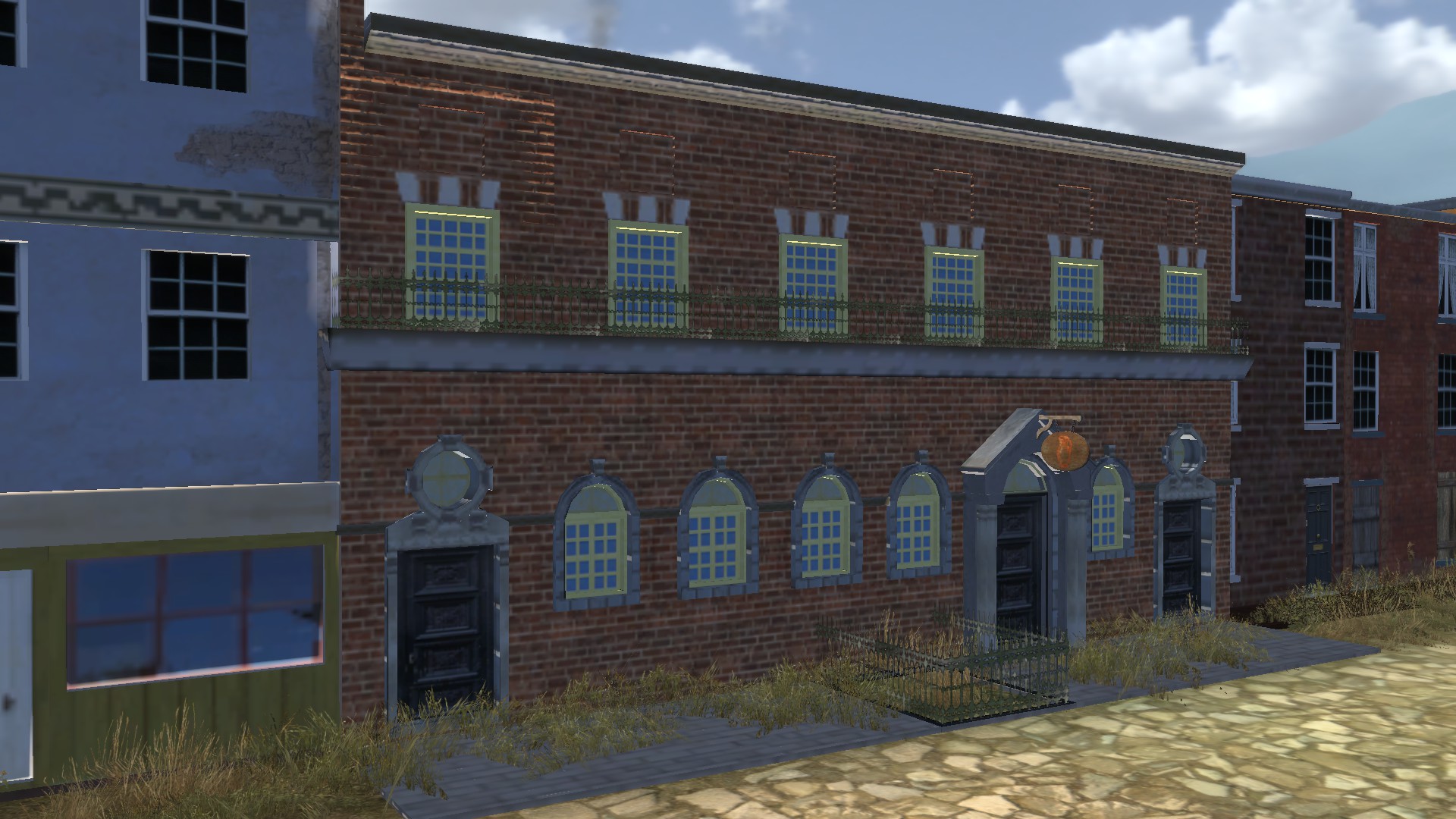
McGillan's Old Ale House is the oldest operating drinking establishment in Philadelphia, first opening it's doors in 1860 under the official title of, interestingly enough, the "Bell-in-Hand". Irish immigrant, William "Pa" McGillan, was the owner and operator of the establishment, and those who frequented the establishment took to calling the place, "McGillan's". The bar took on the nickname as its official title, and "Pa" McGillin ran the business until his death in 1901. The ceramic tile floor, though not original to the bar, was installed by "Pa" McGillin because he was tired of replacing the wooden floors because of wear and tear from workers' boots. William got the idea from a local butcher shop, where he noticed how little wear and tear the floors received, and how easy they were to clean.
In the mod, Mc'Gillan's serves as the tavern in Philadelphia, and does include a custom interior.
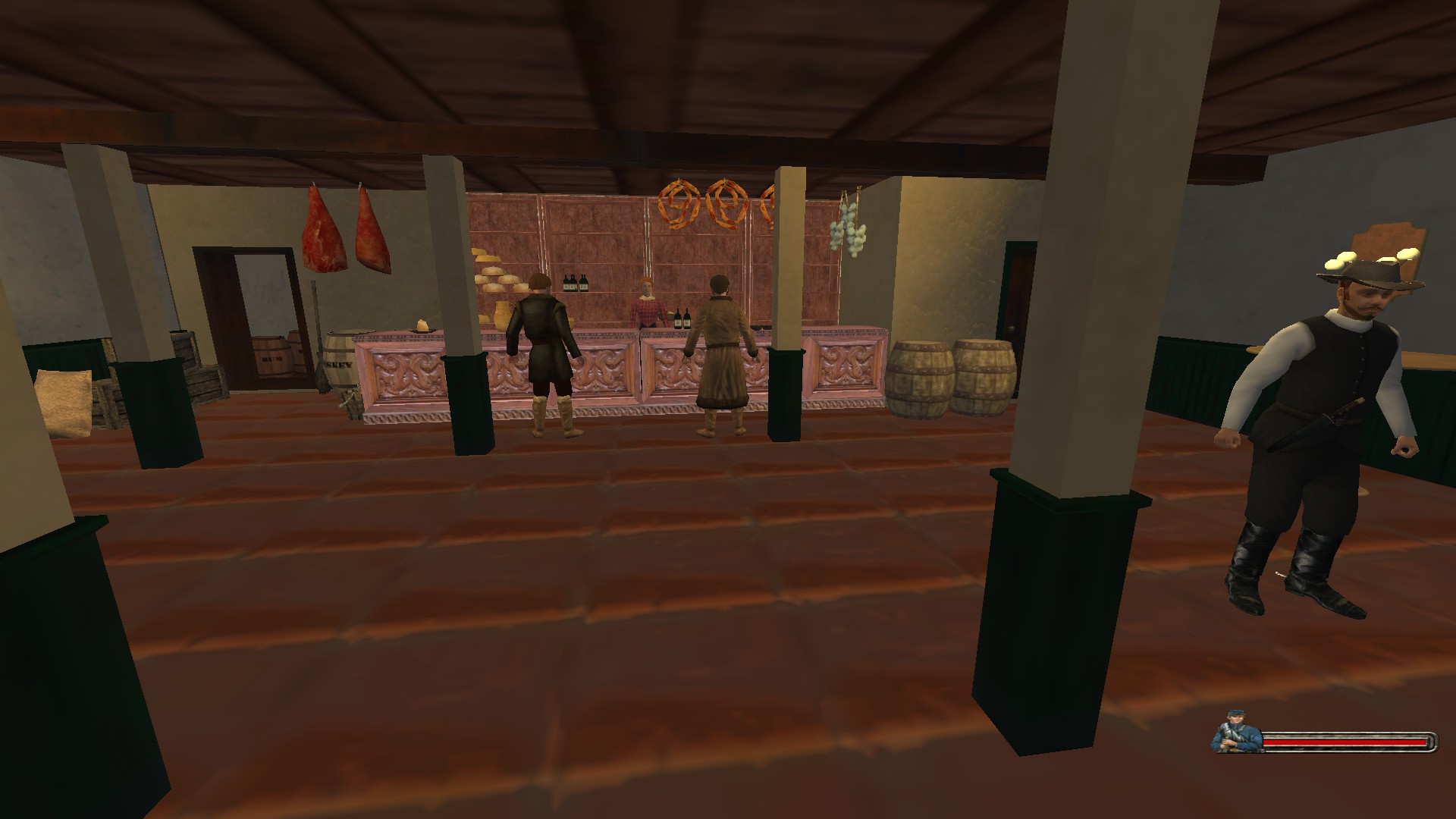
Belmont Mansion
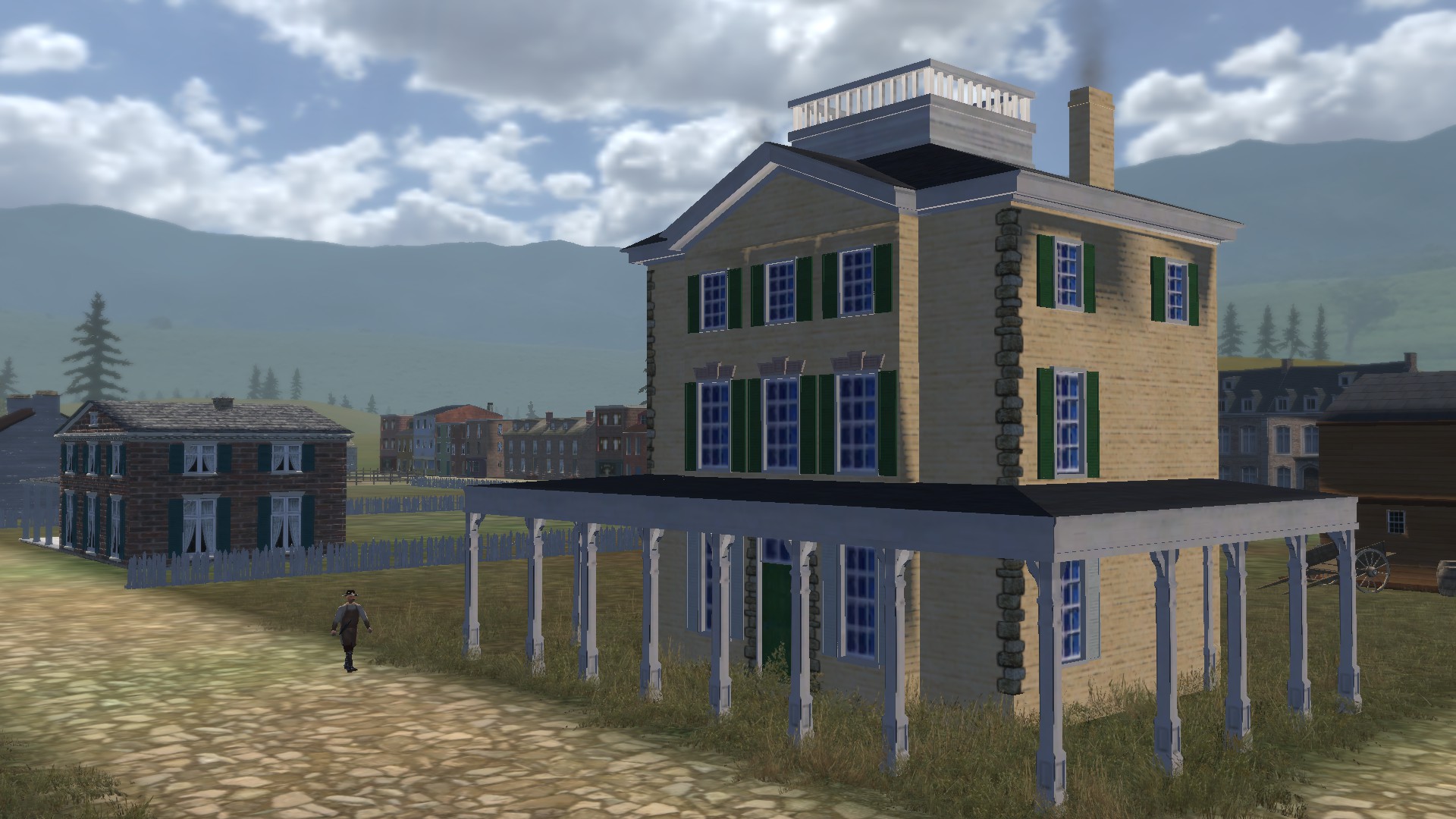
William Peters was an English lawyer and land management agent for the Penn family, and in 1742, he purchased the property where Belmont Mansion sits, as well as a group of farms. Peters designed and built the mansion in 1745 and then planted formal gardens around the building, creating what is today still regarded as one of the finest examples of Palladian architecture in the United States. As the American Revolution approached, the estate passed to William's son, Richard Peters Jr., who had been born there and served as Speaker of the Pennsylvania Assembly, a Pennsylvania State Senator and a Judge of the United States District Court. Richard Peters was also a member of the Pennsylvania Society for the Abolition of Slavery, notably having opposed the Fugitive Slave Act of 1793, as well as being known to purchase slaves in order to set them free, even going so far as to hide fugitives in his attic. An amateur scientist, he operated the estate farm as a working model of scientific agriculture. Many prominent figures of the Revolution stayed at the mansion, including George Washington, John Adams, Thomas Jefferson, and James Madison.
Philadelphia was the home of the 17th-century Quaker abolitionist movement, and was also the city where a young Harriet Tubman found freedom. Thousands of enslaved Africans escaped to freedom on the Underground Railroad, and Belmont Mansion made up one of the many safe houses in Philadelphia that offered shelter and safety to fugitive slaves.
Belfield
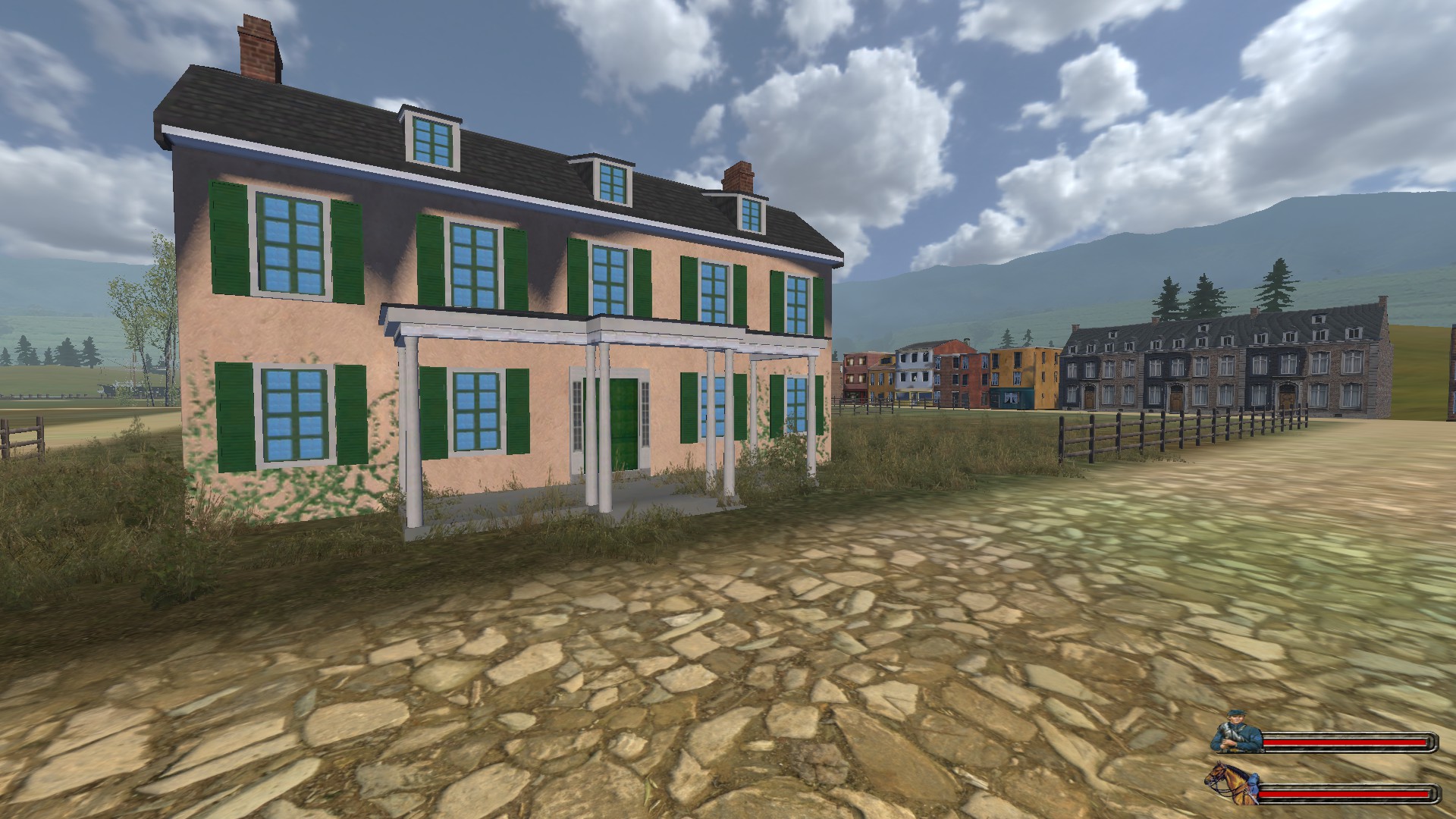
Belfield, also known as the Peale House, was the home of Charles Willson Peale from 1810 to 1826. When he was ready to retire, Charles Willson Peale turned over the administration of his natural history museum to his son, Rubens, and began to look for a small country estate to spend the remainder of his years. He purchased the land in 1810 from Charles Grégoire for $9,500, and initially named the estate 'Farm Persevere', writing to Thomas Jefferson that this was because, "by labor and perseverance I obtained it." Peale's friends thought that this name was far too solemn, and as a result, by 1812 he had changed the name to 'Bellefield', which later, became 'Belfield.' Though the exact date of construction of the main house at Belfield is unknown, Peale would later write that it was built by a Dutchman. Conrad Weber, one of the property's previous owners, was the son of a Dutch immigrant and therefore credited with building the main house, making the date of construction sometime after 1755.
After purchasing the property from Peale, William Logan Fisher and wife Sarah Lindley Fisher lived on the estate, and together the two had three children; Sarah Lindley, Charles William, and Mary Rodman. William gave the estate to his daughter, Sarah, upon her marriage to William Wister in 1826, and according to the Wister's great-granddaughter, Mary Meigs, Belfield served as a stop on the Underground Railroad, though there is no contemporary evidence of this claim. During this time, William Wister and William Logan Fisher together founded the Belfield Print Works, located at the edge of the property, and the Wister's eldest son, William Rotch Wister, had a house constructed on the estate in 1868 for his family. The estate was sold to La Salle University in 1984, and La Salle began a renovation of the estate, converting it from a farm into a park-like area. Several structures were demolished, including Peale's stable and hen house, which were leveled to construct a parking lot and later tennis courts, and the main house of Belfield was converted to the office for the President of La Salle University.
Frankfort
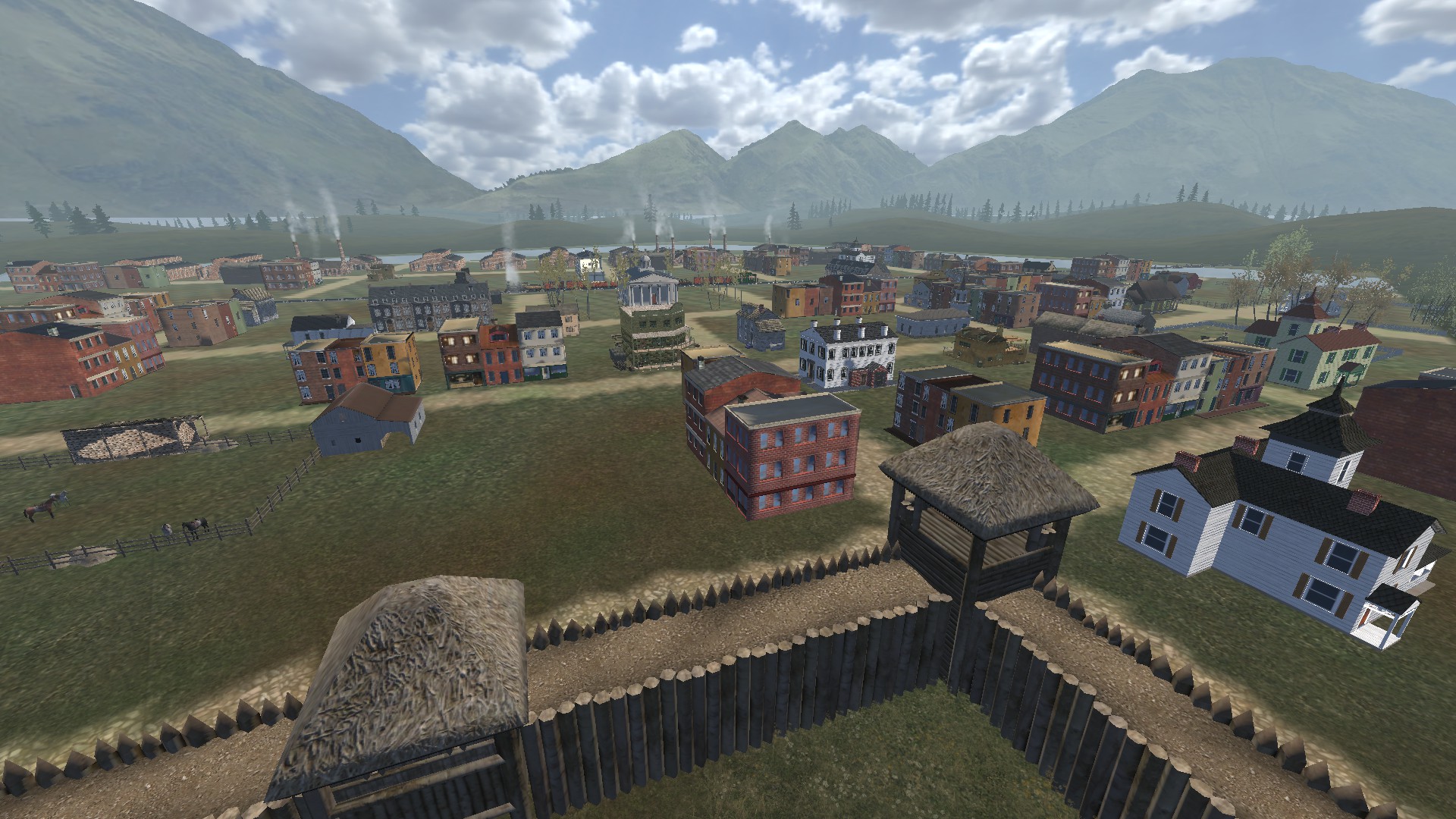
Thanks to some good quality maps of civil war era Frankfort found by members of the community and myself, I've managed to put together a fairly accurate scene for Frankfort in terms of the layout of the roads and the position of it's only landmark.
Frankfort State House
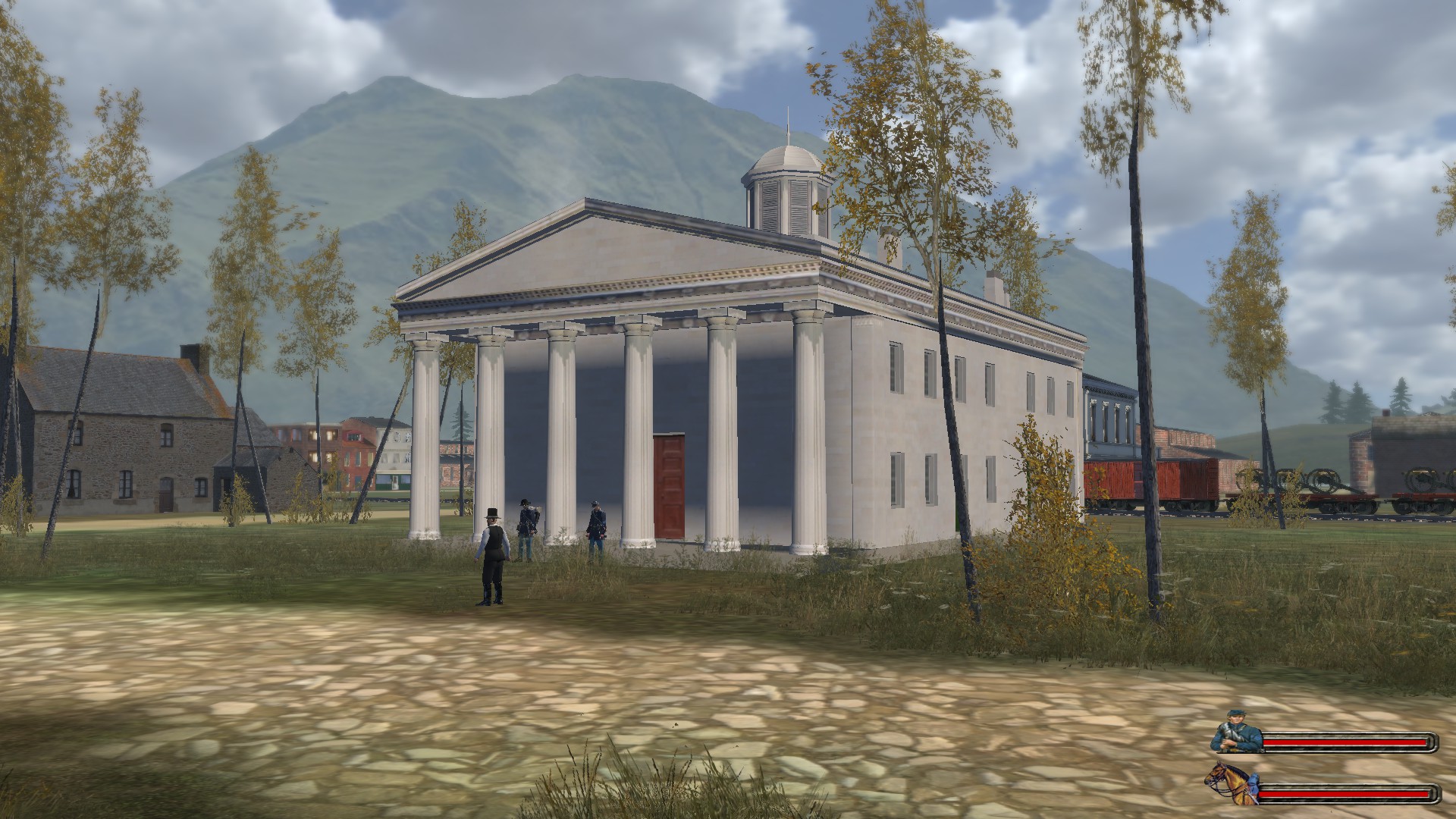
The Frankfort State House, also known as the Old Statehouse or the Old State Capitol, was the third capitol of the Commonwealth of Kentucky, and served as home of the Kentucky General Assembly from 1830 to 1910. The Kentucky legislature voted for its construction in 1827, and the building was designed in the Greek Revival style by Gideon Shryock. The Old State Capitol was his first building and he was only 25 years old when it was constructed. Shryock chose the Greek Revival style to symbolically link Kentucky, a young republic, with ancient Greece. He designed the front of the building to resemble the Temple of Minerva Polias at Priene. Since Greek temples had no windows, the front of the capitol also has no windows. Other architectural features include a self-supporting stone stairway and a domed lantern above it to bring in sunlight.
In the mod, the Frankfort State House serves as the headquarters building in the Frankfort town center scene and does include a new interior, however it is not yet furnished.
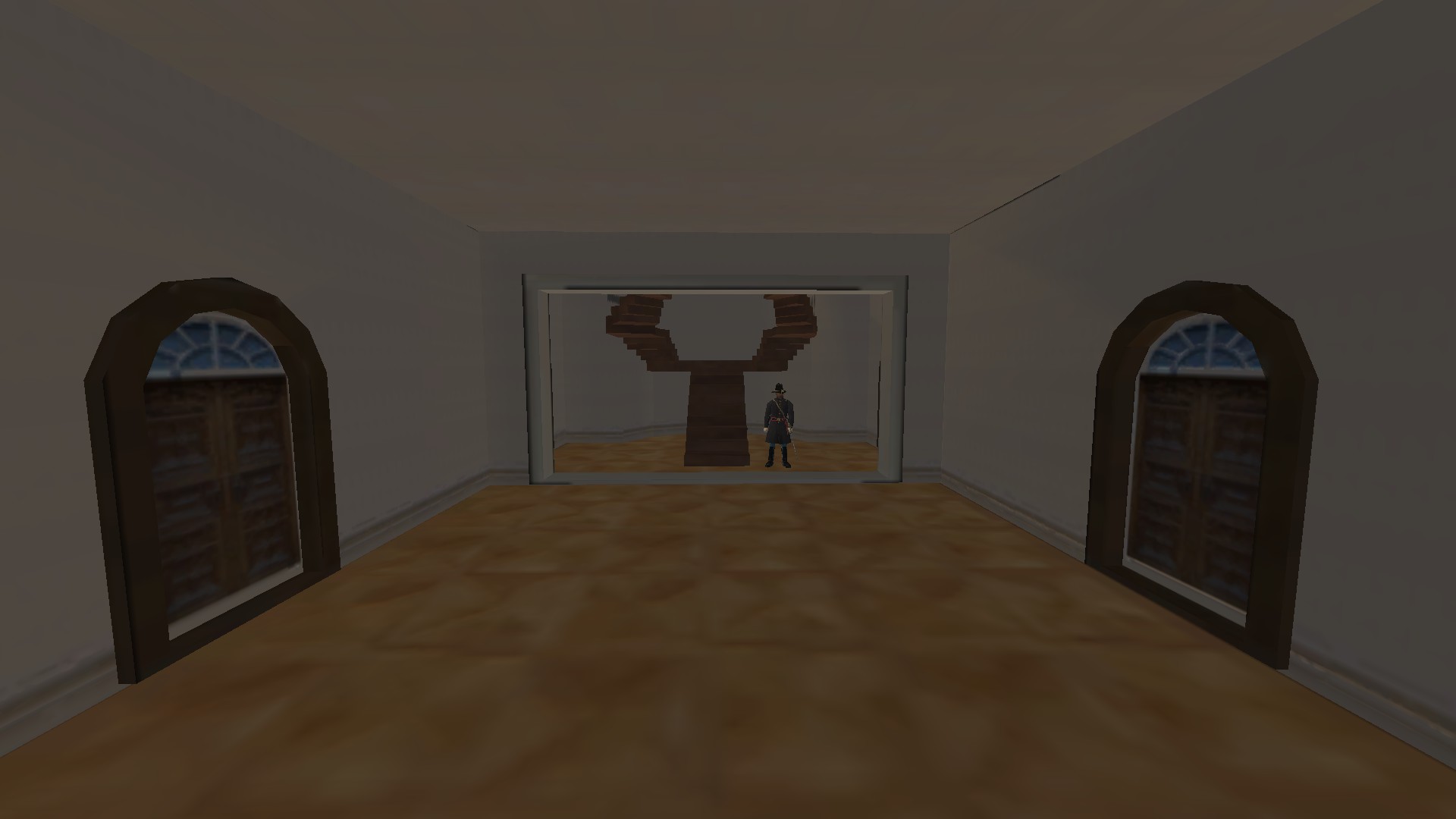
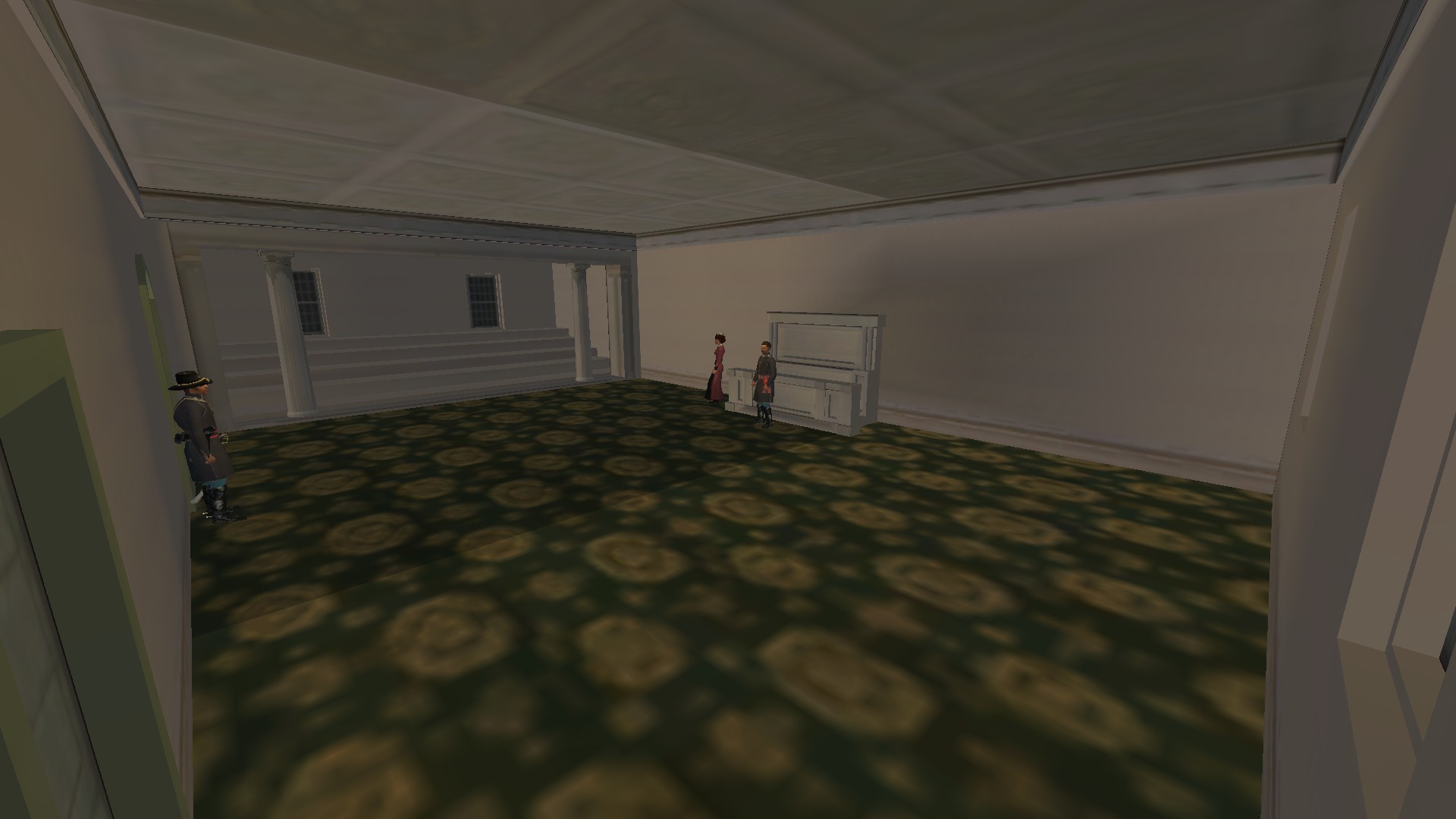
Montgomery
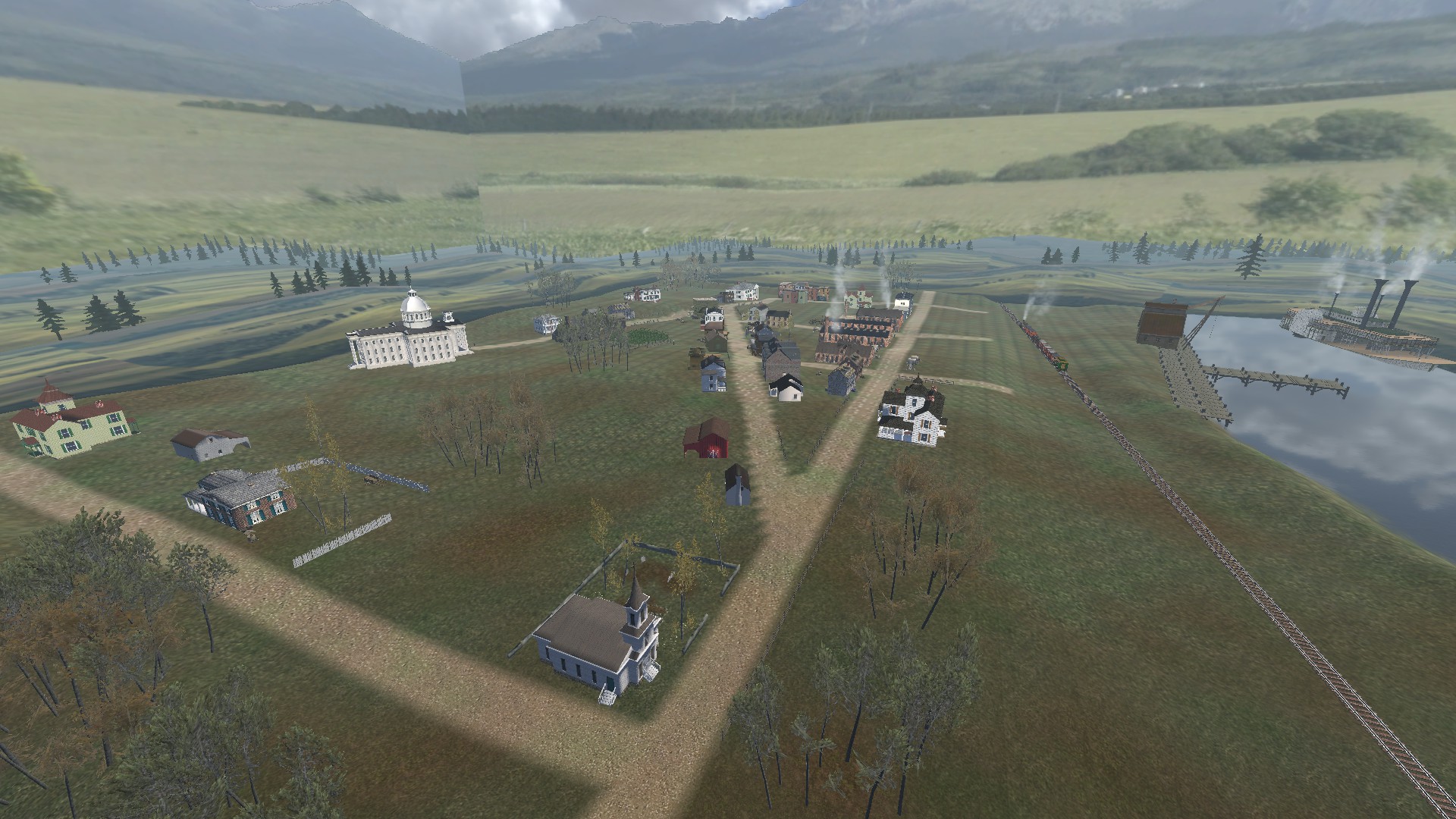
This scene is based on real maps from the time period, though it is scaled down. It is also not as detailed as previously shown cities because it is older work, but it does include two famous landmarks.
Alabama State Capitol
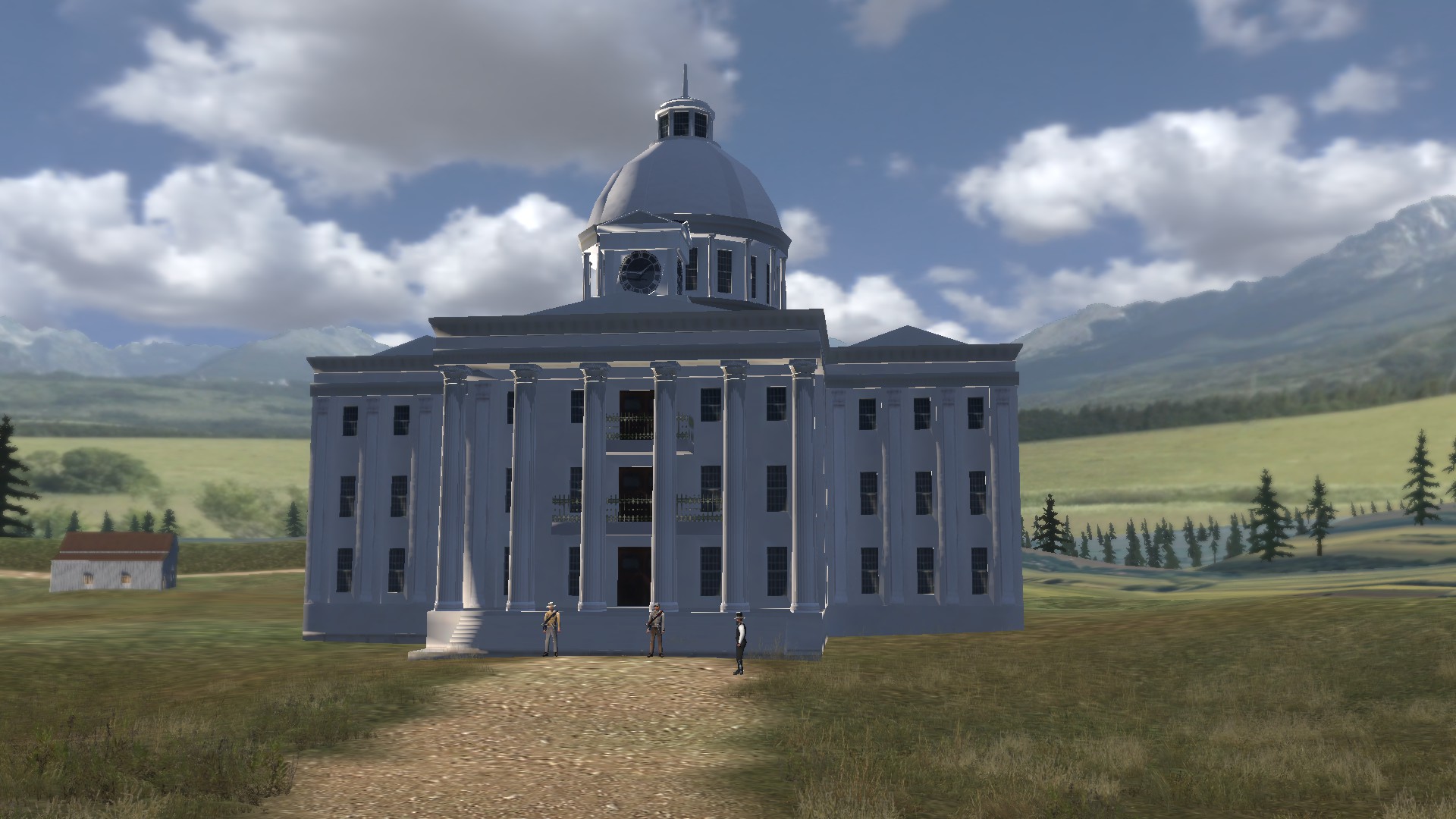
Alabama has had five political capitals during its history since it was designated as a territory of the United States. In 1846, the capital was moved to Montgomery following the development of a larger population in the state with the arrival of European-American settlers, often accompanied by their slaves, or slaves purchased after arrival in Alabama. The first capitol building in Montgomery, located where the current building stands, burned down two years after construction. The current building was built in 1851 in the Greek Revival style with some Beaux-Arts influences, with Barachias Holt as the supervising architect.
After Alabama seceded from the Union with six other Southern states, subsequently forming the Confederate States of America, the building served as the Confederacy's first capitol until May 22nd, 1861, when Richmond, Virginia was designated as the new capital. Delegates meeting as the "Montgomery Convention" in the Senate Chamber drew up the Provisional Constitution of the Confederate States on February 4th, 1861, and also adopted the Confederate Constitution here on March 11th, 1861. A commemorative brass marker in the shape of a six-pointed star is set into the marble floor of the front portico at the exact location where Jefferson Davis stood on February 18th, 1861, when he took his oath of office as the only President of the Confederate States of America.
In 1964, more than one hundred years after the end of the American Civil War, the third Selma to Montgomery march ended at the front marble staircase of the capitol building, with the marches and events surrounding them directly leading to the Voting Rights Act of 1965, which made racial discrimination in voting illegal in the United States of America.
In the mod, The Alabama State Capitol serves as the headquarters building and also has it's own custom interior.
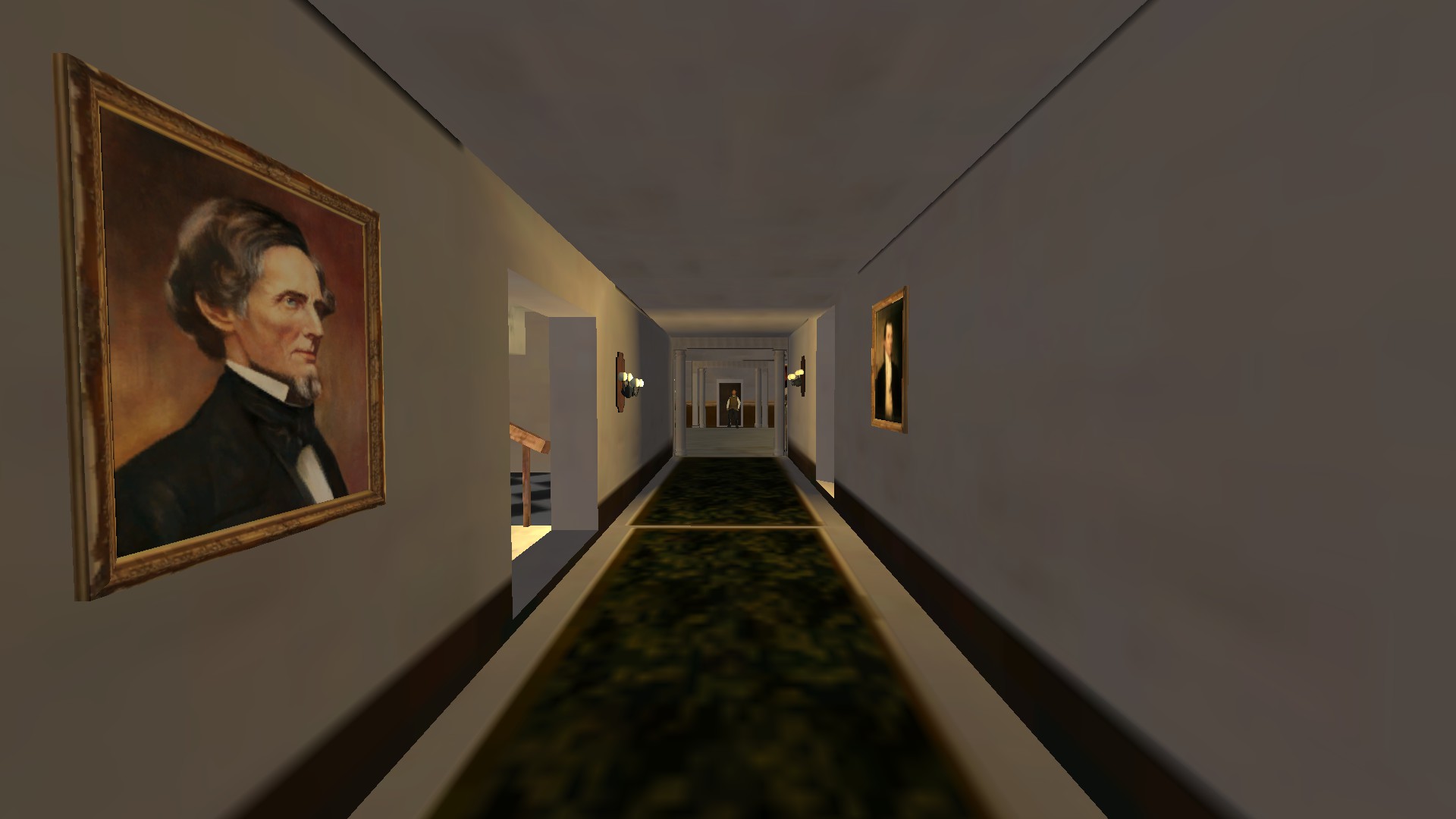
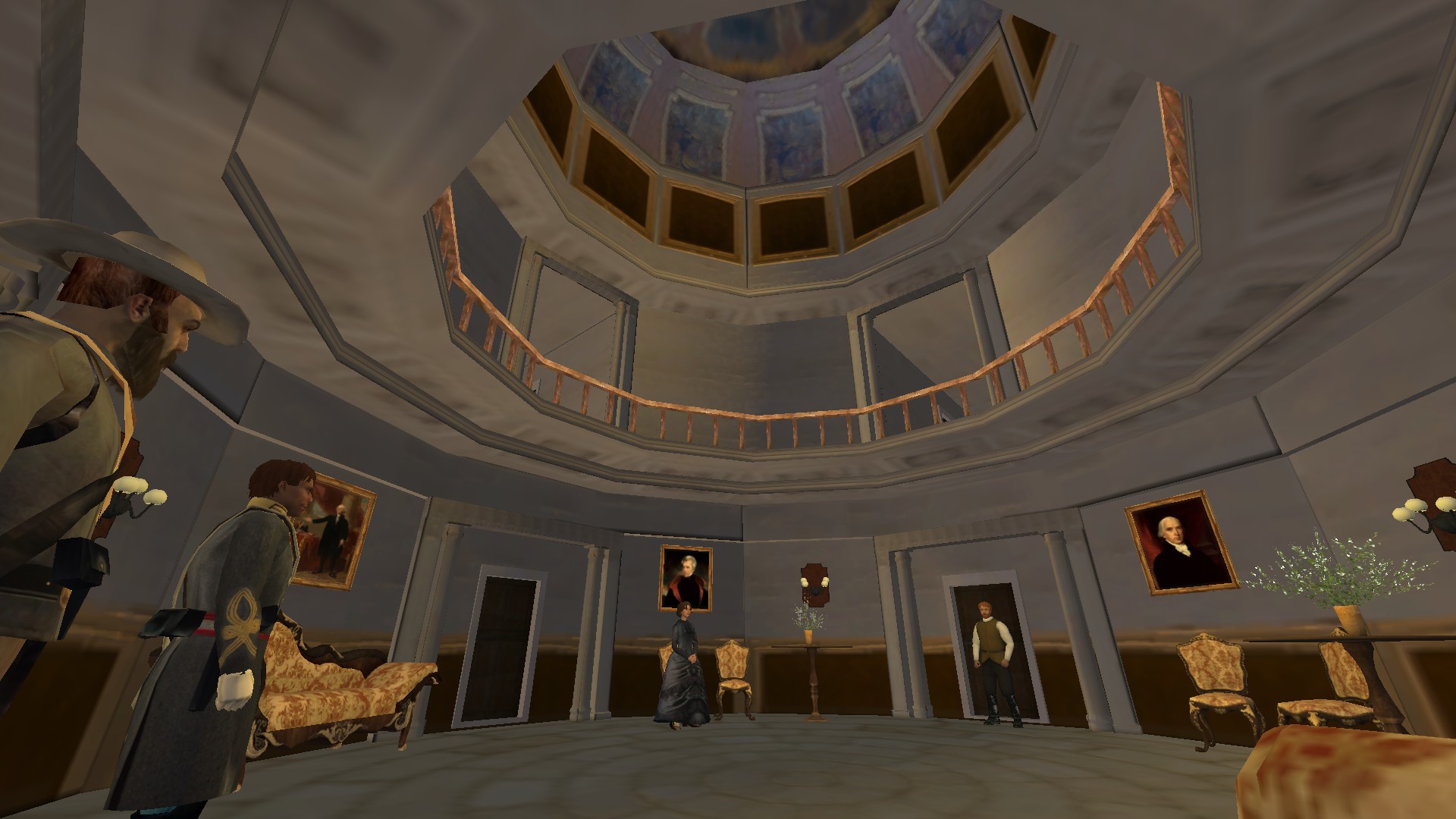
First White House of the Confederacy
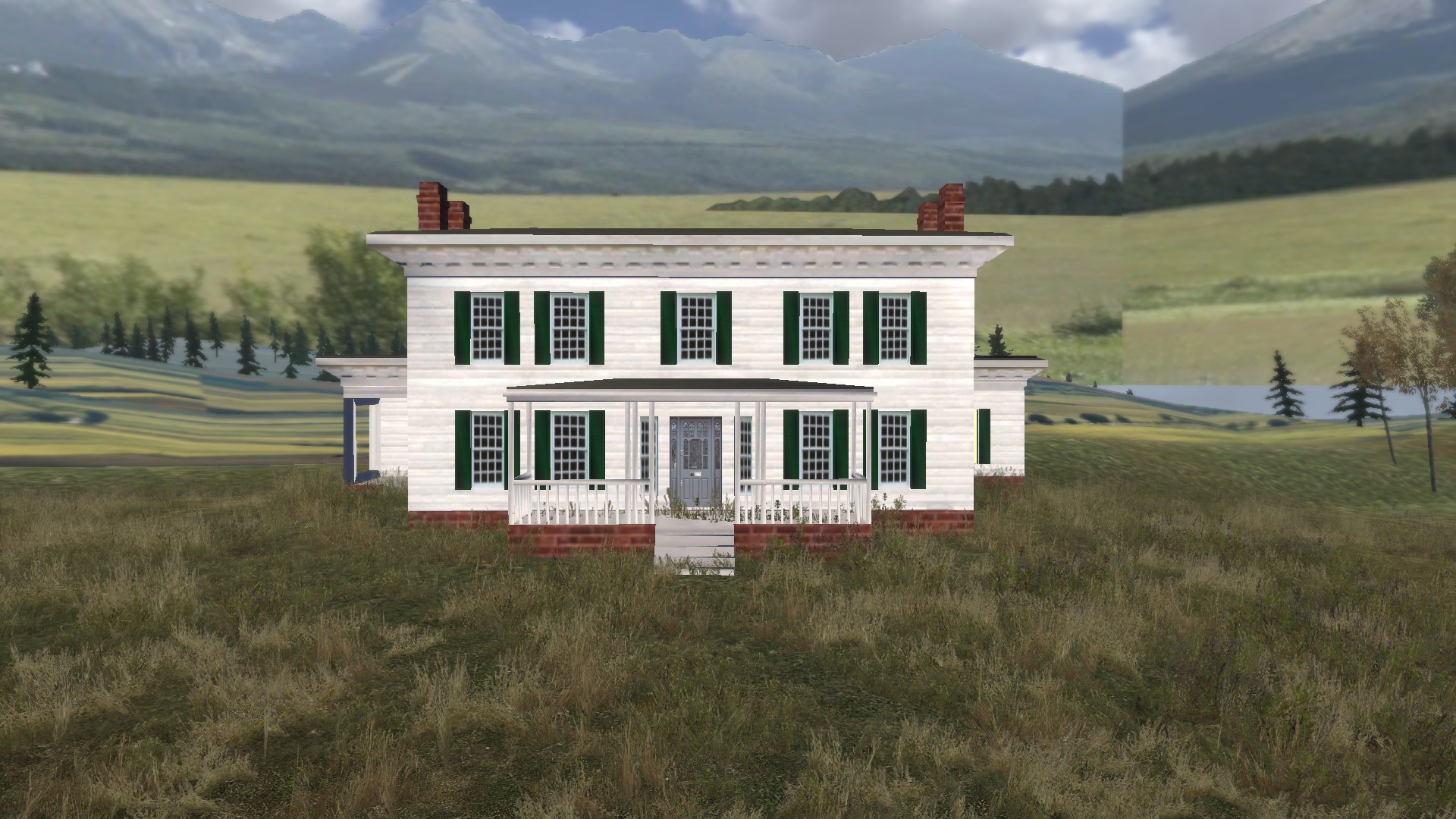
The Confederate White House is believed to have been built in 1825 in the Italianate-style of architecture by William Sayre, a merchant from Montgomery. Afterward, the house passed into the possession of Colonel J. G. Winter, who remodeled it and afterwards sold it to Colonel Edmond Harrison. In February 1861, shortly after selecting Jefferson Davis as president, the Provisional Confederate Congress met in Montgomery and authorized the leasing of an executive mansion. An offer came from Harrison, who offered to rent the house fully furnished and staffed for $5,000 per year. But after the Davises asked for extra furnishings of silver and linen, another $987 were added to the price of the lease. Additional furnishings were brought from the Davises own house in Biloxi, Mississippi. During the Davises' stay at this house, they threw many lavish parties, the first of which was held by Mrs. Davis for the ladies of Montgomery. On May 27th, 1861, the Davis family vacated the house and moved to Richmond, when the Confederate capital moved there from Montgomery.
The White House of the Confederacy survived the war, and passed through the hands of a number of private owners, until the United Daughters of the Confederacy began planning to purchase the building. Progress was halted, however, until the White House Association of Alabama was founded in 1900 and took over the project. The owner was unwilling to sell the land on which the house stood and the organization did not have the funding to move the house itself. By 1919, with the help of $25,000 from the Alabama legislature, the White House Association bought the house and moved it, and by 1921 the house was restored on its present day location. Completely furnished with original pieces from the 1850's and 1860's, the First White House of the Confederacy is open to the public, and has been listed on the National Register of Historic Places since 1974.
New Orleans
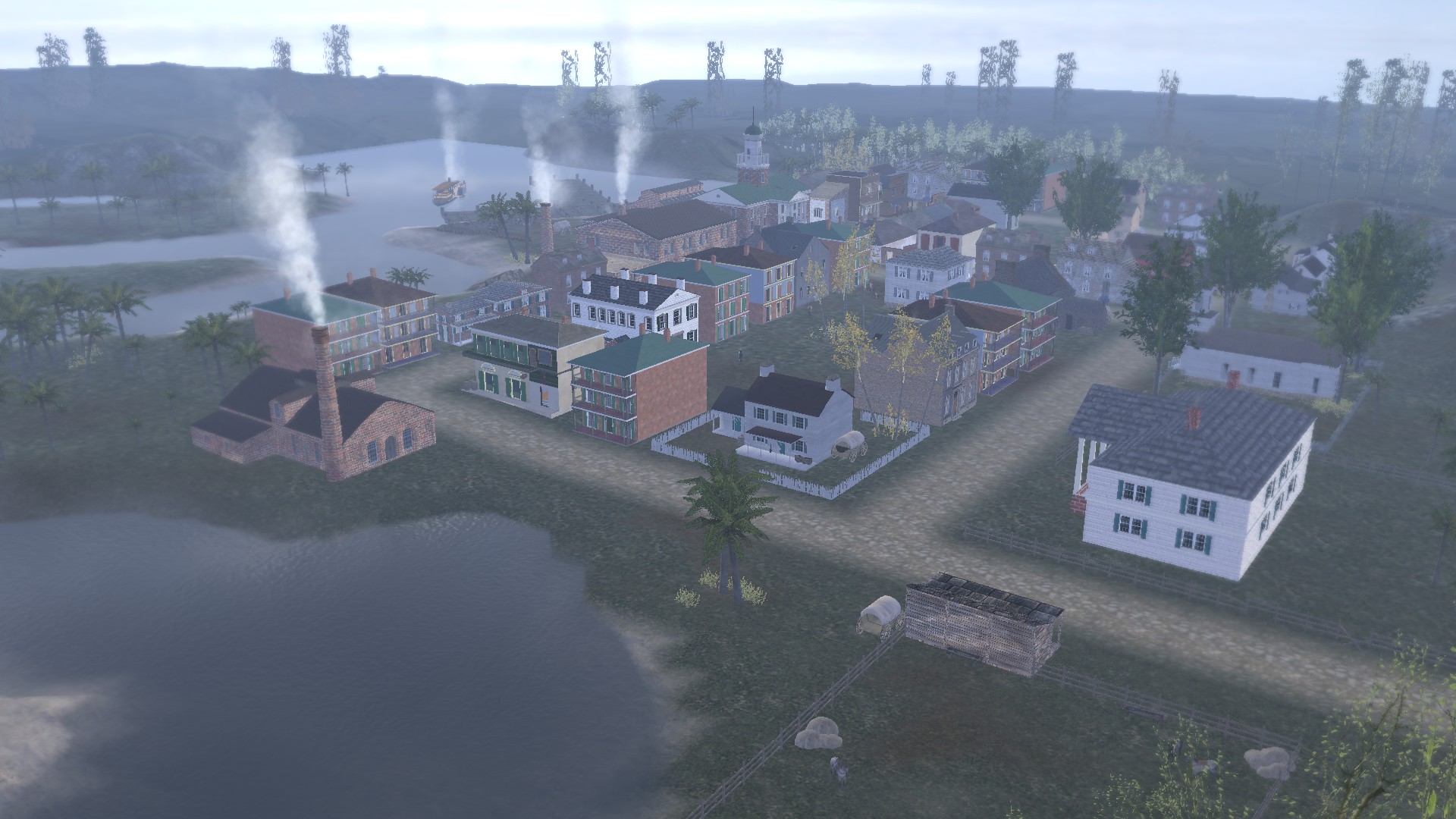
This scene for New Orleans is also an older work, and is actually built on the same terrain as the old scene. The overhaul for this city also includes new houses, exclusive to this city, in the distinct French style of New Orleans. This scene also includes two historical landmarks.
The Old Absinthe House
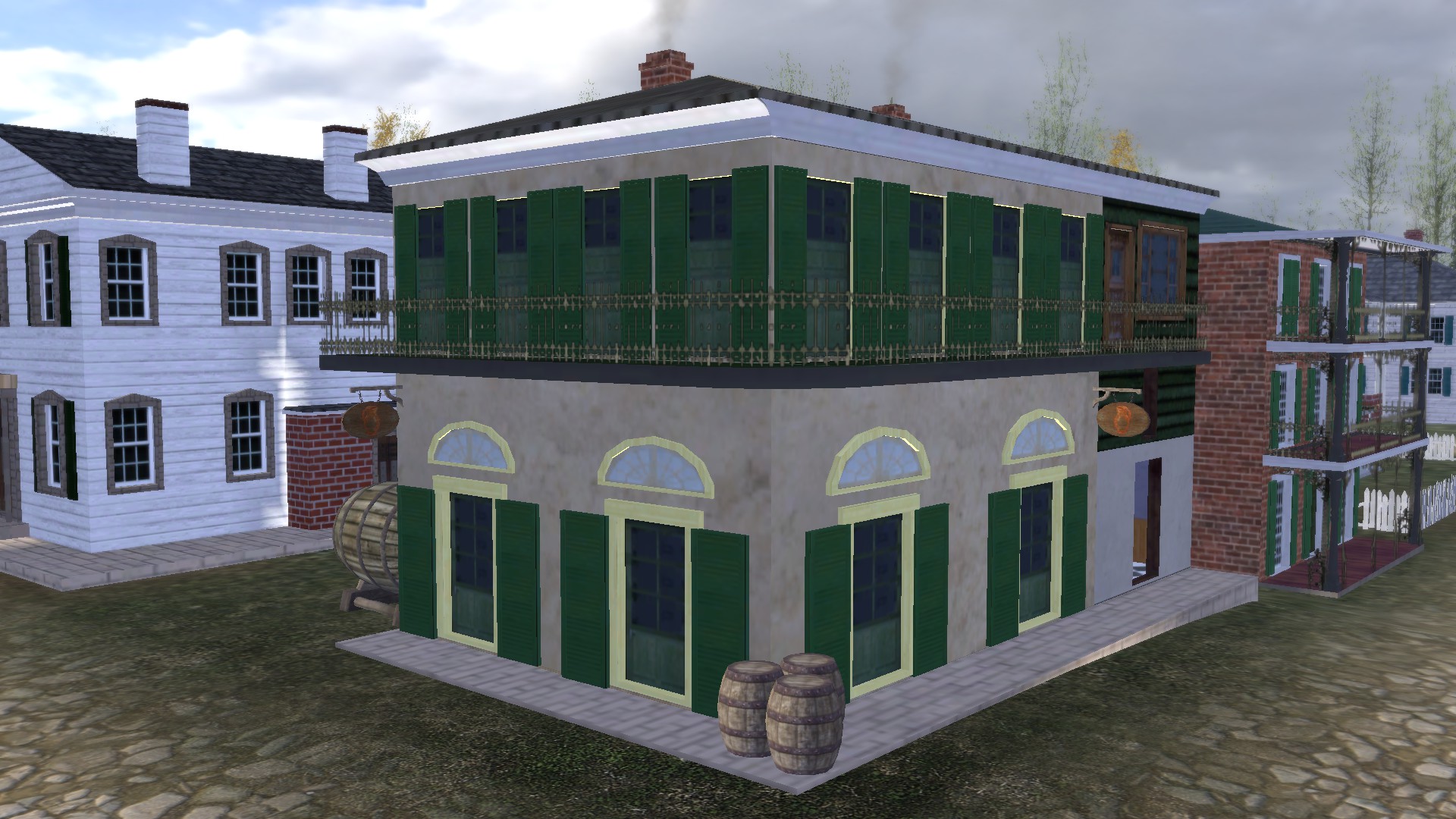
The Old Absinthe House is the oldest bar in New Orleans, and one of the oldest in America. Initially erected by Pedro Front and Francisco Juncadelia of Barcelona to house their importing firm, in the next forty years, the store functioned as a corner grocery, selling food, tobacco and liquor. In 1815, the ground floor was converted into a saloon known as "Aleix's Coffee House" and was run by the nephews of Juncadelia.
In 1812, General Andrew Jackson came to New Orleans to prepare the city for its critical role as the final battleground in the War of 1812, and found it woefully unprepared. Jackson had come to the second floor of the Old Absinthe House in the heart of New Orleans' French Quarter, to ask the pirate captain, Jean Lafitte, if he would help fight against the invading British forces. Lafitte demanded full pardons for him and any of his men who participated in the battle, and Jackson quickly agreed. Three weeks later, Lafitte's men and their skills as artillerymen acquired from their naval exploits, easily repelled the British, and effectively ended the War of 1812. In a twist of fate, the War of 1812 actually formally ended before the Battle of New Orleans, however the news did not reach the British and American forces before the battle took place.
Today, the Old Absinthe House stands almost exactly as it did in the time of Jackson and Lafitte, but with hundreds of more claims to fame. Numerous celebrities have passed through its doors and left photos, autographs, or the traditional attachment of a business card to the wall. The interior of the building has the same musty brick walls, the same ornate wooden fixtures, and the same water-dripping fountains for serving absinthe as it did when Captain Lafitte and General Jackson met there to plan the defense of New Orleans.
The Old Absinthe House serves as the tavern for the New Orleans town center scene and includes it's own custom interior.
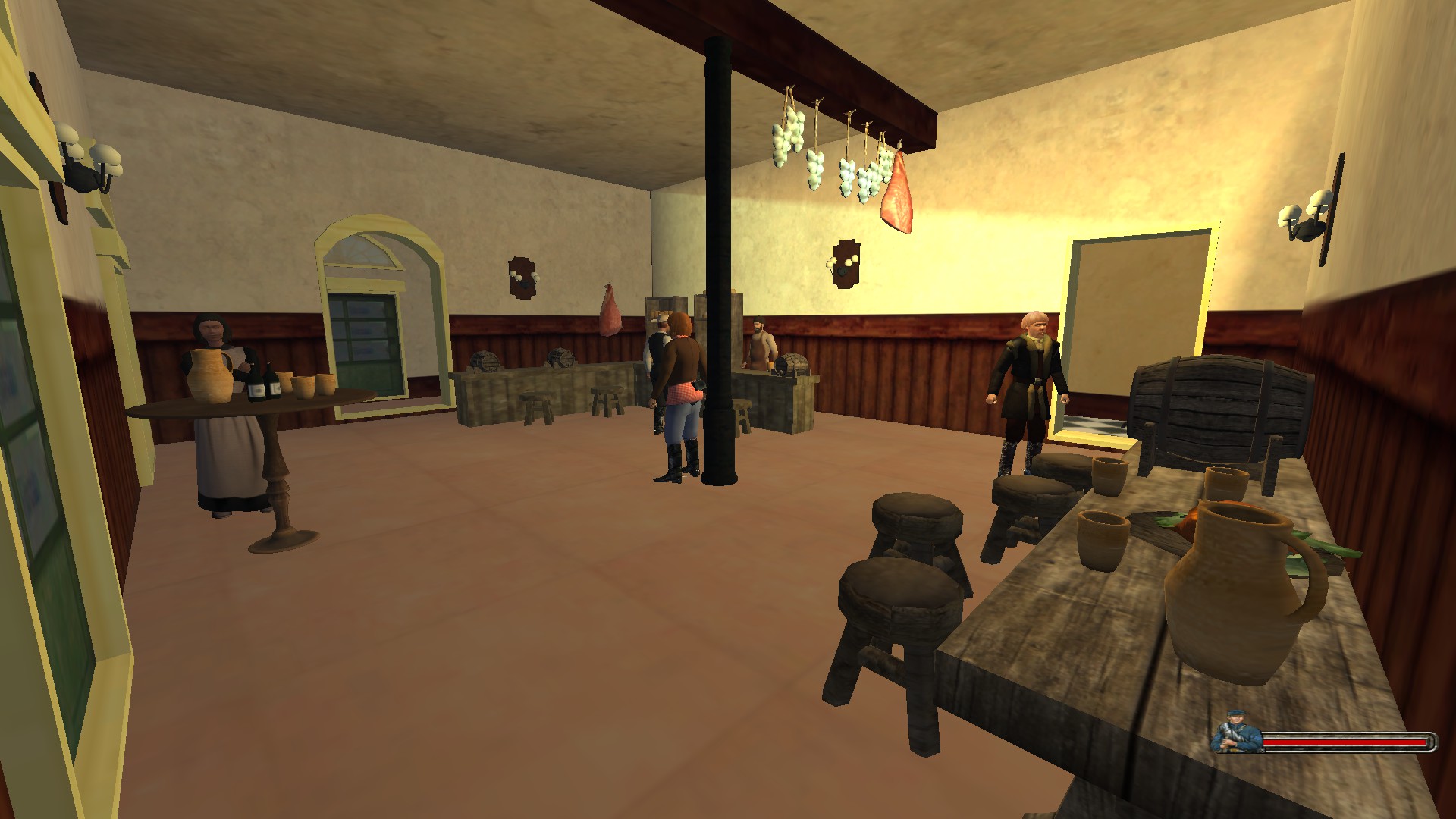
Lafitte's Blacksmith Shop
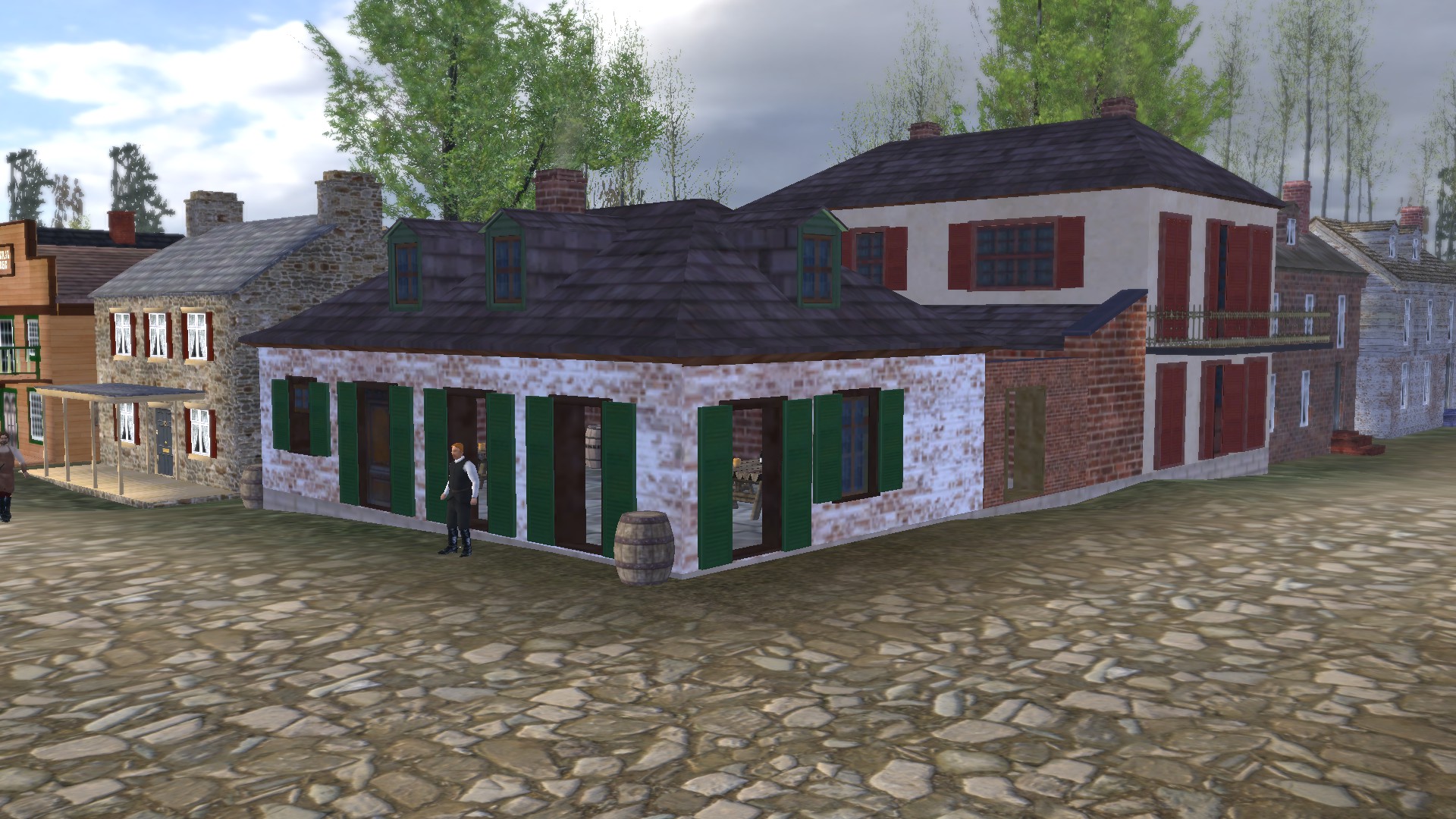
Most likely built as a house during the Spanish colonial period in the 1770's, Lafitte's Blacksmith Shop is one of the oldest surviving structures in New Orleans and is a rare example of "briquette-entre-poteaux" construction. According to legend, Jean Lafitte owned a business here in the early 19th century, but as with many things involving the Lafittes, there is no existing documentation of this. Lafitte's associates may have operated a smithy here, as Jean's older brother, Pierre Lafitte, was a blacksmith, and their associate, Renato Beluche, may have once owned the building as well. Jean and Pierre Lafitte also purportedly used the building as a cover for their illegal smuggling activities, though this claim also has no documentation to support it.
Fredericksburg
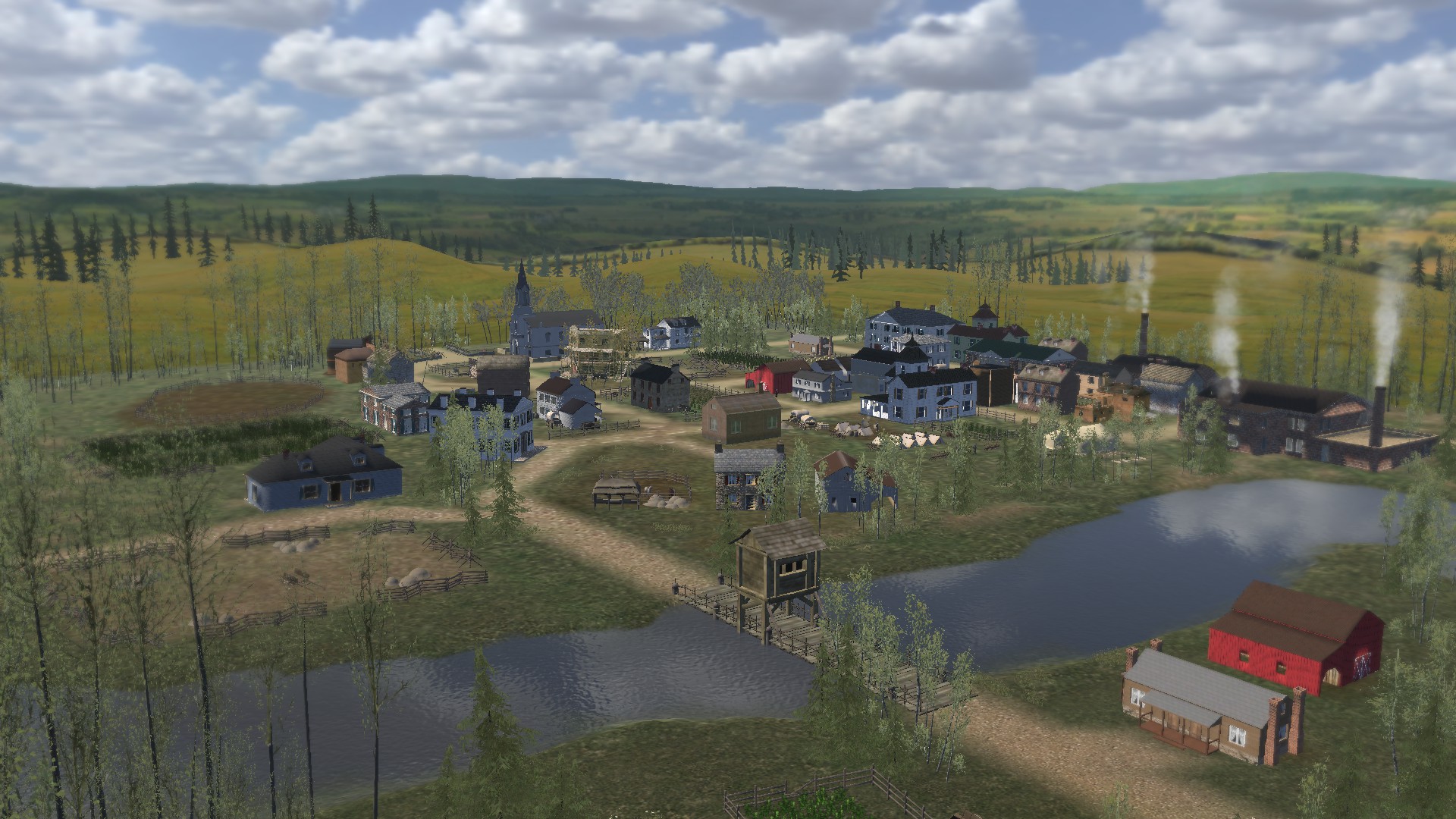
The new town center at Fredericksburg is not based on historical maps, but is instead built on a terrain that already existed in the mod and suited well as a replacement. There is only one landmark on this scene currently.
Fredericksburg Baptist Church
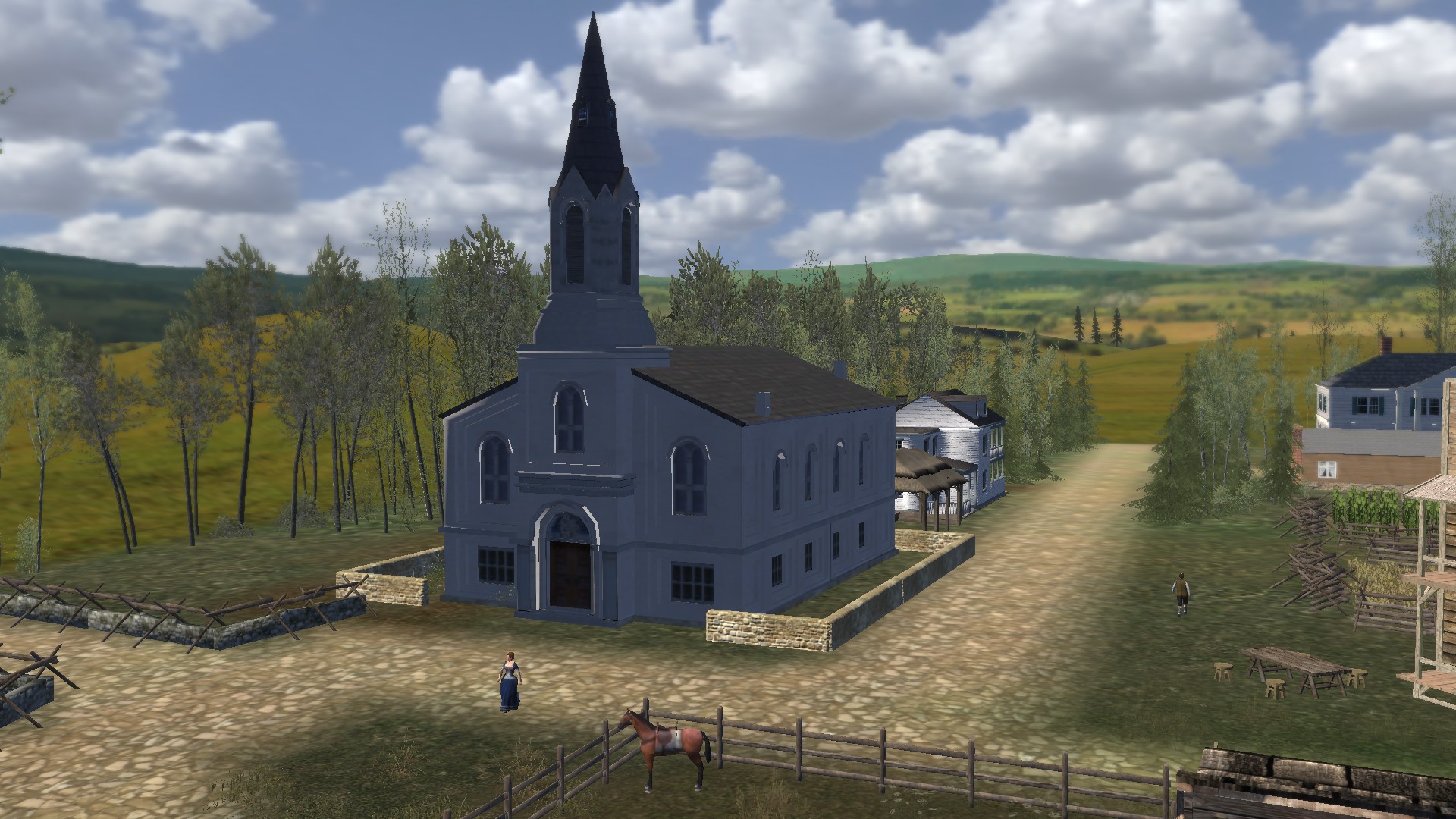
Founded in 1804 under the name of "Shiloh", and with origins dating back to the 18th century, Fredericksburg Baptist Church is one of a few historical churches that can still be found in the Fredericksburg Historic District. The church experienced several difficulties in its early years, including a schism that found several of its members leaving to begin a local "Disciples of Christ" church in 1832. The church persevered, however, and even grew in numbers. By the late 1840's, the congregation had over 800 members, with nearly three-fourths of them being slaves or free African Americans. Under the guidance of Reverend William F. Broaddus, the construction of the current day sanctuary building ended successfully in 1855. The white members of the church moved to the new building and renamed themselves, "Fredericksburg Baptist Church", and the old meeting house was sold to the black congregants, who went on to form an independent body.
In July of 1862, Reverend Broaddus was seized as a hostage by Federal authorities and imprisoned in Washington, D.C. until his release in September. The following December, the city experienced extensive damage during the Battle of Fredericksburg, with the church building itself being badly damaged as a result of the artillery bombardment, as well as its later use as an army field hospital. The devastation caused by the war forced most townspeople to flee to other areas to live, including Reverend Broaddus, who relocated to Charlottesville, Virginia. The church would not hold service from December 1862 until the end of the war in 1865. After the war, members of the church returned to find the church building in a very bad state and requiring substantial repairs. Despite their own economic hardships, the church members were determined to restore the church, and in the spring of 1866, the church called a new pastor, the Reverend T.S. Dunaway, to lead them through the rebuilding process. Under his leadership the church building was repaired, membership grew, and the church's financial issues were resolved. He remained as pastor until his retirement in 1898, having served the longest of any minister in the church's history.
The members of the Fredericksburg Baptist Church went on to continue to work on behalf of those in need over the course of several generations, still holding Sunday service to this day, and in their own words, "The history of this church is really a history of a people of God - a people of faith, vision, love, commitment, and hope. That heritage continues today as strongly as ever."
St. Louis
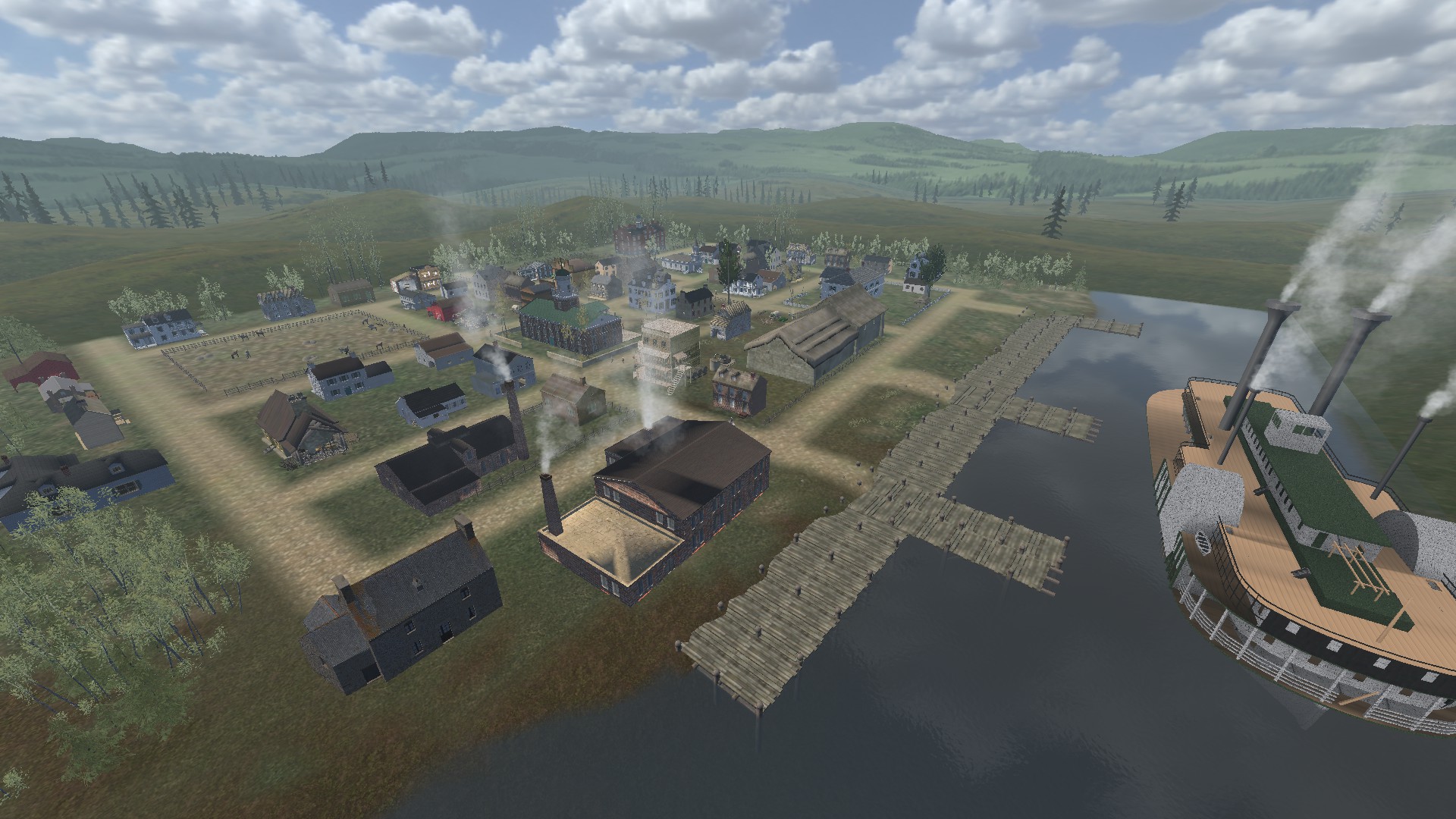
This scene, and the last three that will follow, do not have any landmarks since they were earlier works that are not as large or detailed as the previous ones, which were finished more recently. These scenes will most likely be remade in the future.
St. Augustine
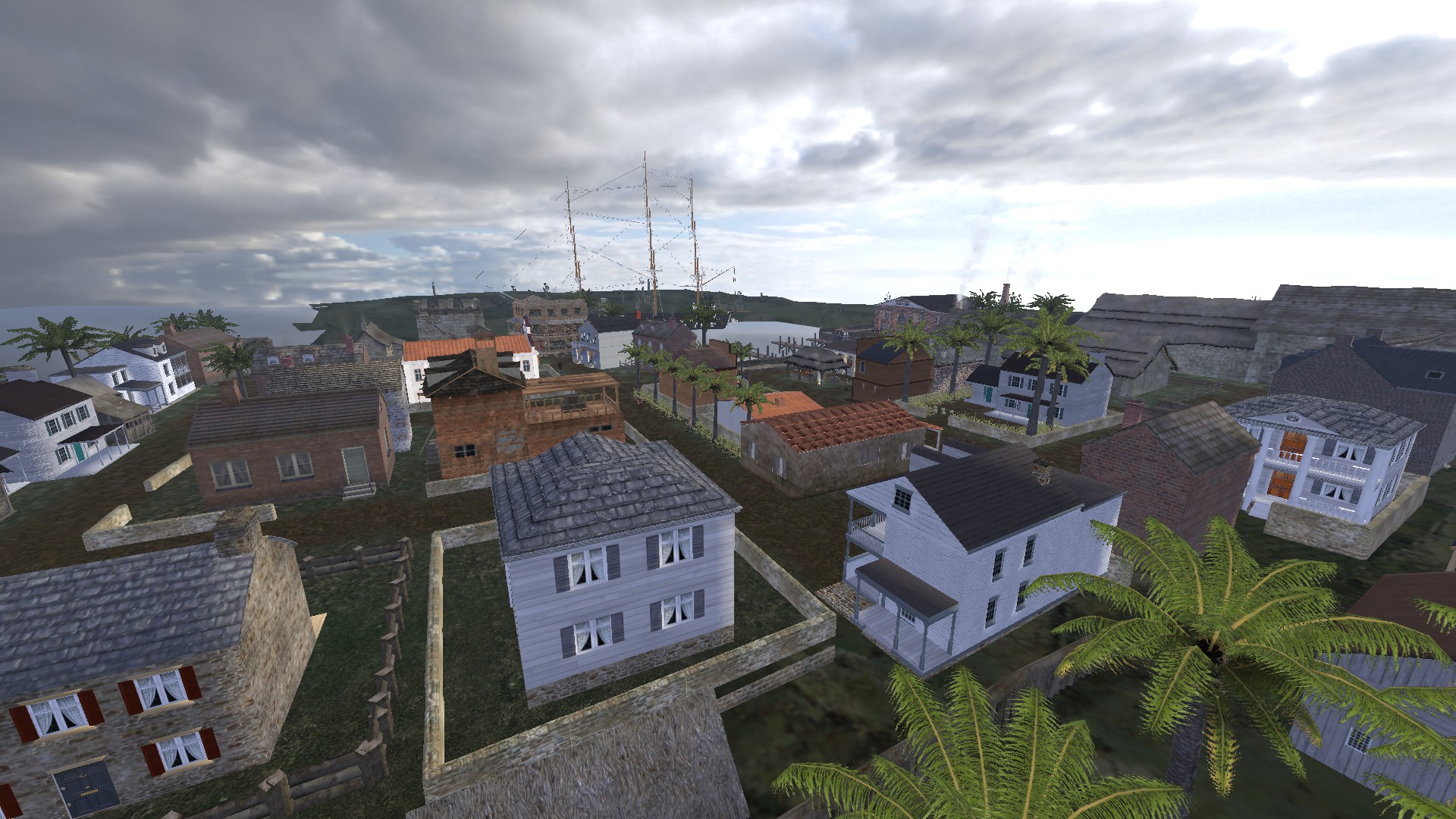
Worth noting about St. Augustine is that some of the houses and the church are a Spanish style of architecture, since St. Augustine was a founded by the Spanish in 1565, and it is in fact the oldest continuously inhabited settlement established by Europeans within the United States.
Nashville
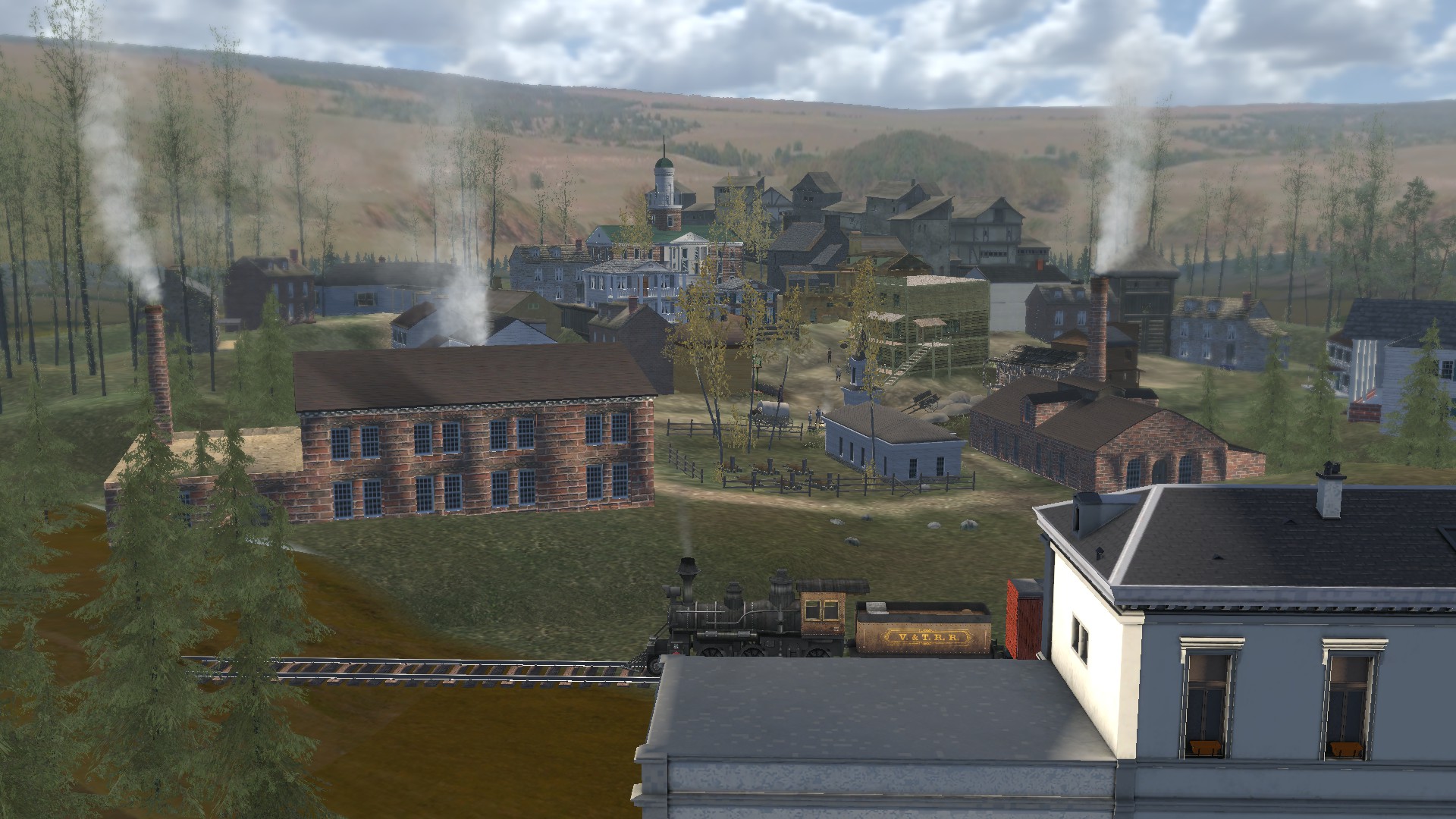
Charleston
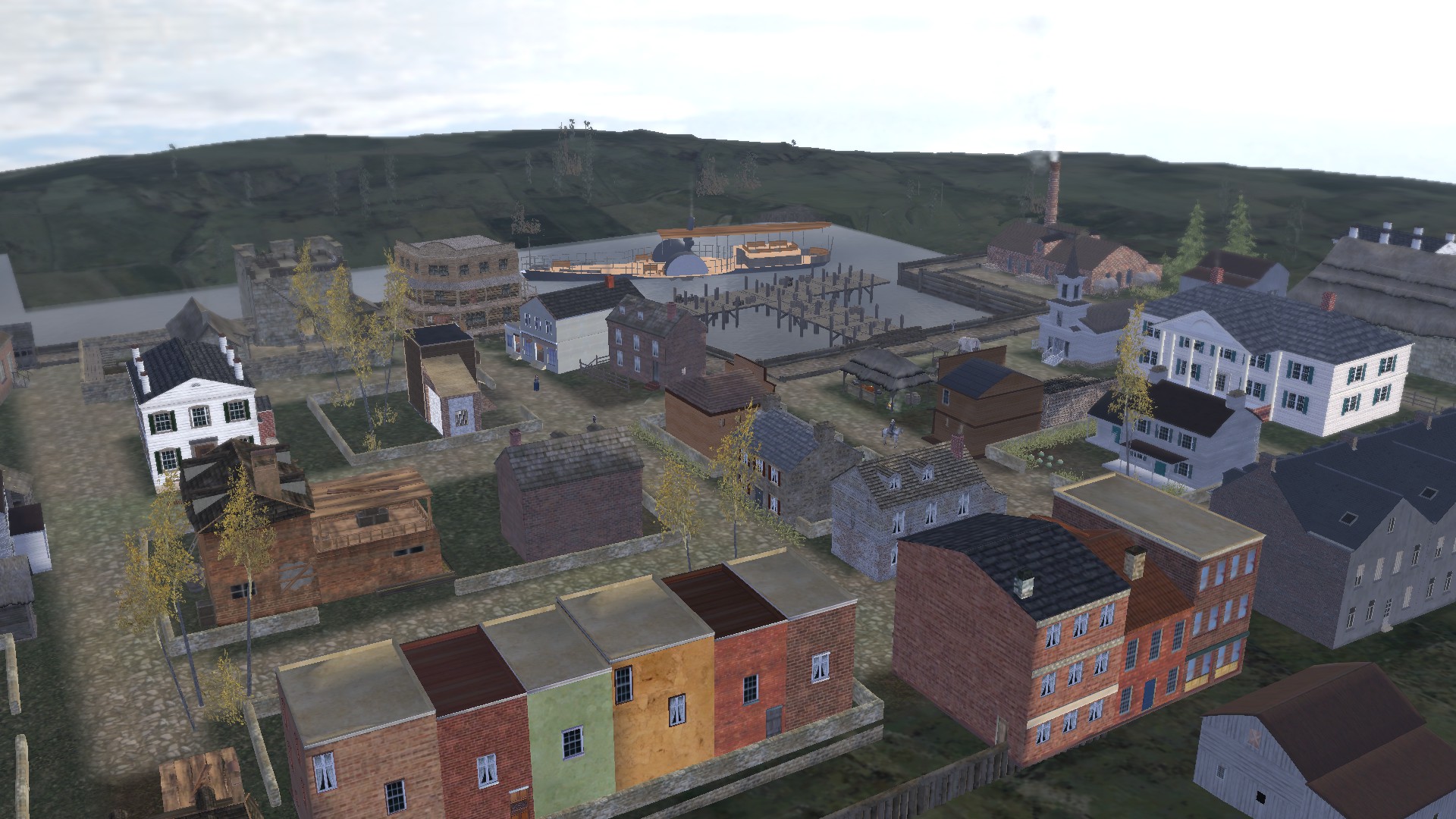
New Units
1st Tennessee Volunteer Infantry "The Tennessee Riflemen"
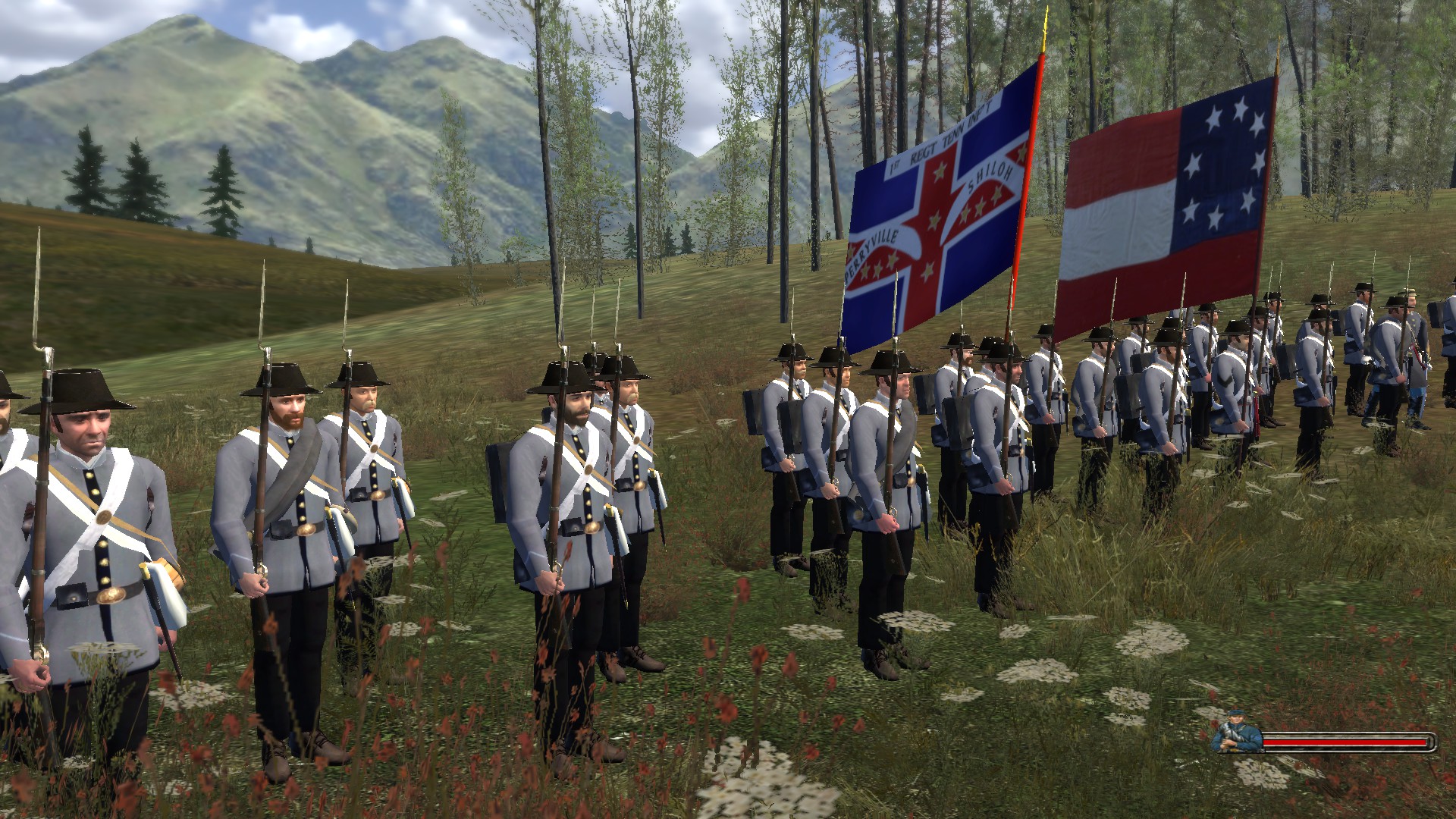
A big change that is coming soon is there will be several more Confederate regiments coming to the mod, due to the fact that the Army of the Tennessee and the Army of the Pensacola both use the same zouave regiments as the Army of Northern Virginia, so this potential for replacement has opened up 6 new slots on the troop tree that can be used for completely new regiments. The first of these we are releasing with this update, and the rest will follow in the future. The Army of the Pensacola will actually need an entirely new zouave troop tree, based on something generic that is similar in fashion to how we already have volunteer and regular zouave regiments. Most likely it will simply be called "Confederate Reserve Zouaves", and follow the same upgrade pattern as usual, with levels being defined by experienced, veteran, and battle hardened, and the new units will branch off from those tiers. You may have also noticed that the 1st Tennessee Volunteer Infantry is the same regiment that Private Sam Watkins fought with, who we quoted earlier on in the article. However, Private Watkins fought in Company H, "The Maury Greys", while the men we have portrayed here are from Company E. Most likely the uniforms of the Maury Greys were the standard grey and butternut, so using The Tennessee Riflemen instead gives us something visually new in the game. They wear grey uniforms with black trimmings, as well as black pants and hats, and come equipped with the Pattern 1853 Enfield Rifle Musket. Historically, there actually were not very many zouave regiments that served with the Confederacy in the west, and the one's that did, look exactly like the one's already in the mod, or were zouaves in name only. Because of this, the new regiments, including this one, will be other Confederate infantry regiments that saw combat and look unique.
Zouave Officers

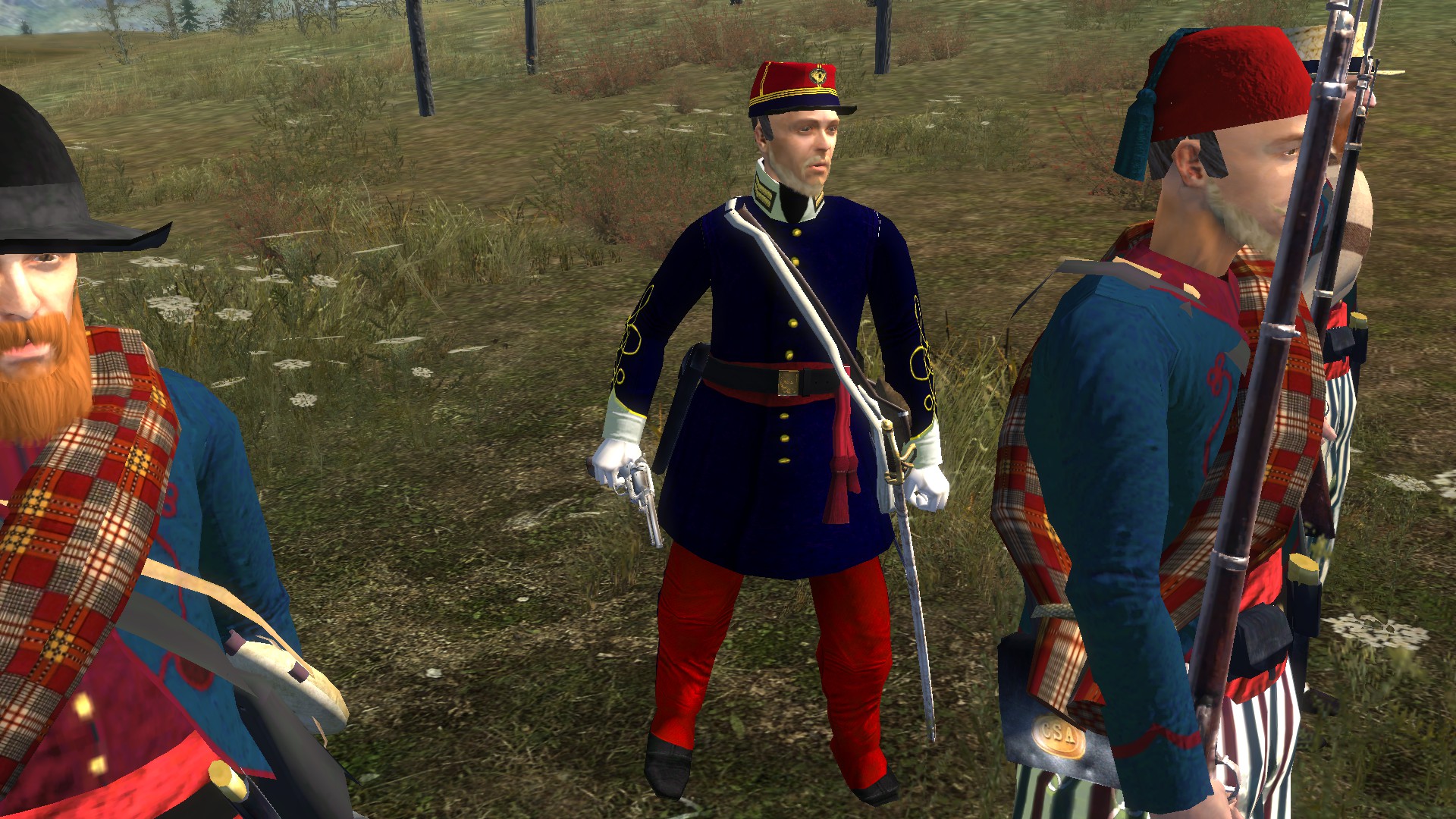
While not a new unit in the sense of an entirely new regiment, this individual character was something that was lacking from the mod before, and it is a welcome addition to have officers for both Union and Confederate zouave units. The officers have new uniforms as well, which is great to add that level of authenticity and variety. The uniforms of both sides look similar, but there are differences that set them apart, for example the grey collars and cuffs on the Confederate uniforms, as well as the location and style of the rank insignias.
New Items
Maynard Carbine
The following two new weapons were actually available to us before, but we had omitted them from the mod because we had incorrectly believed they were either from after the American Civil War, or were not used in large numbers.
The First Model of the Maynard carbine was manufactured between 1858 and 1859, and about 5,000 of these models were made. The United States distributed the Maynard carbines in their possession to the 9th Pennsylvania Cavalry, the 1st Wisconsin Cavalry, United States Marines stationed aboard the USS Saratoga and the United States Revenue Cutter Service. The Confederacy had about 5,000 Maynard carbines in .35 caliber that were purchased by the State of Florida, 650 carbines in .50 caliber by Georgia, and 325 carbines in .50 caliber, as well as 300 in .35 caliber by Mississippi. Militias in South Carolina and Louisiana also purchased around 800 carbines. The Second Model, also known as the Model 1863, was manufactured between 1863 and 1865, with over 20,000 carbines being made. This new model lacked the tape primer and stock patch box, and was used by the 9th and 11th Indiana Cavalry Regiments as well as the 11th Regiment Tennessee Volunteer Cavalry, among others. The Maynard had a good reputation for long range accuracy, and Confederate sharpshooters made extensive use of it, especially during the Siege of Charleston.
Hawken Rifle
Built by the Hawken brothers and used on the prairies as well as in the Rocky Mountains of the United States during the days of the early frontier, the Hawken rifle has become synonymous with the "plains rifle", the buffalo gun, and the fur trapper's gun. Developed in the 1820s, it was eventually replaced by breechloaders such as the Sharps rifle, and lever-action rifles like the Henry and Winchester, which flourished after the American Civil War. Samuel and Jacob Hawken were trained by their father as rifle smiths on the east coast, and they produced what their customers needed out west: a quality gun, light enough to carry all the time, and capable of knocking down big targets at long range. The Hawkens did not mass produce their rifles, but rather made each one by hand, one at a time. The two brothers called their guns "Rocky Mountain Rifles," reflecting their customers who were primarily fur trappers, traders and explorers. The Hawken rifle company was sold in 1862, and the last rifle actually made by a member of the Hawken family was built in 1884. During the Civil War, Hawken Rifles as well as similar rifles made by Hawken's competitors, were sometimes used by sharpshooters on both sides, such as Birge's Western Sharpshooters.
Officer Horses
I've made a new set of horses which have an officer's saddle on them, so those who play as officers have a little more choice besides the one white officer horse we had before. I've also done a little research on the horses that belonged to some of the famous generals in the mod, and I have tried to give them the horse that most closely resembles their real life counter part. For example, Robert E. Lee rides a dapple grey that is similar to his horse, Traveler, and Ulysses Grant rides a black horse similar to the one he rode, named Cincinnati.
New Book Covers
All the reference books in the mod have been replaced with a new mesh and textures that match the real life covers of the books used.
New Hats
Confederate infantry will have a couple of new hats added to the variety of headwear they are equipped with. The first image below is a "beehive" style of hat, along with a reference photo. These style of hats were very common.
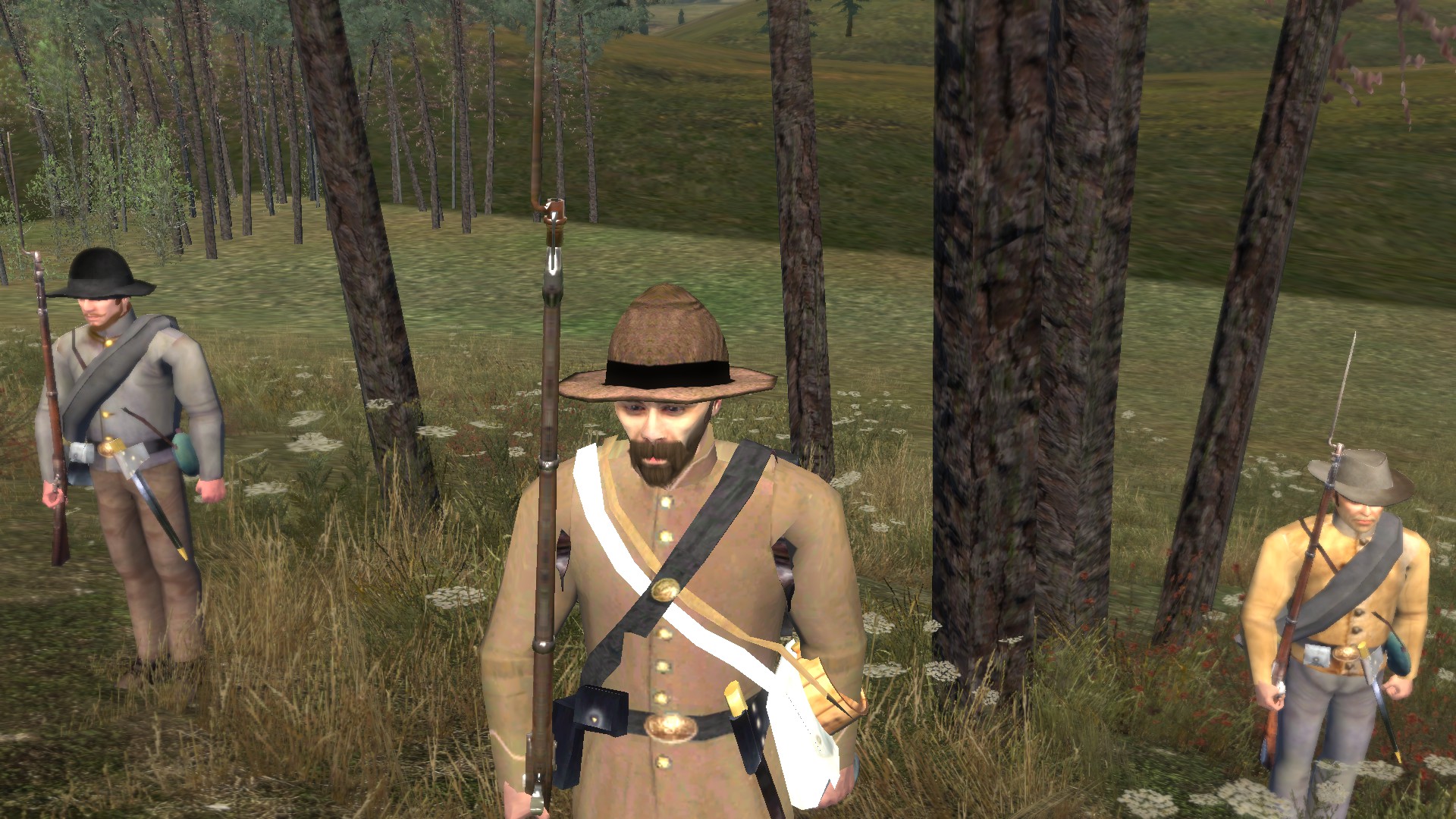
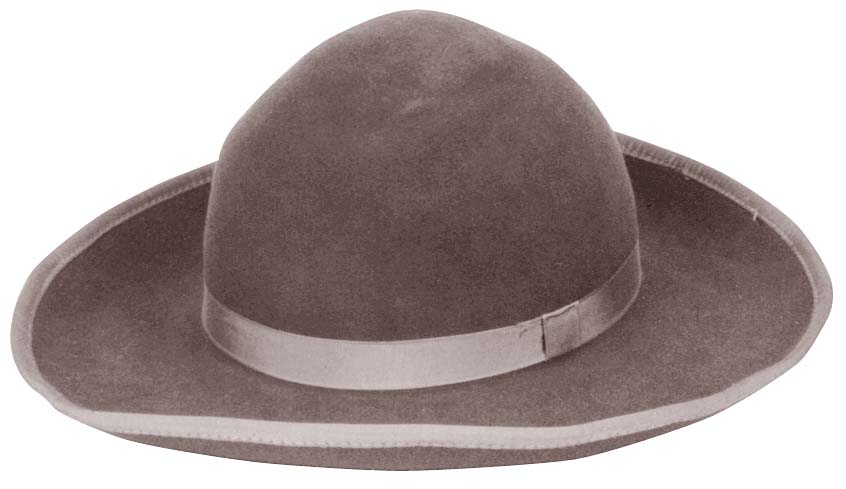
The second hat is a slouch style, based on an example that was taken from a dead Confederate soldier found on the battlefield of Fort Smith by Ozem Gardner, chaplain for the 13th Kansas Infantry. There is a black and brown version of the hat in the mod, as well as a green one that is close in color to the original reference photo.
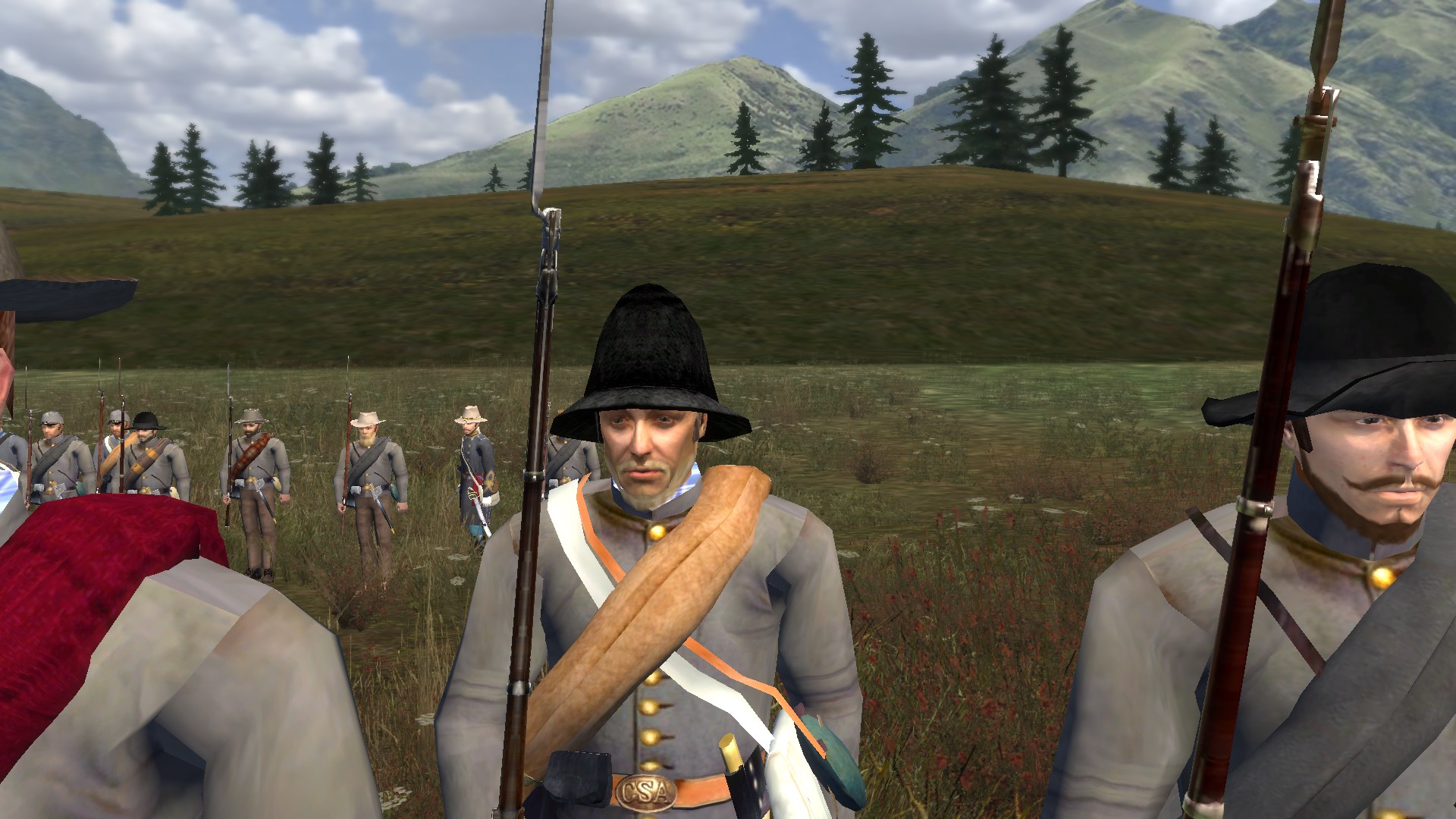
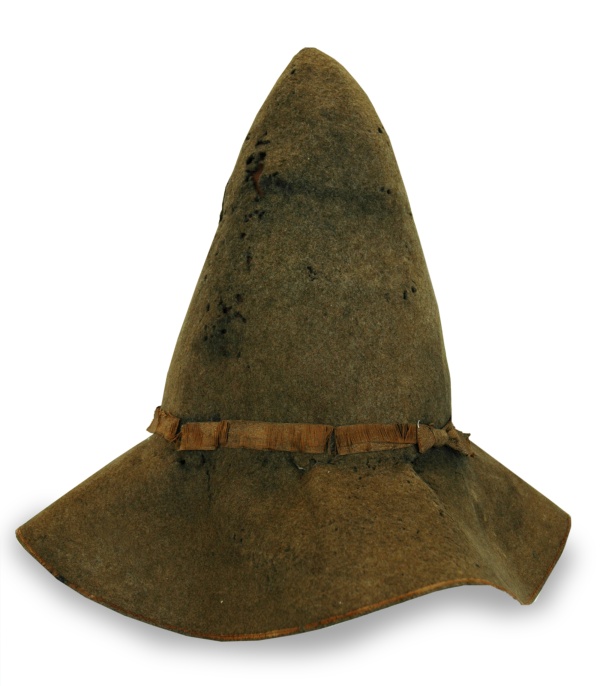
The Confederate Louisiana Zouaves and Wheat's Louisiana Tiger Rifles will have a new straw hat added to their variety of headwear as well.
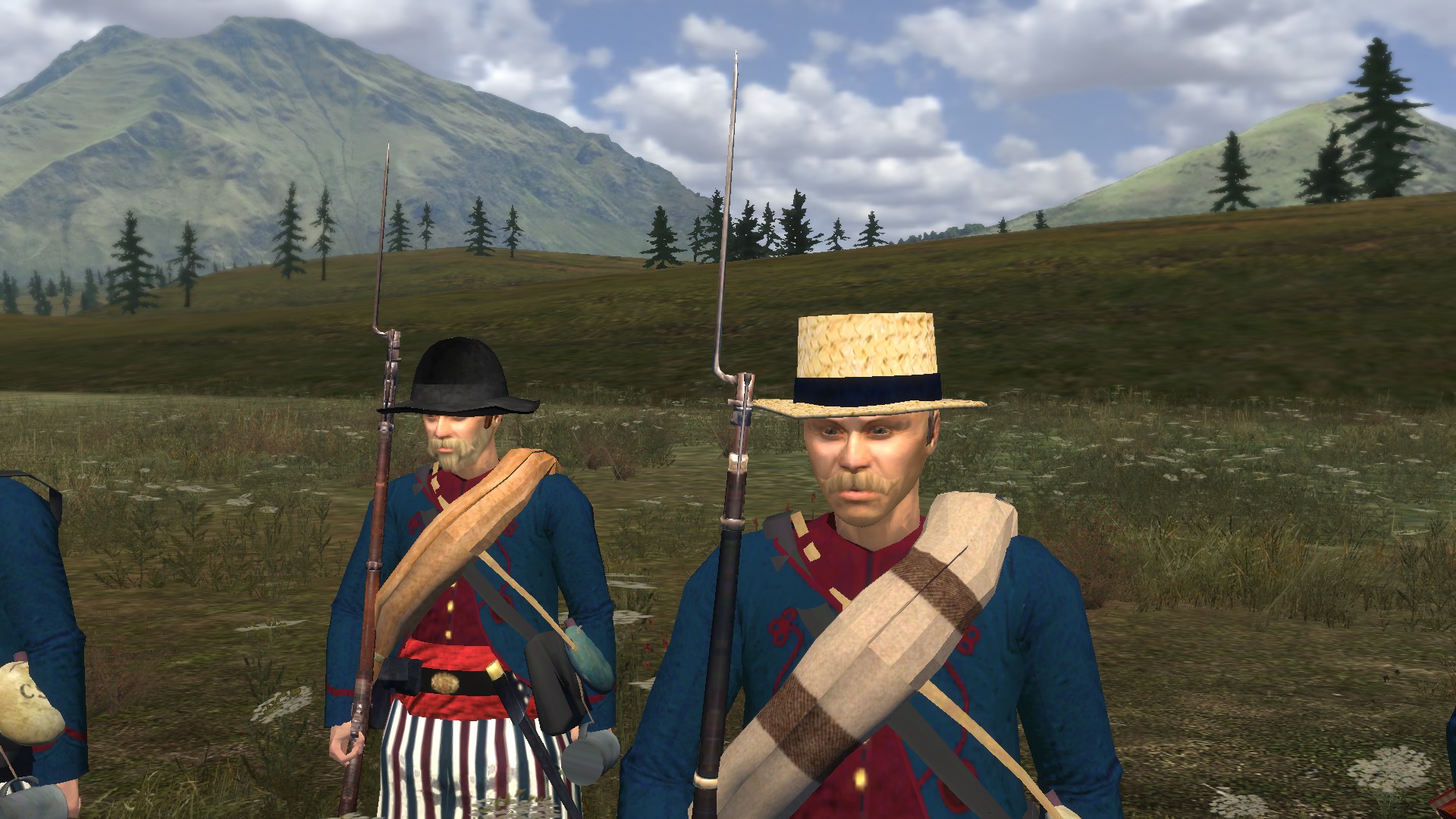

The last new hat is a tall officer's hat for the Union, based on an example seen being worn by some Union generals in photographs form the war. It will be included in the variety of hats Union officers wear in the game and some of the generals wear one one as well.
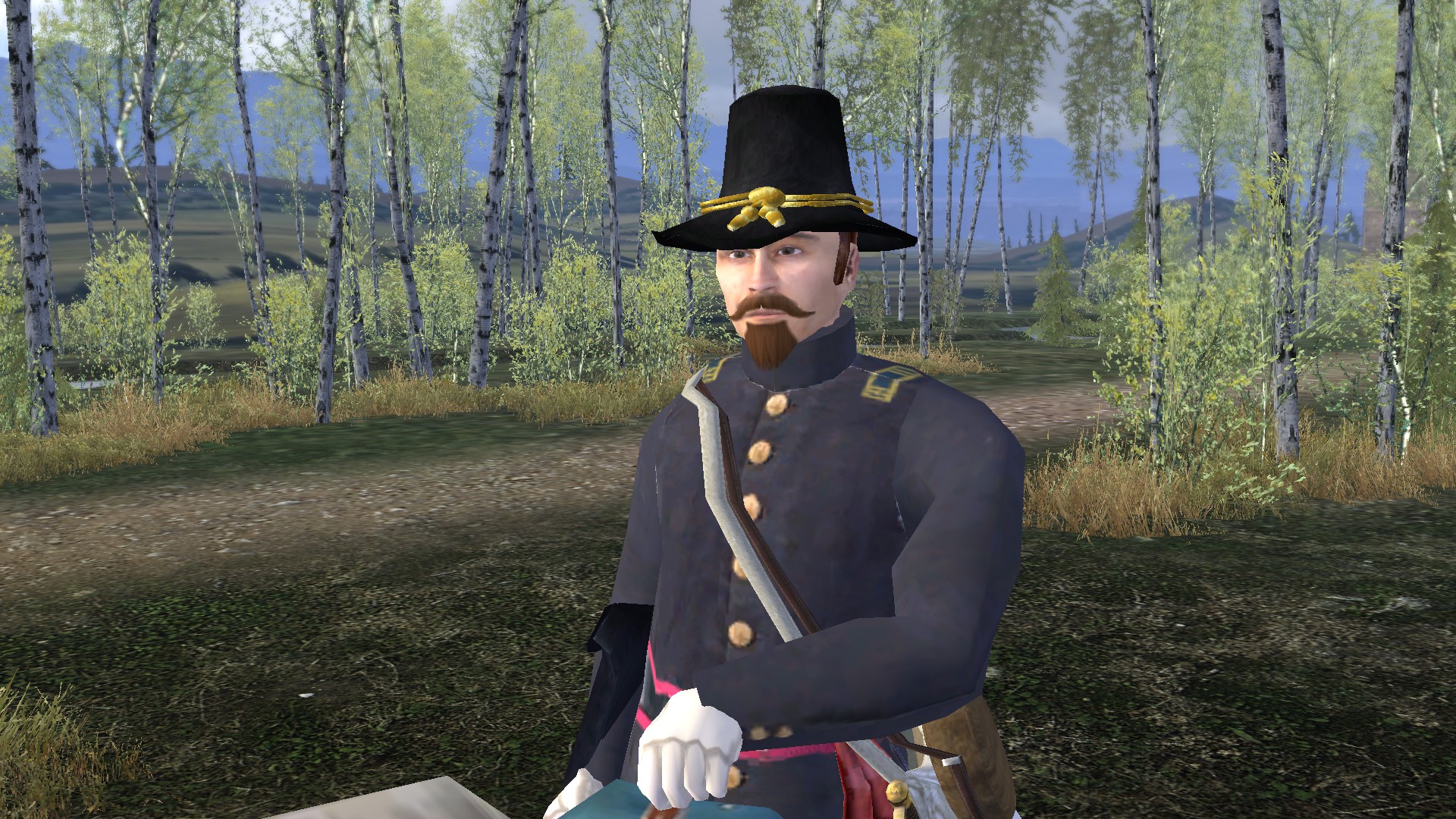
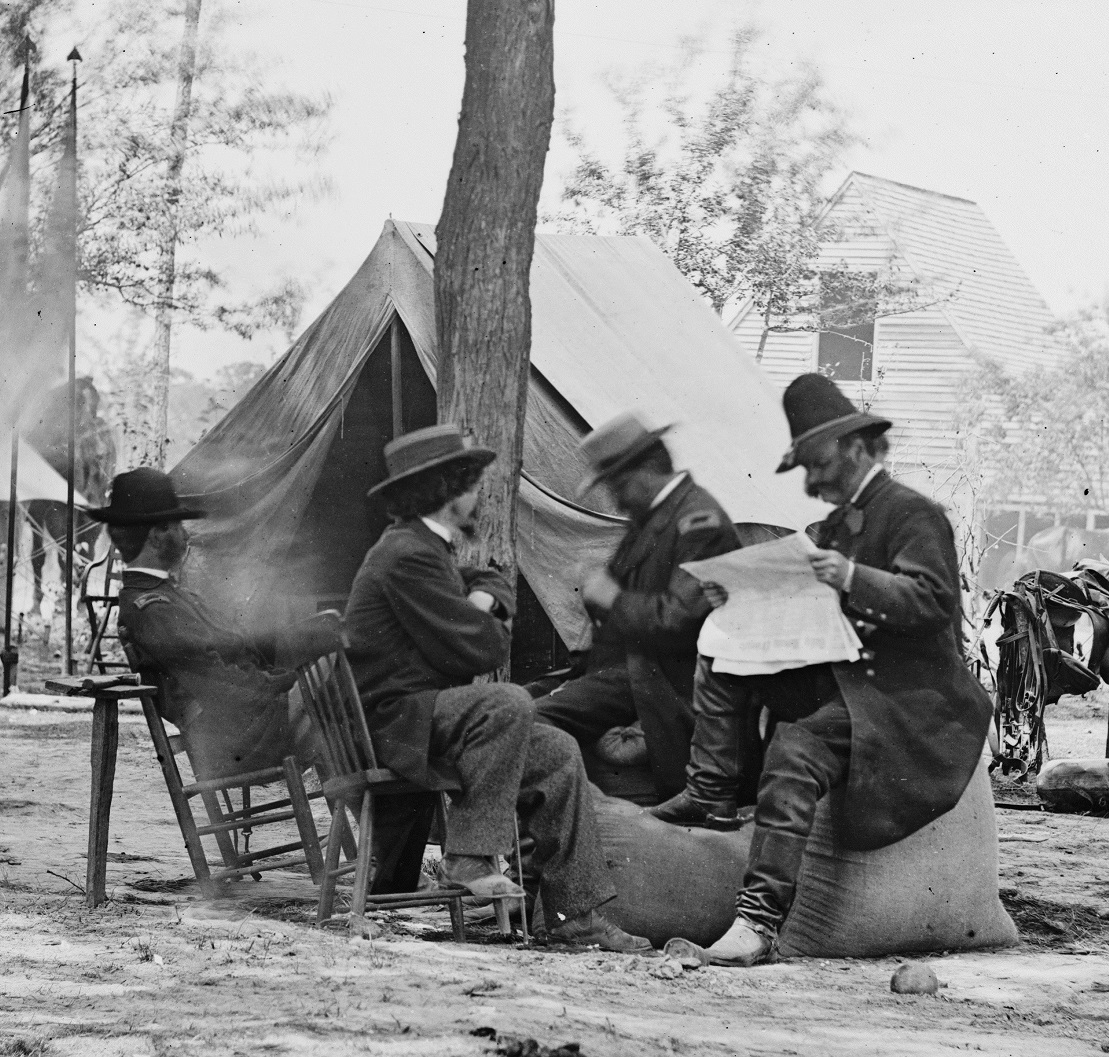
Hardtack
Hardtack is a simple type of biscuit or cracker made from flour, water, and sometimes salt. Because it is baked until it is hard, it can last for years if kept dry, and the low cost of ingredients made it cheap to produce. Along with salt pork, hardtack was a standard ration for many militaries and navies throughout the 17th, 18th, and 19th centuries. During the American Civil War, 3x3-inch hardtack was shipped from Union and Confederate storehouses, however much of the hardtack had been improperly stored and was prone to insect infestations. Some of this hardtack had even been stored and left over from the Mexican–American War. Civil War soldiers generally found their rations to be unappealing, to say the least.
We have added crates of hardtack to the mod which come in units of 100 and provide your party with +1 morale. They are also extremely cheap, only costing $20 per unit of 100. Of course the price may vary slightly, depending on the level of your character's trade skill. These are actually a very convenient food source in game, because you can have several of them or more in your party's inventory and have enough food for a long time. It will, of course, not make your men very happy to only eat hardtack, so always be sure to provide a little more variety in their sources of food.
Recruits Wanted!
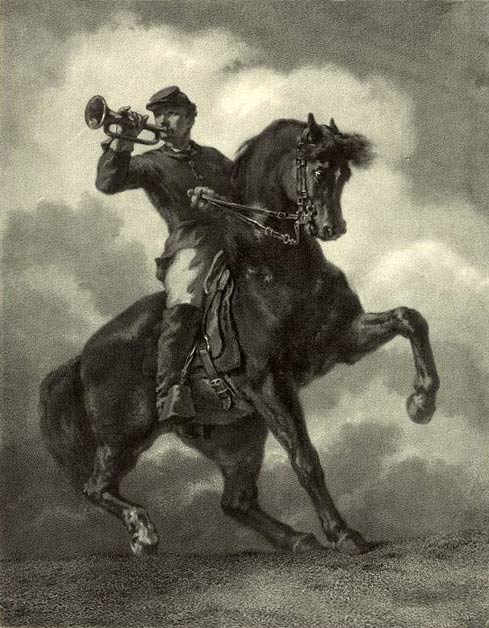
We are still looking for someone to join our team who is skilled with creating and editing videos. You don't need to be an expert, so don't be shy about contacting either myself or Matsuri5. We are more concerned with finding an extra pair of hands for the visual media side of the mod. Video editing can be as tedious and time consuming as creating the mod itself, so having a person dedicated to that work would mean that we can keep working on the mod and have videos that show gameplay too, without sacrificing development time. Photos can't capture the true scale of the experience of the mod, and a well made video recording of the gameplay would really help show it at it's full potential. The two trailers we do have on Moddb right now are only unit previews and only the most recent one shows a small teaser of combat. Any help with this would be greatly appreciated and would be a huge service to the mod and it's players.
We are also still looking for a skilled animator, who knows how to create new animations for Mount and Blade: Warband, as well as get them into the game. If you have any experience with this, or know anyone who does, do not hesitate to let us know, we would be very eager and very grateful to have the assistance.
Donations
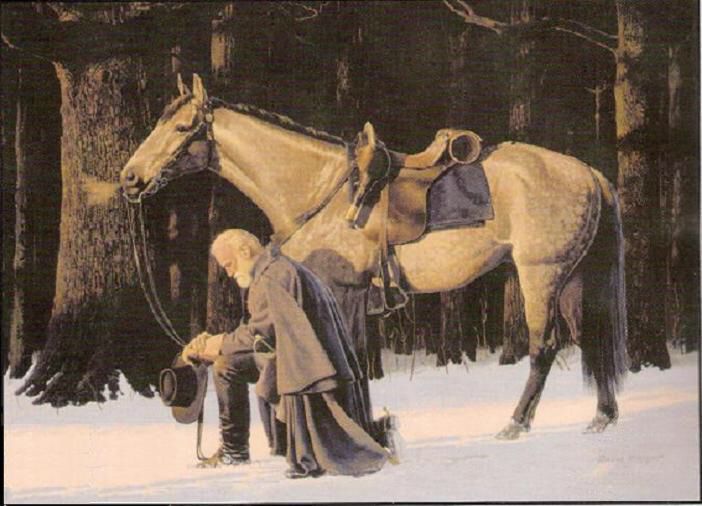
Those of you who have followed our development since the beginning are likely aware that we originally did not want to accept any donations for the mod, as we feared the involvement of money might go against the charitable spirit of making a mod, among other reasons. However several members of the community have graciously insisted on providing us with their financial support, and for that we are incredibly humbled and grateful. We also have come to understand that there is great enthusiasm amongst the community to help this project, but not everyone can necessarily provide technical help, yet they still wish to support us and show gratitude in some other way beyond words. In respect of their wishes, I have created a PayPal account so that anyone who would like to support us in that way may do so. Your financial support truly does go a long way in helping us, as myself and Matsuri5 are not a professional development team, we are just two guys with a huge passion for history and video games who are eager to learn, and to make the American Civil War Mod: Revived into something really spectacular.
The American Civil War Mod: Revived will always remain 100% free. We have absolutely no intentions of withholding anything from anyone who does not donate. There will never be any charge to play the mod or access any of its features. Any payment is completely voluntary, the PayPal account is more or less a virtual tip jar, for lack of a better term. If you think we deserve it, you are more than welcome to donate however much you want. Since this is our hobby and we love what we are doing, work on the mod will always continue regardless of donations, as long as it is physically possible for us to keep working.
If you would like to donate to support us, please follow the link below:
That's all for now!
You can read more about what this update brings in the changelog that will be provided in the mod package, and it will also be displayed on the download page. There is much more than what could fit in this article, so be sure to catch up on what's new. From the bottom of our hearts, we thank all of you for your kind words and your continued support. All of your help fuels a dream come to life, and a part of our shared human history made real. We look forward with excitement to even greater things to come!
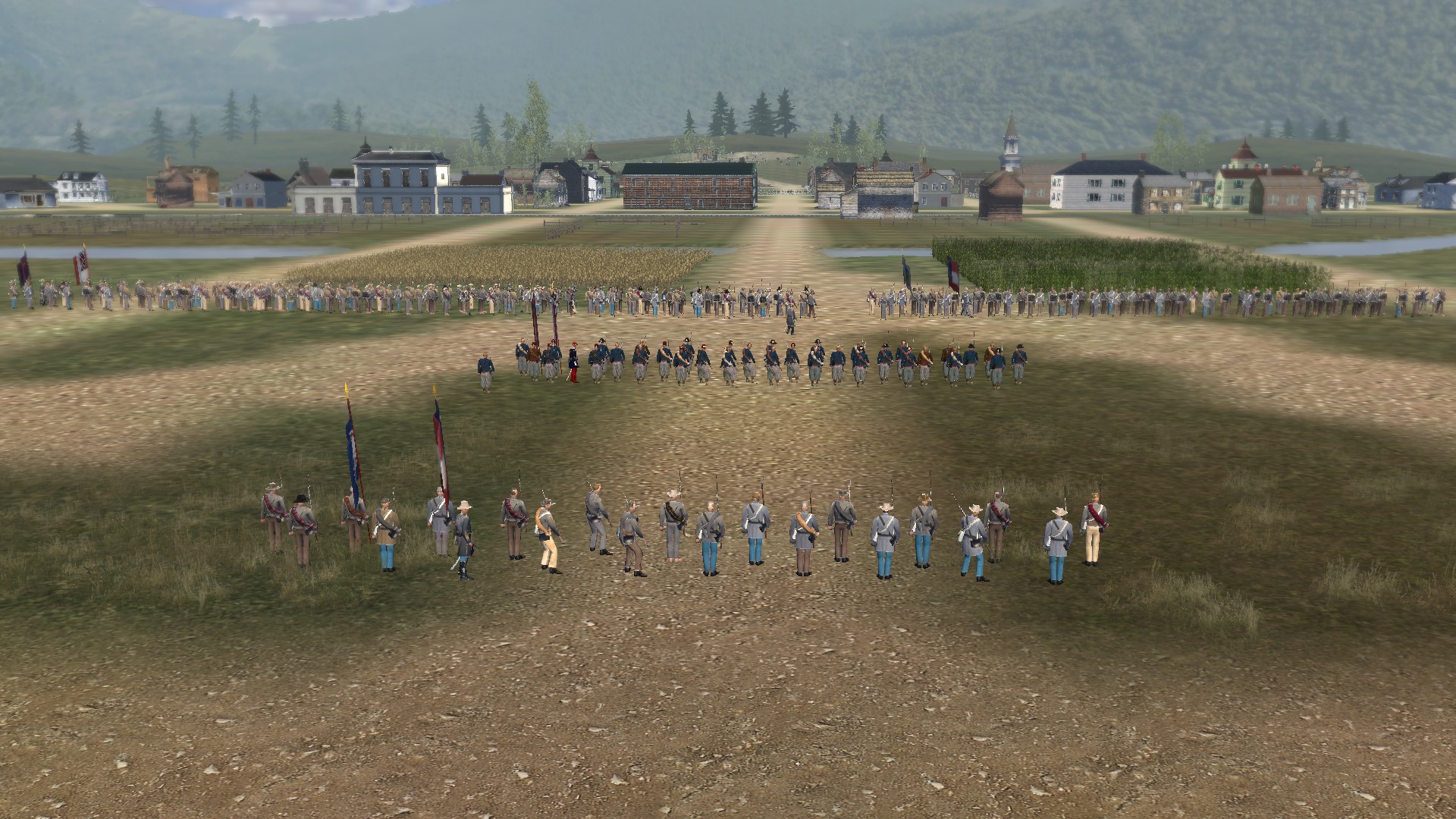

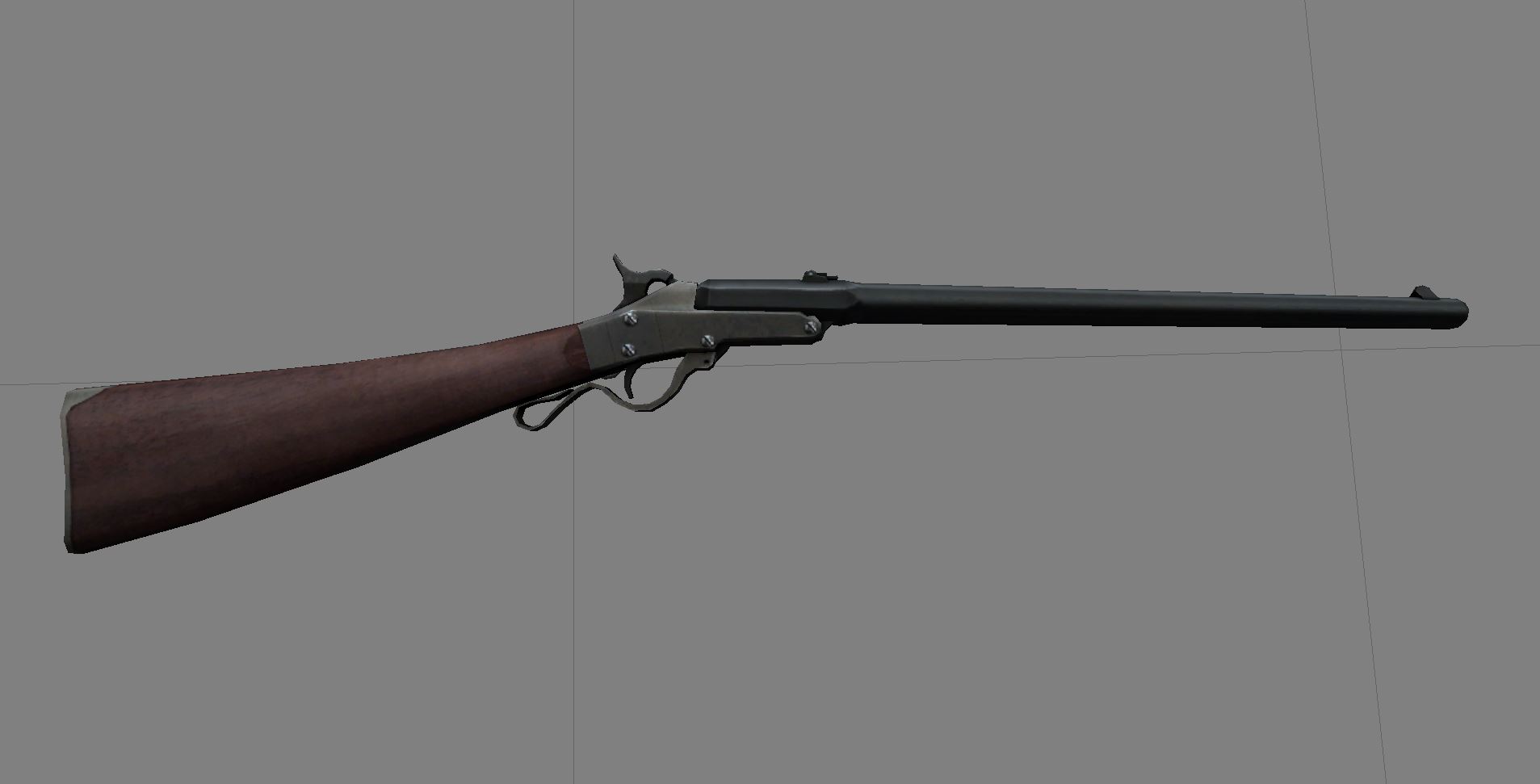
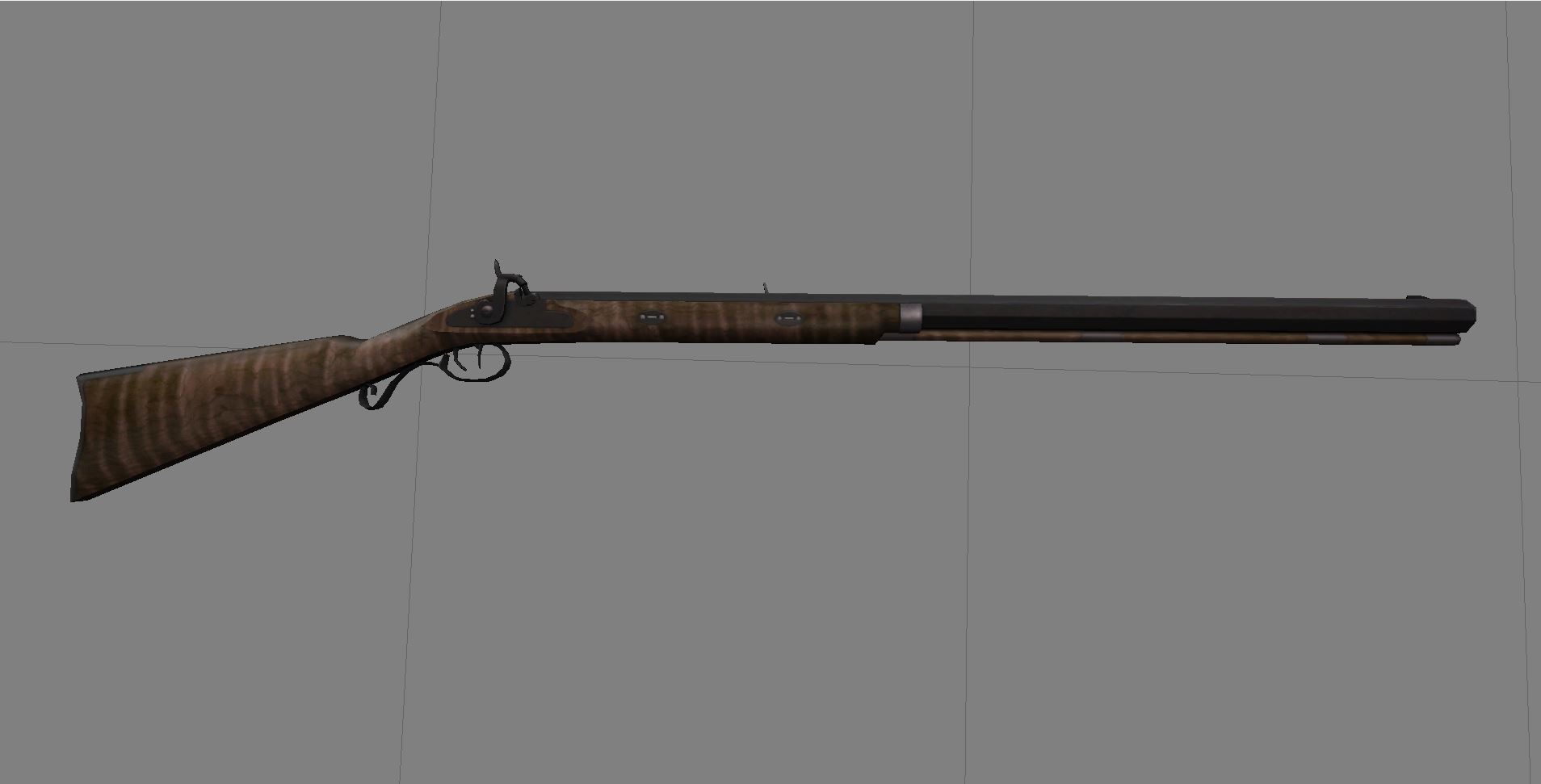
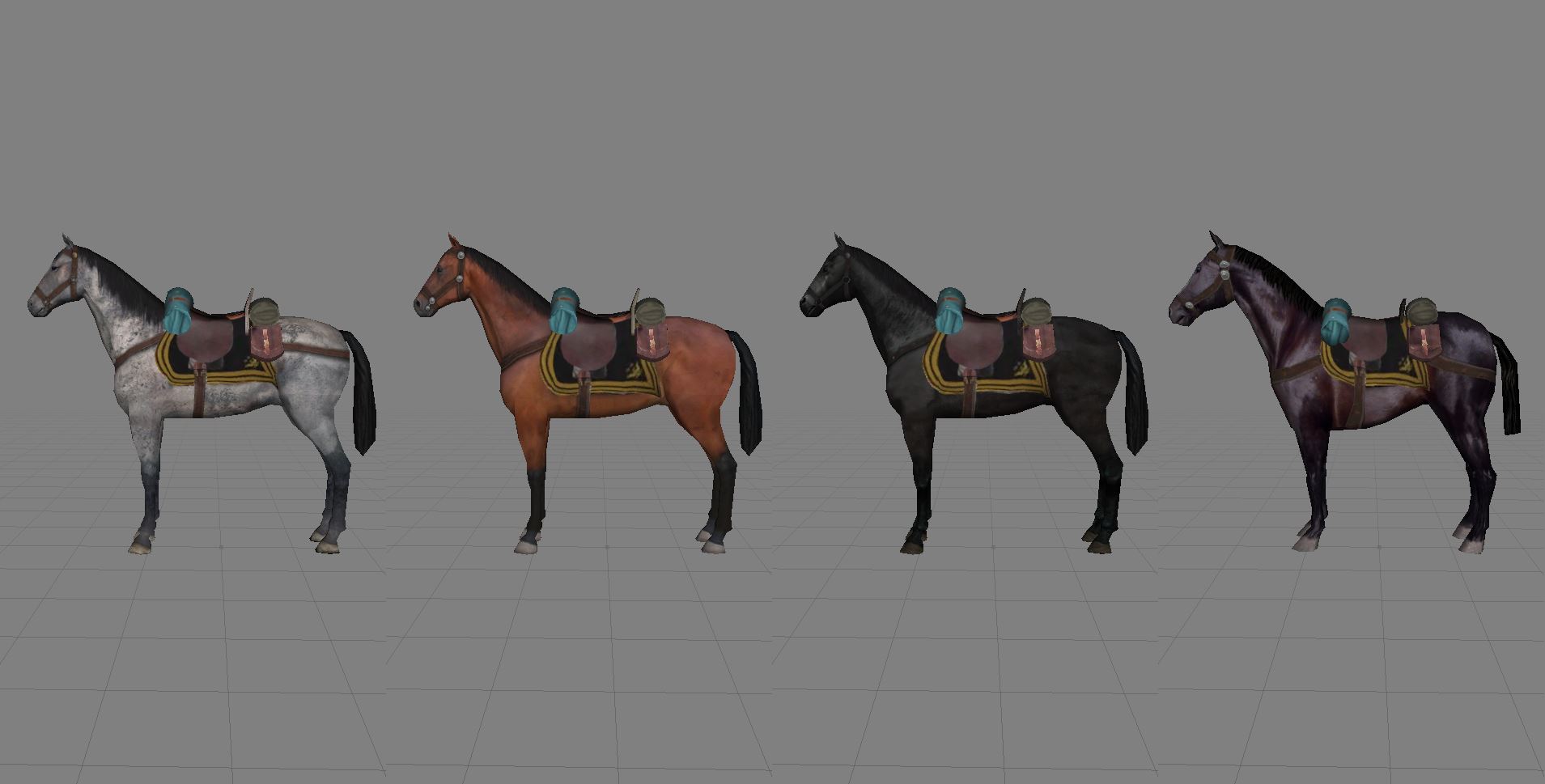
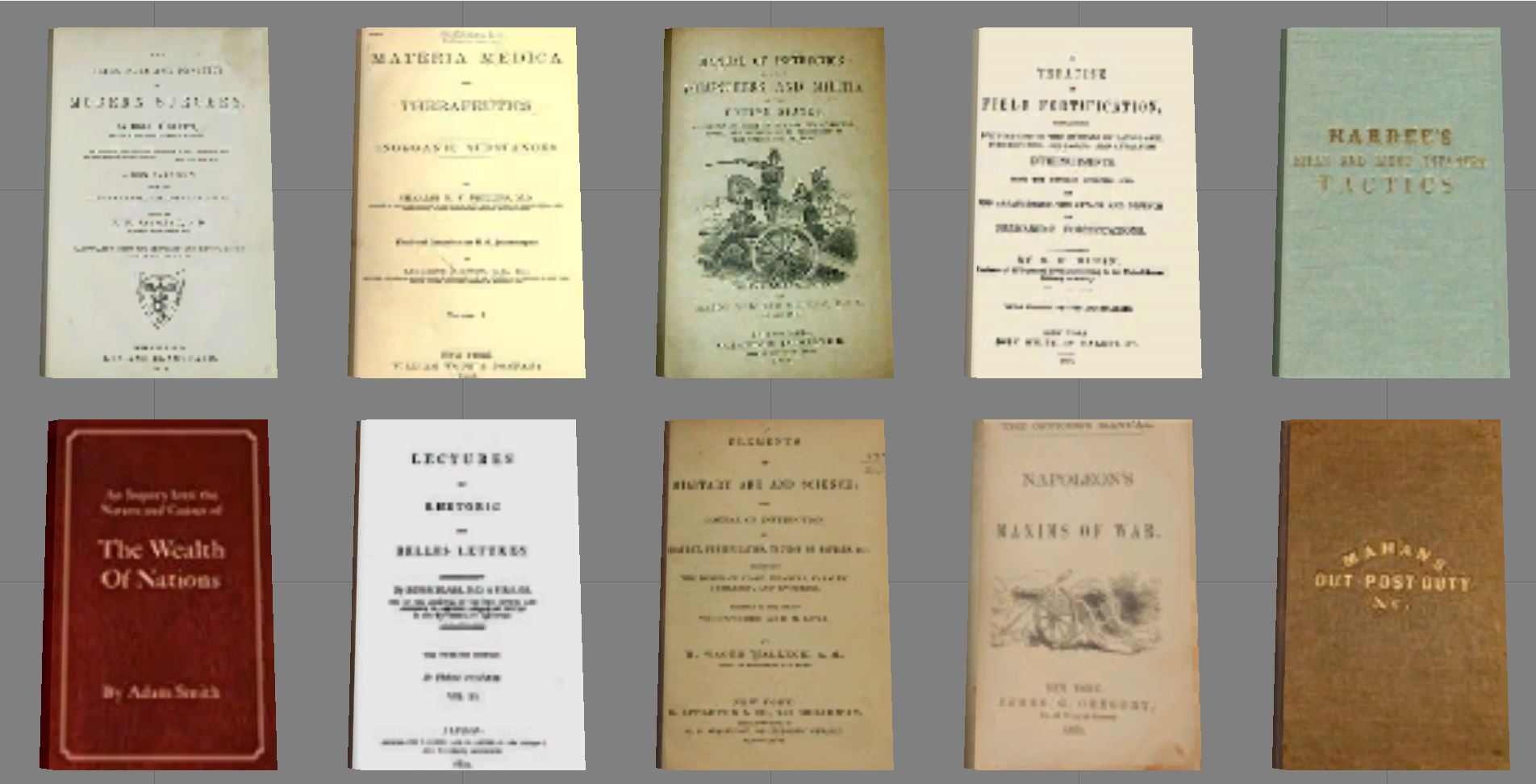
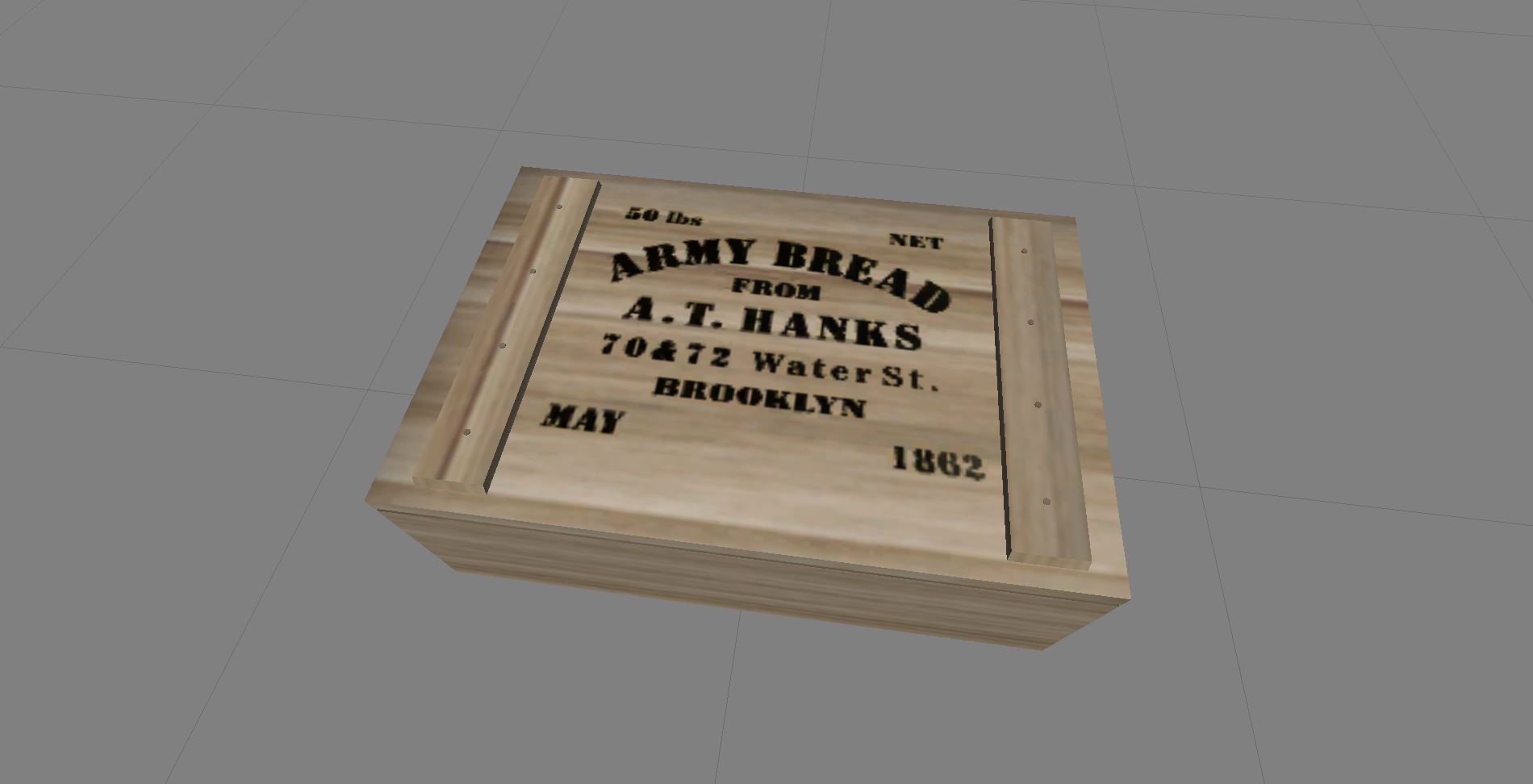


As usual, the efforts on mod progress and articles are outstanding. This mod kinda brings me back 7 years ago when 1860's Old America was the thing for singleplayer American Civil War. I would gladly donate but only if I could, I'm still a jobless student :D.
Thank you so much, it is always very much appreciated! :D
Don't worry if you can't donate, we are just happy the mod works and everyone is having fun. :)
I wasn't aware this mod was single player at all - how is it?
It's pretty good, if you ask me. But I might be a little biased lol. Check it out and see how you like it. :)
Never seen so much custom models in Warband (did you pillage sketchup 3D warehouse? XD), this mod looks ambitious and quite nice. I appreciate the historical side in uniforms&lore;! I hope i have time try it one day.
a few indeed come from license-free online depositories, tho these too still had to be adapted for the port to warband.
the vast majority of new props and buildings are own creations tho and we attempt to stay as close to history as possible.
Each of the new buildings is based on reallife civilwar-period counterparts, mind a few details.
Nice u admire my work, but it's a learning curve, there is more included than is shown here and more to come, which should only improve as work continues.
Hope u enjoy!
And there you did it again! =D
I'm really greatful for the massive amounts of work, that must have gone into this mod.
The new city-looks and the new battlefields look great and the new additions of troops are awesome as always.
Thanks Rotz! Glad you like the mod, always nice to hear from you. We appreciate your compliments very much. Enjoy! :)
So i'm crashing near the north east part of the map when ever i'm knocked unconscious or the last enemy is killed
EDIT: i was wrong about the last enemy part, it crashes completely randomly north east of Lexington and most places past it. It might not have anything to do with location either but i started in the west and didn't crash once during combat there. Maybe it's a unit or save thing?
What type of enemy were you fighting? Any clues you are aware of as to what may cause the crashes? For example, what happens at the moment it crashes, and is there a pattern between them? Are the crashes consistent, or can you replay the exact same battle without crashing a second time? Any unusual party members or equipment? Hopefully we can narrow down the possibilities and figure out the source.
It's always been confederates and confederate deserters. The only strange unit i might have is some regular farmers and peasant women (i recruit any one i save). I also have multiple other modules but i don't know if those can interfere at all.
edit: i just remembered that it doesn't crash in fort battles for some reason, but it will crash in towns and in the wilderness. And the crashes seem to happen when a certain confederate unit is killed but i don't know what unit it is and i'm not certain that's actually causing it
edit 2: it happened when i was fighting Indians so i'm assuming either my game is screwed up or it's a unit of mine
Try deleting the mod entirely and reinstall it, then start a new game. That way you can try again with a clean slate and be certain it's not an issue with either the installation or your save file.
why do the Indians have fortresses like vanilla? they only villages and houses made of simple straw
they r a wip still, next update a bunch of their locations will be fixed up
we're still making some new props for those
when will the new update be available??
Patience. We just released this current update a month ago. Maybe sometime during the summer or at the end of the season there will be another update. These things take time, especially making new scenes.
So i think u dont know that worlds largest castle gate is in India in agra
impressive indeed, what about Mehrangarh ?
but we're talking about native americans in our time period,
for sure
I got crash alot using this mod. But it fun anw.
Where did you experience crashes? Would be helpful to know so we can try to fix it.
Do i need Napeleonic Wars DLC or others?
No, only M&B: Warband is necessary.
Love the MOD and the music that plays although I find 1 piece of music missing which happens to be iconic. "I wish I Was In Dixie" is very famous CSA piece of music, I would love to see that added into the game.
you are a hardworking and generous modder, thank you for that